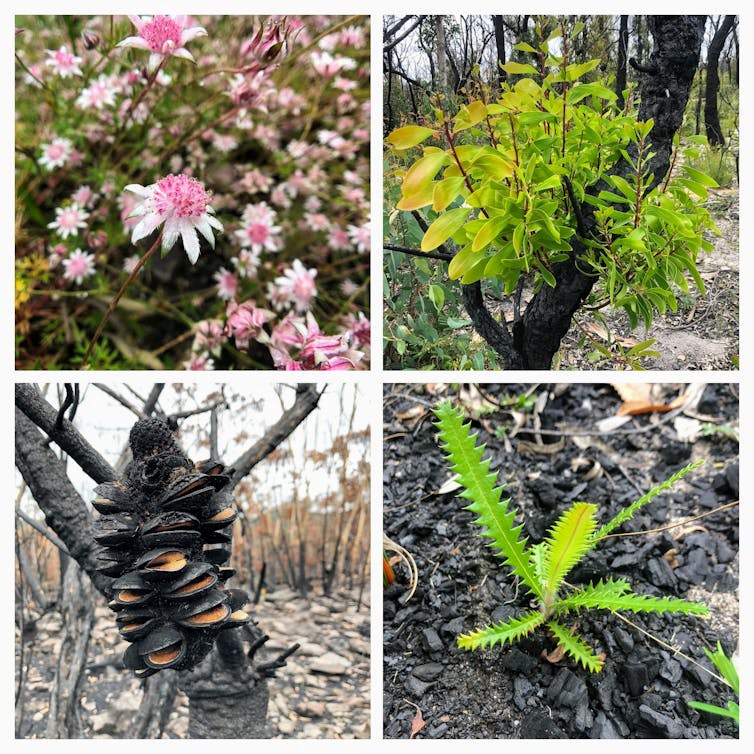inbox and environment news: Issue 512
October 3 - 9, 2021: Issue 512
Ingleside Precinct Update: Alternative Proposed
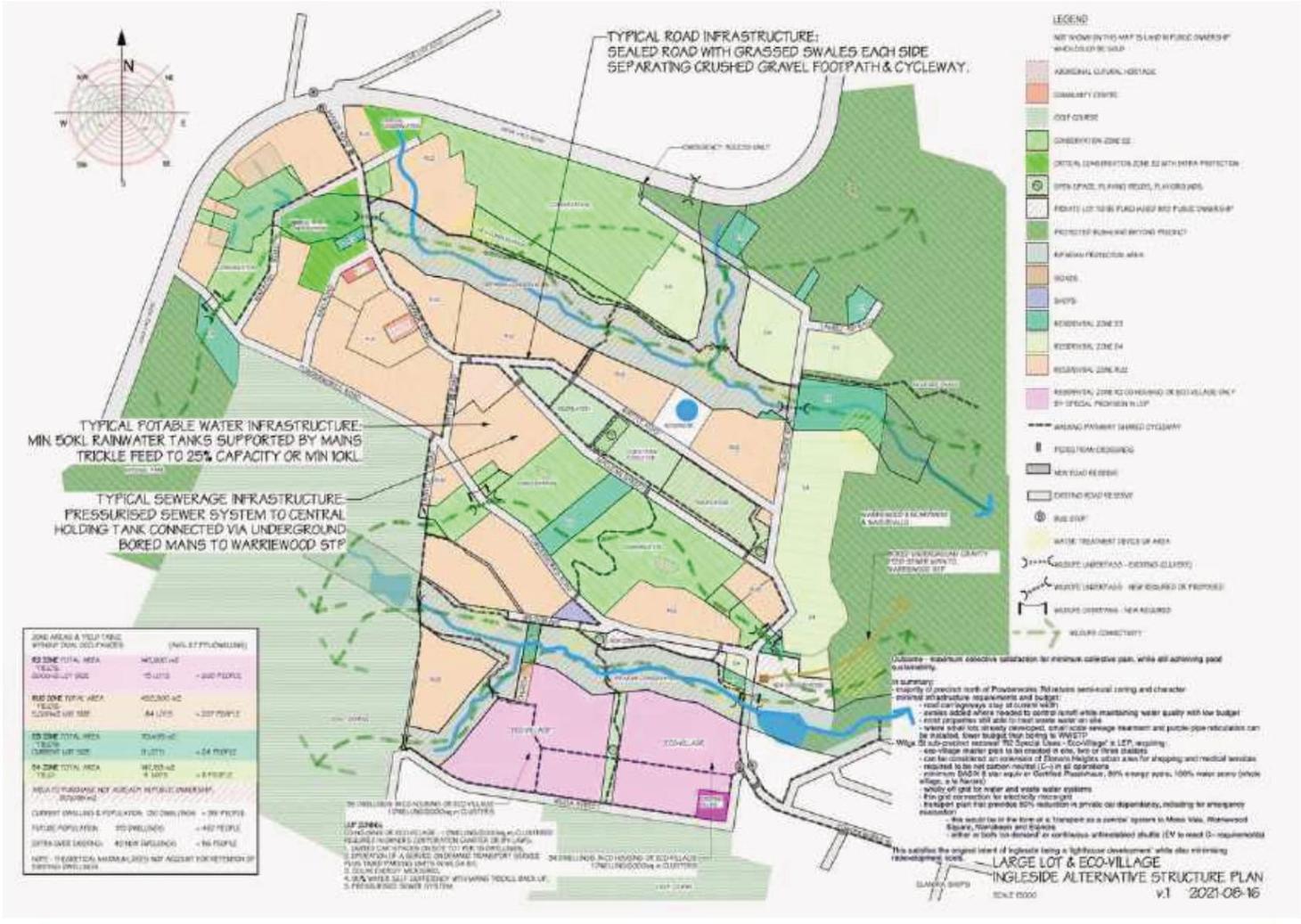
Watch Out!: Baby Birds Are About In Warriewood Wetlands
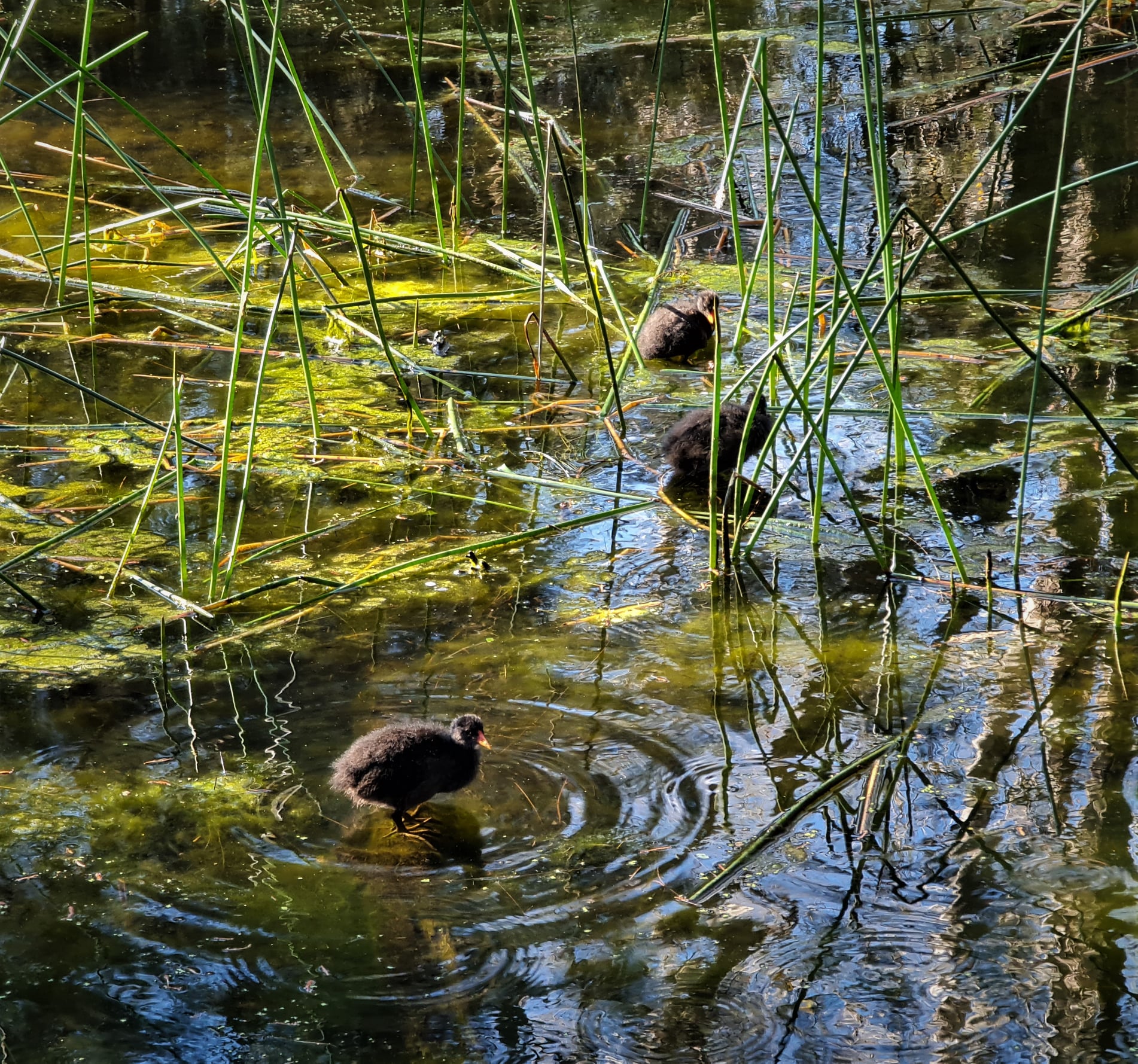
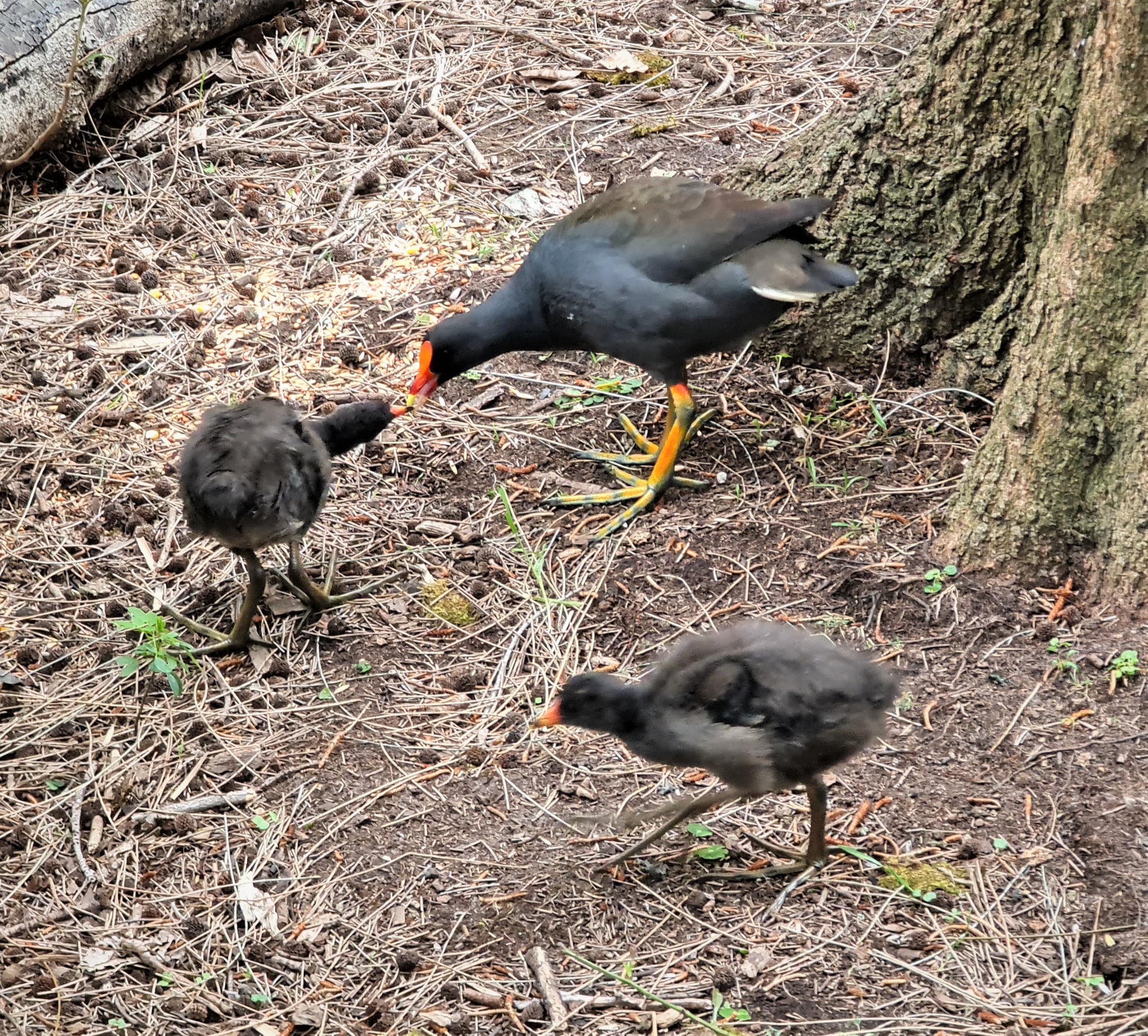
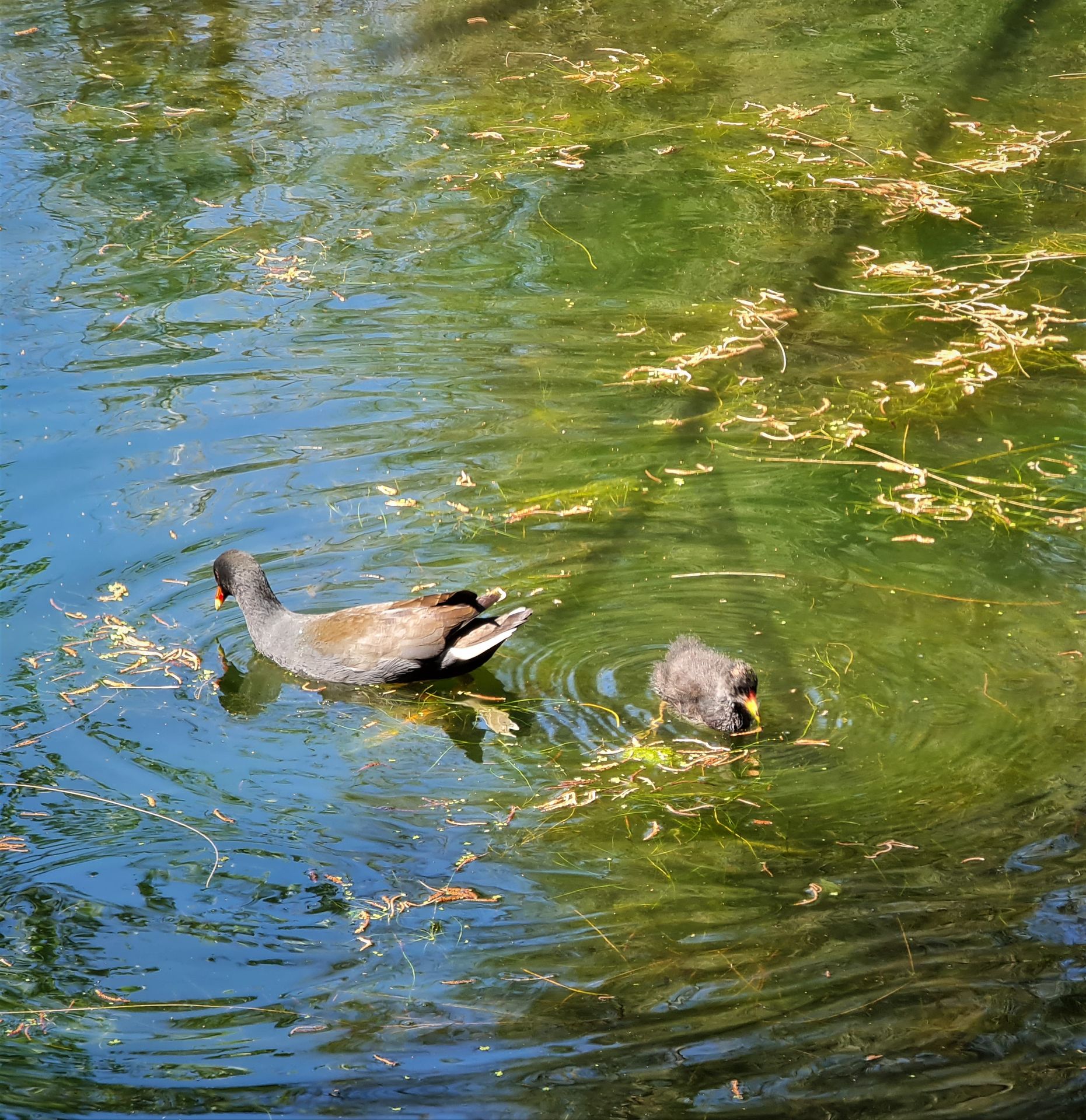
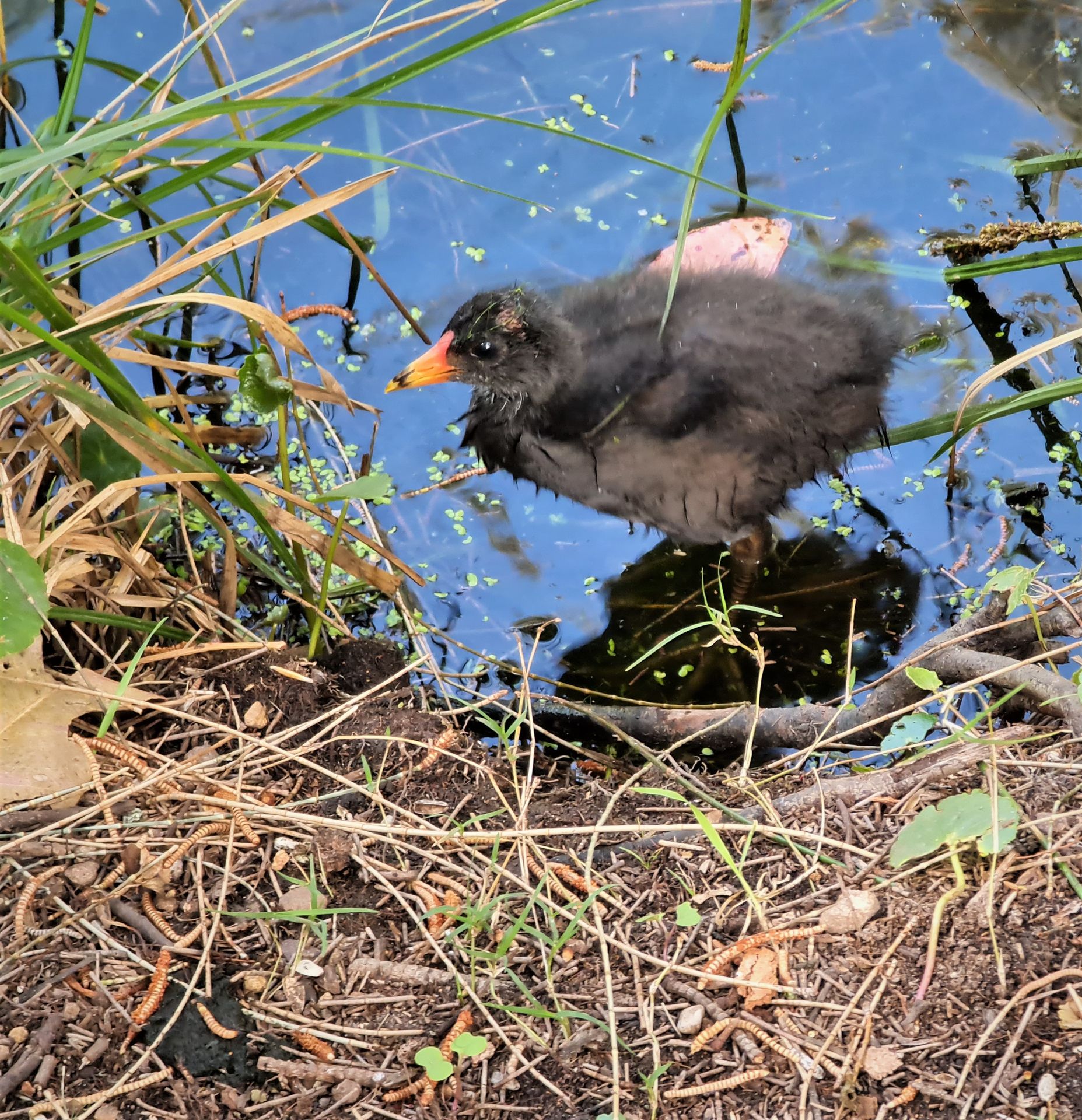
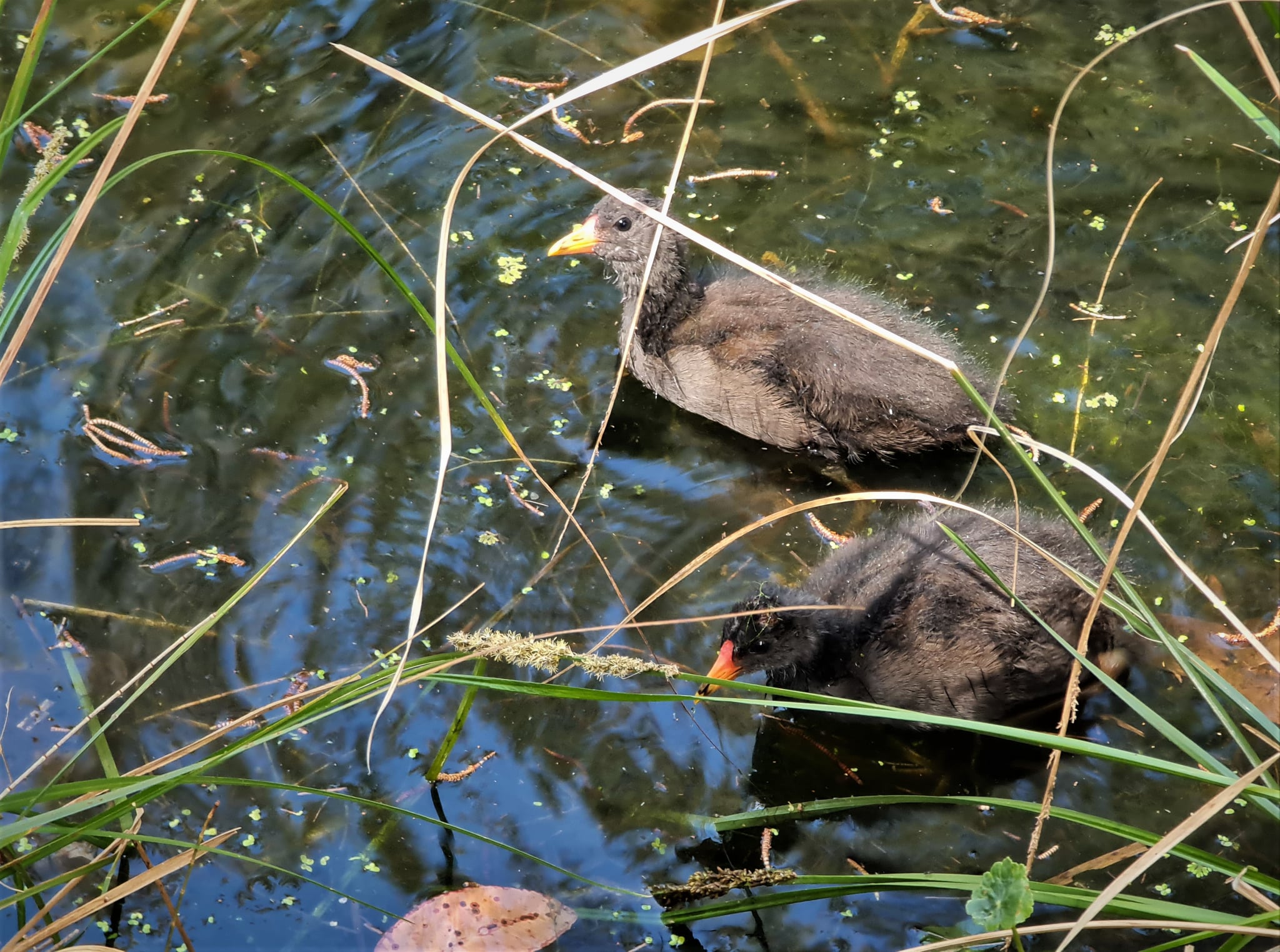
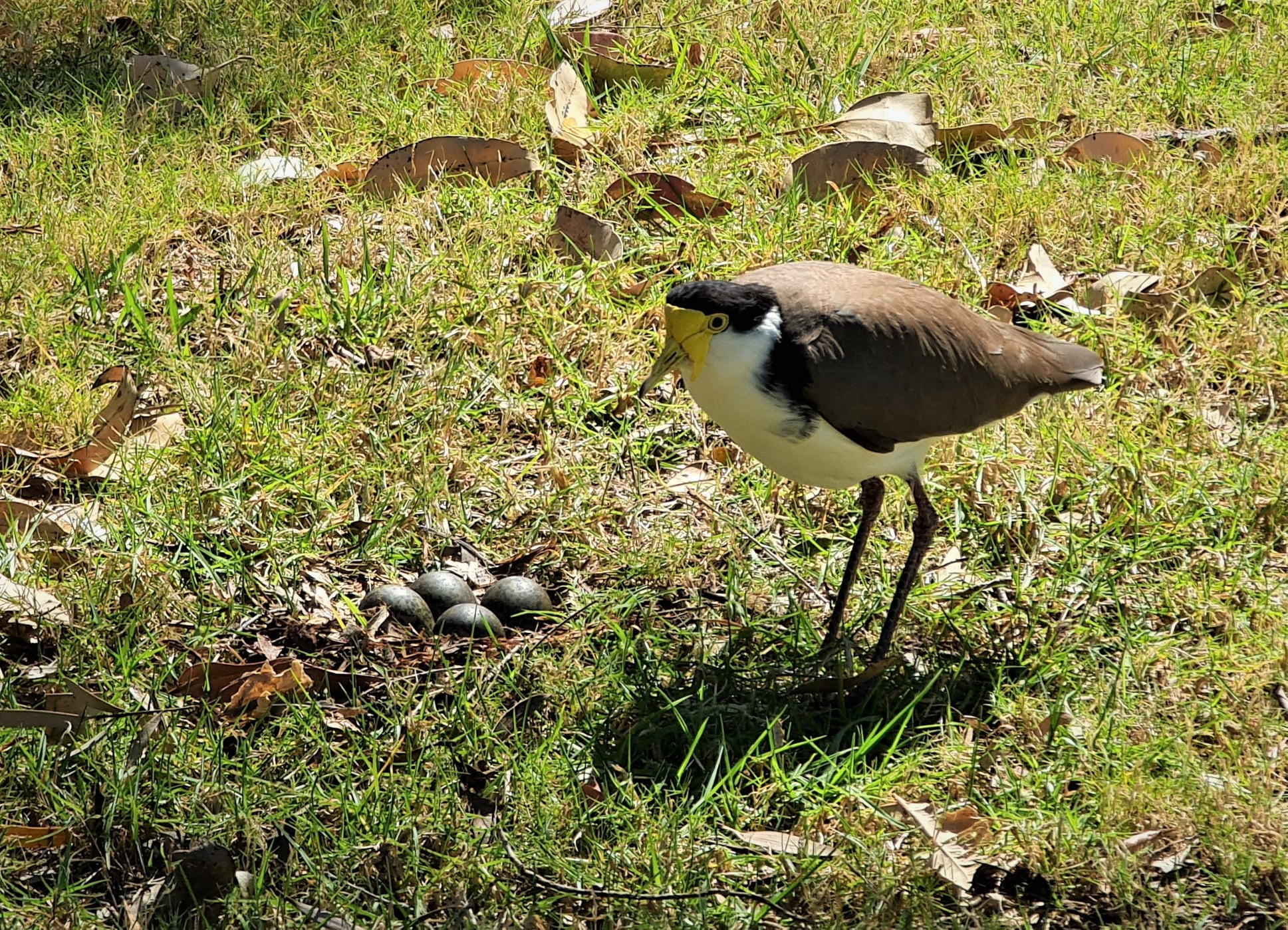
Protected Pittwater Spotted Gum Poisoned In Palmgrove Road
Crescent Reserve Newport: Vandalism By Trail Bikers Destroys 24 Years Of Work By Volunteers
Trafalgar Park Newport: Erosion, Soil Runoff Post Concrete Path Installation
Avalon Preservation Association 2021 AGM
APA Careel Creek Sediment Removal Works Update
- - the removal of weeds, such as Phoenix palms with the need to reduce erosion of the banks of the creek; and,
- - the retention of mangroves with the need to permit adequate water flow.
- - stabilise the banks with indigenous planting;
- - replace weeds with indigenous planting; and
- - remove snags from the creek to enable water flow.
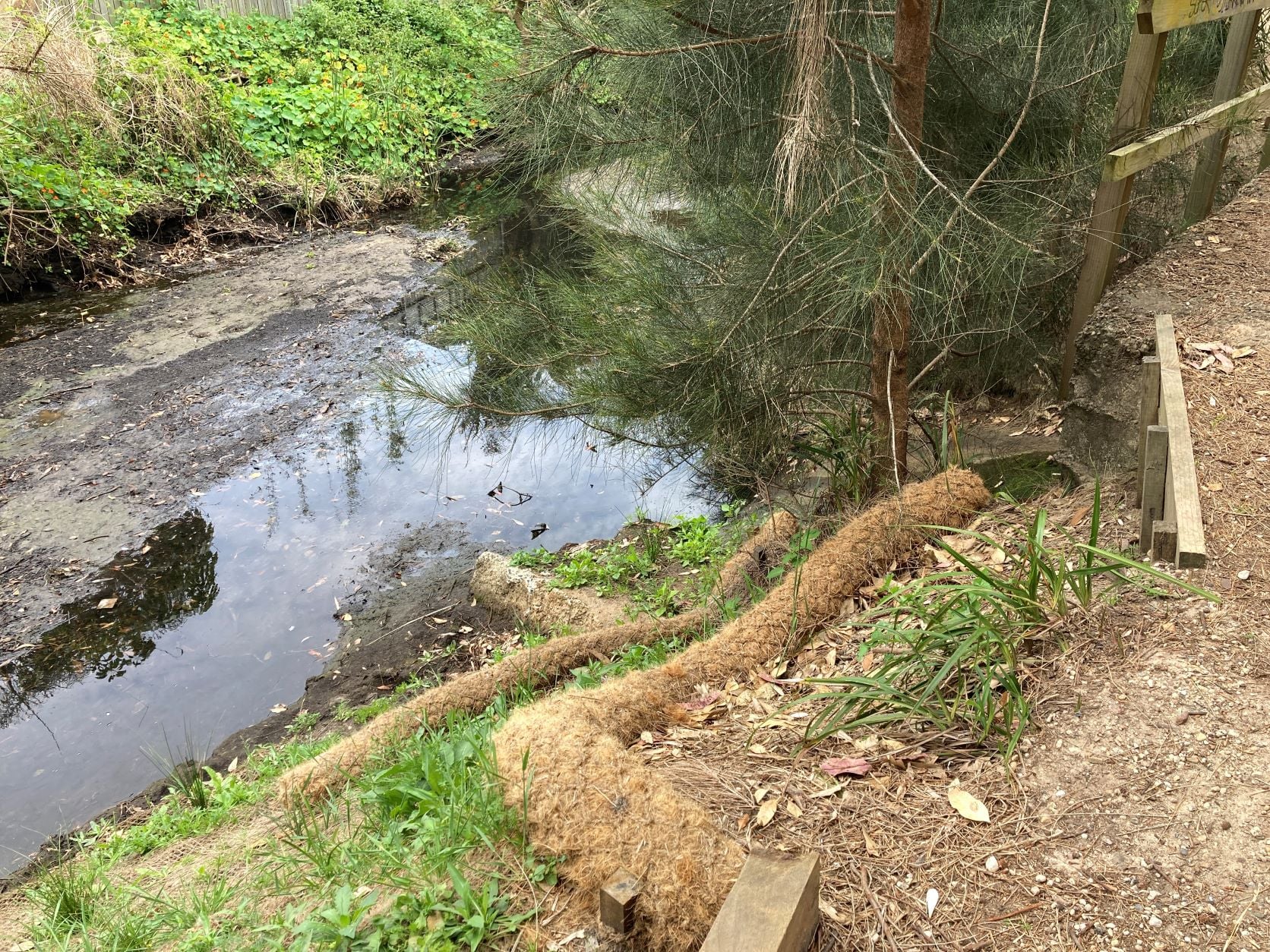
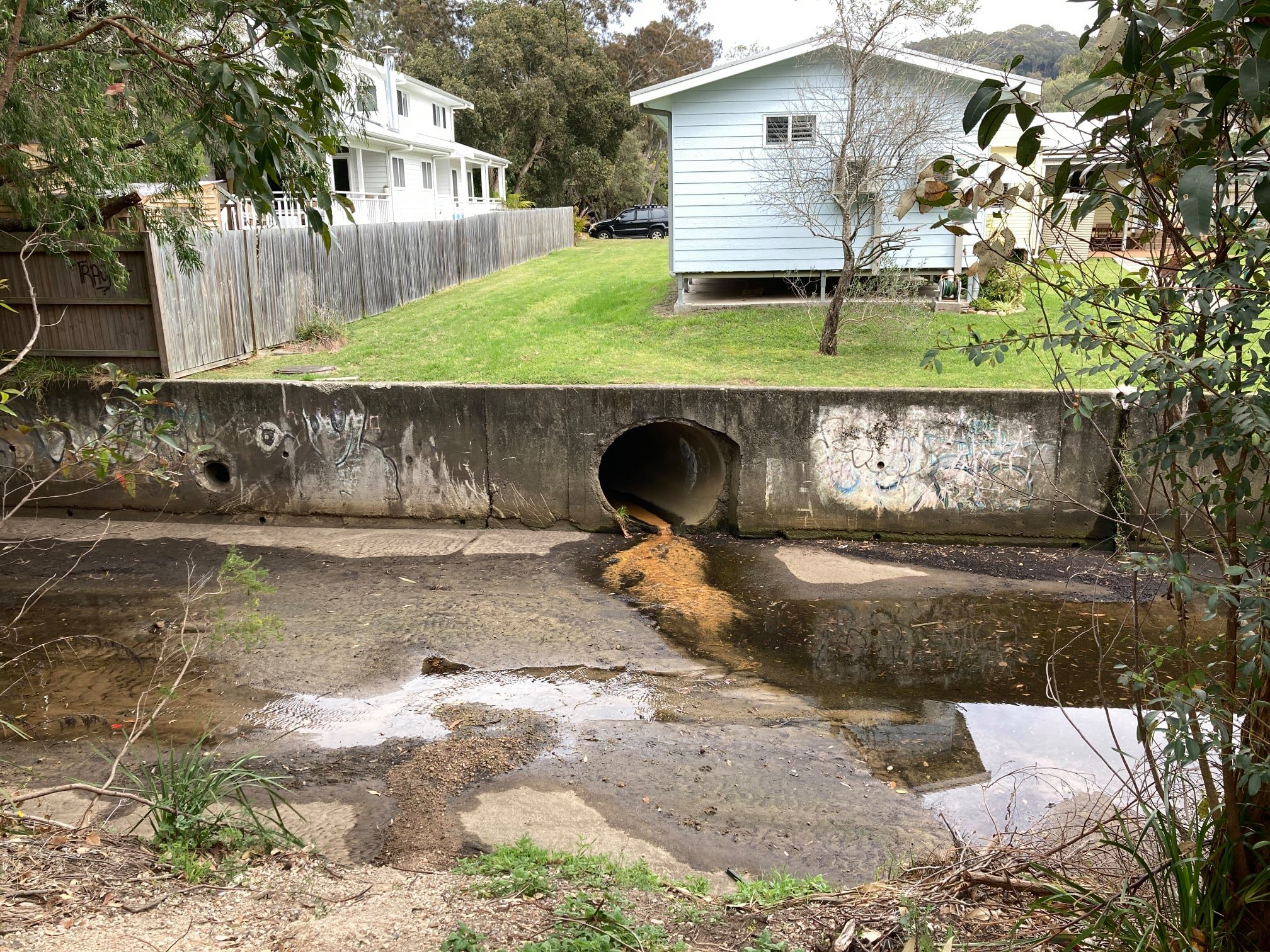
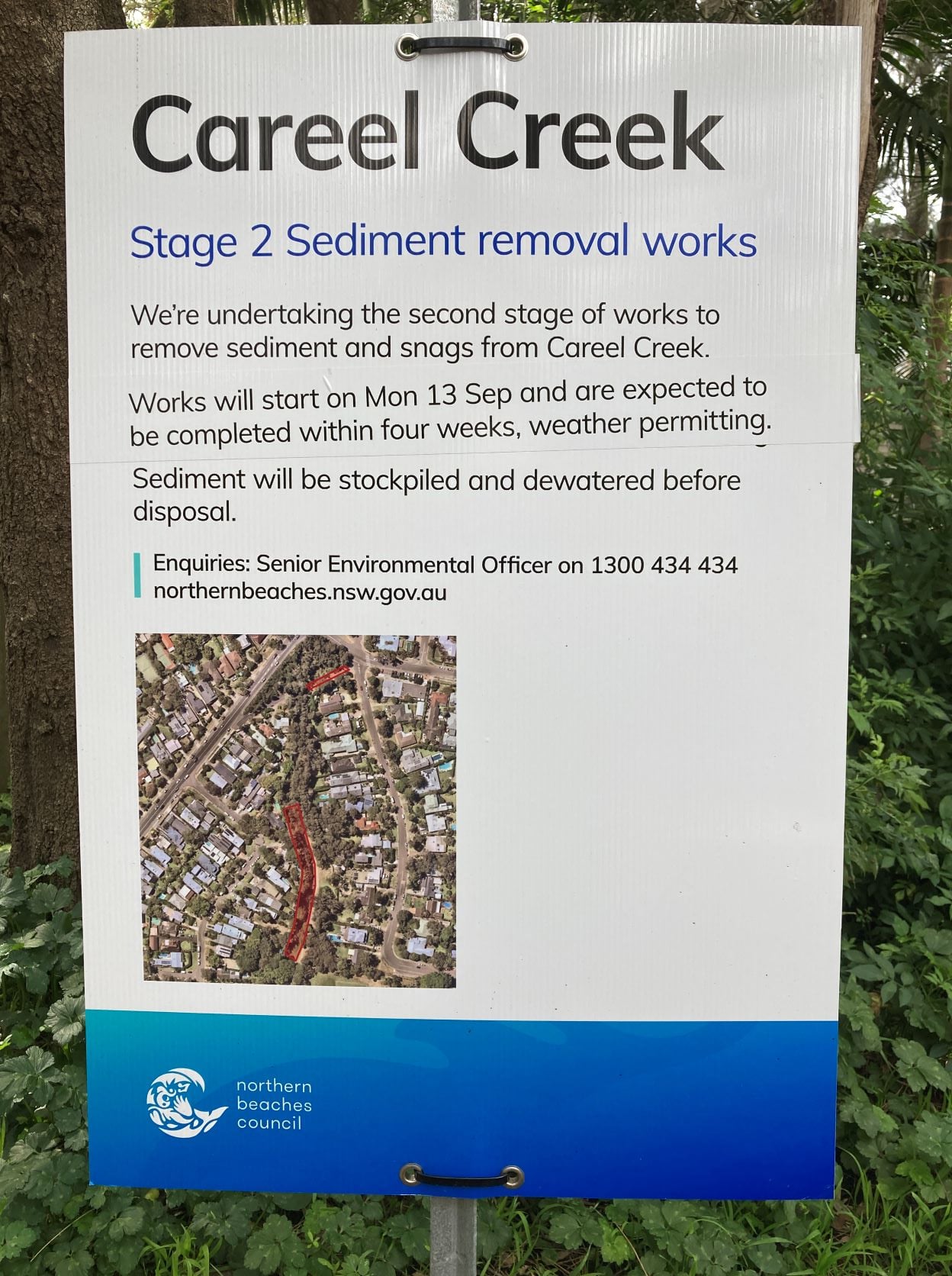
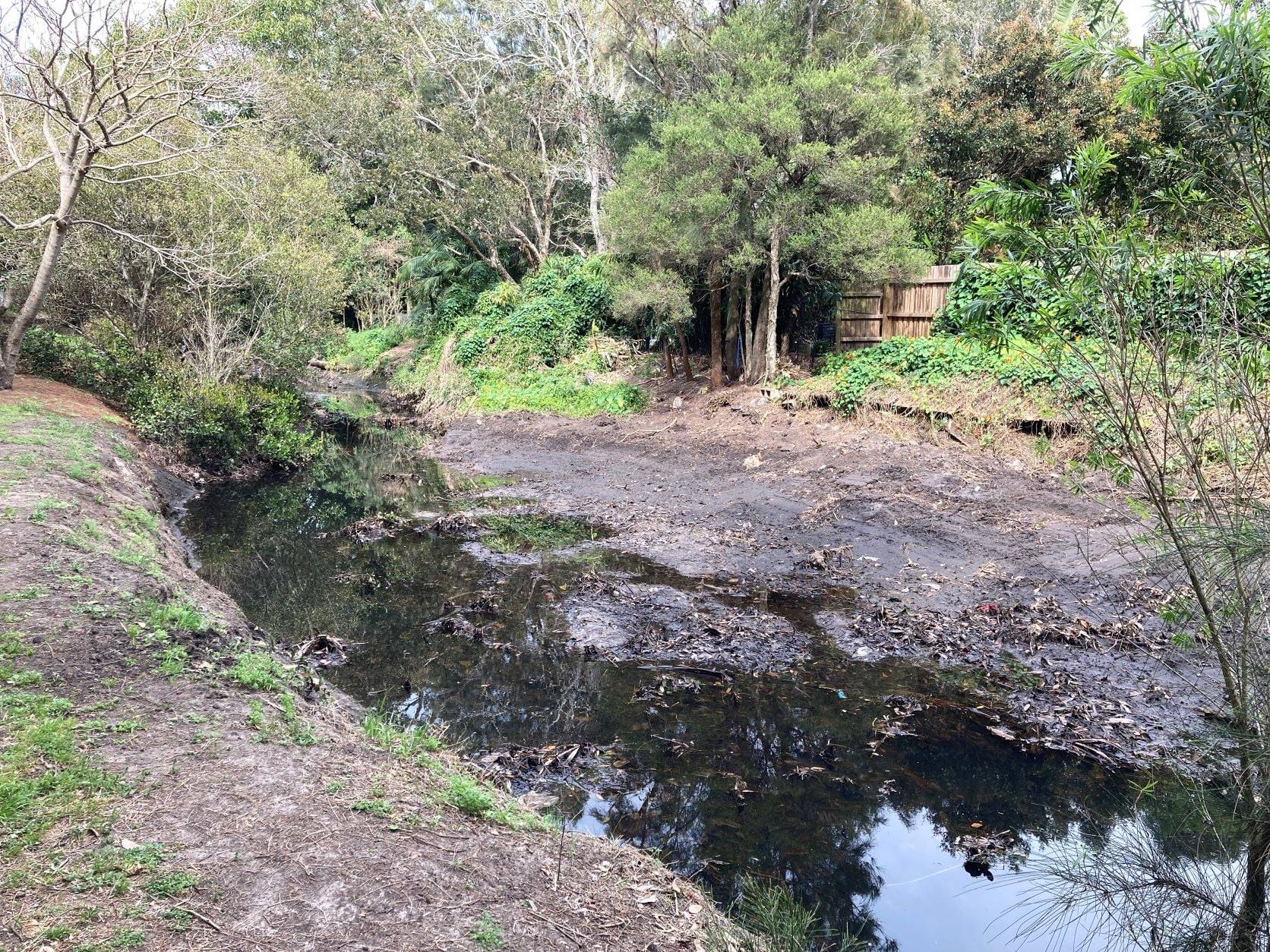
November 2021 Forum For Friends Of Narrabeen Lagoon Catchment: Fishing Bats And Water Rats (Rakali)
.jpg?timestamp=1631741816240)
.jpg?timestamp=1631741908384)
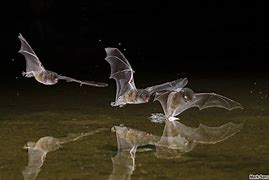
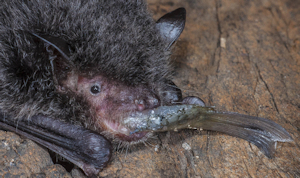
Migratory Bird Season
Baby Wildlife Season

Harry the ringtail possum. Sydney Wildlife photo
Save Sydney's Koala Update: Black Day For Sydney’s Last Koala Population
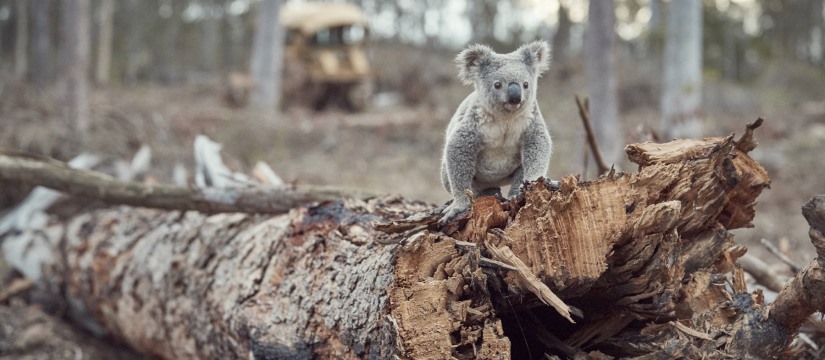
Point And Focus On Hawkesbury River For World Rivers Day
World’s Largest Shark Management Program Deployed To NSW Beaches
Aussie Backyard Bird Count 2021
The 2021 event will run from October 18‒24 during National Bird Week. Register as a counter today at: https://aussiebirdcount.org.au/
The Aussie Backyard Bird Count is one of Australia’s biggest citizen science events. This year is our eighth count, and we’re hoping it will be our biggest yet!
Join thousands of people around the country in exploring your backyard, local park or favourite outdoor space and help us learn more about the birds that live where people live.
Taking part in the Aussie Backyard Bird Count is a great way to connect with the birds in your backyard, no matter where your backyard happens to be. You can count in a suburban garden, a local park, a patch of forest, down by the beach, or the main street of town.
To take part, register on the website today, then during the count you can use the web form or the app to submit your counts. Just enter your location and get counting ‒ each count takes just 20 minutes!
Not only will you be contributing to BirdLife Australia's knowledge of Aussie birds, but there are also some incredible prizes on offer.
Head over to the Aussie Backyard Bird Count website to find out more.
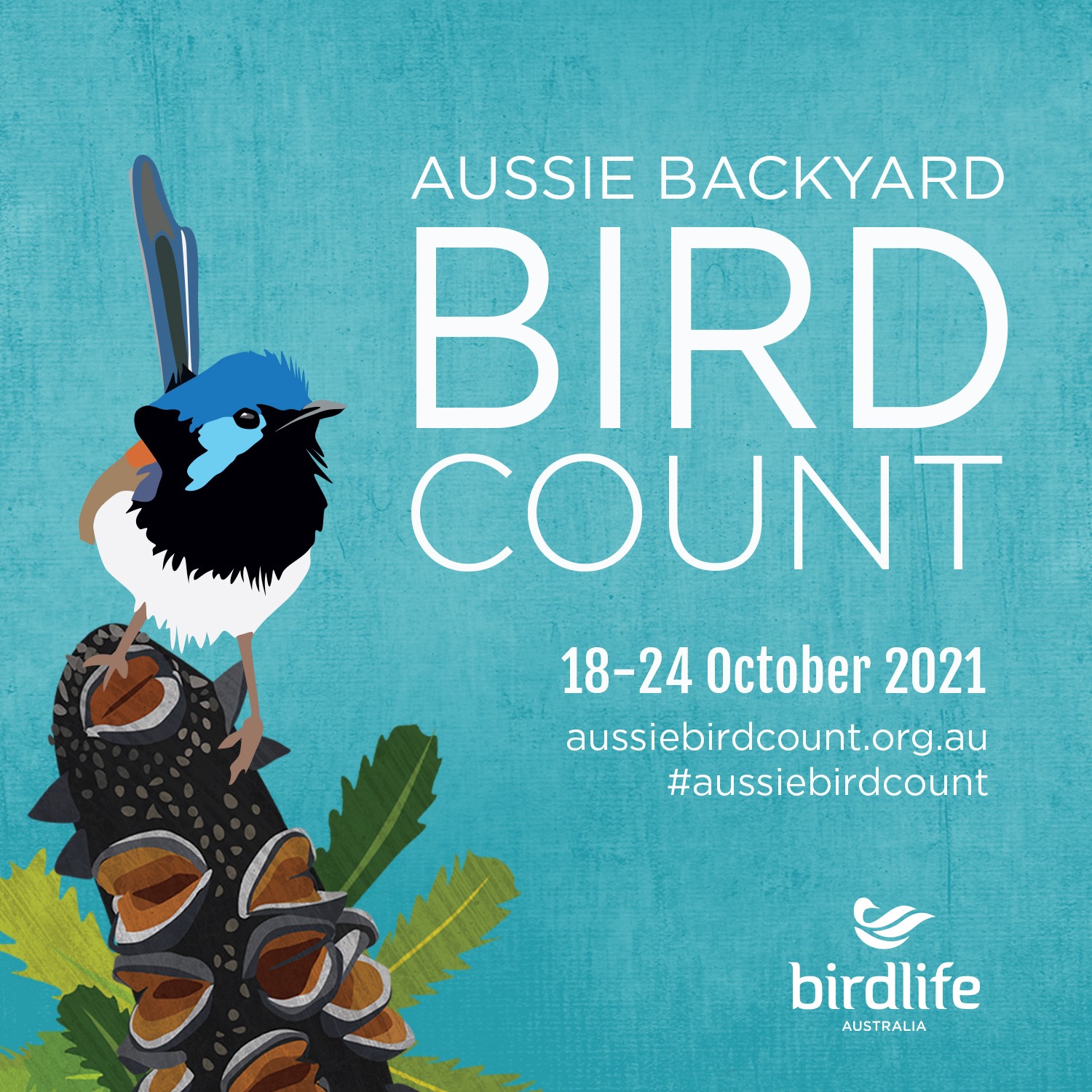
NPWS Concerned Over Increased Dog Walking In National Parks
250 Million Dollar Allocated For Carbon Capture, Use And Storage Hubs And Technologies
- $100 million will support the design and construction of carbon capture hubs and shared infrastructure, and
- $150 million will support research and commercialisation of carbon capture technologies and identify viable carbon storage sites.
Hydrogen Industry 150 Million Dollar Boost
2 Billion Dollar Loan Facility For Australia's Minerals Sector
21 Million For Gas From North Bowen And Galilee Basins Developers
- $15.7 million for gas field trials including innovative drilling programs to prove the region’s potential; and
- $5 million for studies to support development of a new gas pipeline to the region, co-funded by the Queensland government.
- $14 million for Geoscience Australia and CSIRO to deliver better data about baseline conditions across each of the Government’s priority strategic basin regions;
- $13.7 million to continue research under the CSIRO’s GISERA (Gas Industry Social and Environmental Research Alliance); and
- More than $370 million for various road upgrades to support supply chains, trade and project construction, through the Northern Australia Roads program, Roads of Strategic Importance initiative and the Regional Economic Enabling Fund
NSW Raises Climate Targets; Federal Government Keeps Announcing Billions Of Taxpayer Dollars To Be Used For Gas Fracking And Coal Mining Expansion
NSW Set To Halve Emissions By 2030
No Need For Narrabri Gas: New Report’s Roadmap Good News For Rural Communities If Acted On
- Gas demand within New South Wales could be 70 percent lower as soon as 2030, and eliminated altogether as soon as 2050, using readily available, commercially viable technologies.
- With the right policies in place to support technologies like electric resistance heating and renewable hydrogen, gas use can be reduced in emissions-intensive industries like iron and steel manufacturing.
- Homes and commercial buildings are responsible for almost half of New South Wales’ gas use and meeting their needs with electricity is readily achievable with existing, commercially available technologies.
- Putting common-sense measures in place to reduce gas demand in New South Wales, such as electrifying homes and upgrading commercial buildings, would make the expensive and polluting Narrabri Gas Project redundant.
- There is no shortage of gas anywhere in Australia with the growing demands of a swollen gas export industry driving supply issues, higher energy bills, and worsening climate change.
- It is critically important for our economy, health, and climate that every state and territory transitions away from fossil fuels like gas as quickly as possible.
NSW Government Plan To Revitalise Peat Island And Mooney Mooney Released
- Nearly 270 new homes at Mooney Mooney to deliver more housing supply,
- Retention of nine unlisted historical buildings on the island, and four on the mainland, to be restored and used for new community and commercial opportunities,
- New retail and café or restaurant opportunities,
- Approximately 9.65 hectares of open space, including opportunities for walking and cycling tracks, parklands and recreational facilities,
- Retention of the chapel and surrounding land for community use, and
- 10.4 hectares of bushland dedicated as a conservation area.
New Western Sydney National Park To Lead Fight Against Extinction
- brown antechinus
- eastern bettong
- eastern quoll
- southern long-nosed bandicoot
- New Holland mouse
- brush-tailed phascogale
- common dunnart
- bush rat
- emu
- koala
- bush stone-curlew
- green and golden bell frog
- Yathong Nature Reserve, near Cobar Central NSW, fenced area approximately 40,000 hectares
- Ngambaa Nature Reserve, near Macksville North-east NSW, fenced area approximately 3000 hectares
- South-east NSW (Eden Bombala Region), estimated fenced area approximately 1500 – 2000 hectares
- Pilliga State Conservation Area, near Baradine North-west NSW, fenced area 5800 hectares
- Sturt National Park, near Tibooburra Far North-west NSW, fenced area 4000 hectares
- Mallee Cliffs National Park, near Buronga South-west NSW, fenced area 9570 hectares
The Good, The Bad, The Ugly - Extinction Risk Report Can Inform Conservation Of Australia's Sharks And Rays
Ley Approves Vickery Coal Mine Until December 2051 Despite Supreme Court Appeal On Foot
New Fracking-Industry Influenced Report Toes Government Line On Gas
Pitt Wastes More Public Cash On QLD Gas While Tourism Misses Out
Precious Wildlife Habitat Is Still Woefully Vulnerable Despite New Conservation Scheme
Automated Fish Counting System To Benefit Ecology And Fisheries Industry
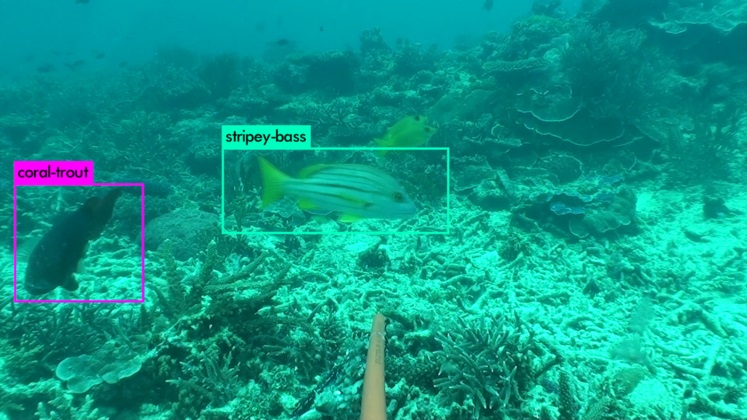 Researchers from the Curtin Institute for Computation (CIC) will use the latest in data science to develop an automated fish detection and counting solution that offers exciting economic and ecological benefits. The CIC is part of a consortium that has been awarded $1 million in Federal funding to continue developing the AFID (Automated Fish Identification) system, which uses machine learning and Artificial Intelligence (AI) to automatically gather information about fish, including species and size.
Researchers from the Curtin Institute for Computation (CIC) will use the latest in data science to develop an automated fish detection and counting solution that offers exciting economic and ecological benefits. The CIC is part of a consortium that has been awarded $1 million in Federal funding to continue developing the AFID (Automated Fish Identification) system, which uses machine learning and Artificial Intelligence (AI) to automatically gather information about fish, including species and size.Want to reduce your food waste at home? Here are the 6 best evidence-based ways to do it
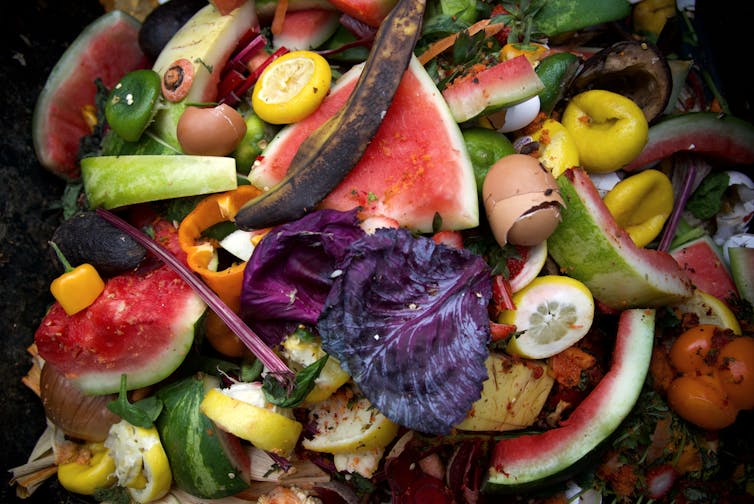
From the farm to the plate, the modern day food system has a waste problem. Each year, a third of all food produced around the world, or 1.3 billion tonnes, ends up as rubbish. Imagine that for a moment – it’s like buying three bags of groceries at the supermarket then throwing one away as you leave.
Wasting food feeds climate change. Food waste accounts for more than 5% of Australia’s greenhouse gas emissions. And this doesn’t include emissions from activities required to actually produce the food in the first place, such as farming and transport.
One of the largest sites of food waste is the home. In Australia, households throw out about 2.5 million tonnes of food each year. That equates to between A$2,000 and $2,500 worth of food per year per household.
But there’s some good news. Our Australian-first research, released today, identified the six most effective behaviours anyone can do to reduce food waste. Combined, these relatively small changes can make a big difference.

What We Did
Food waste by households is a complex problem influenced by many factors. Some, such as food type, package size and safety standards, are out of a consumer’s control. But some are insignificant daily behaviours we can easily change, such as buying too much, forgetting about food at the back of your fridge, not eating leftovers and cooking too much food.
We wanted to better understand the complex nature of household food waste. Together with Australia’s leading food rescue organisation OzHarvest, our research sought to identify and prioritise evidence-based actions to reduce the amount of food Australians throw away.
We reviewed Australian and international literature, and held online workshops with 30 experts, to collate a list of 36 actions to reduce food waste. These actions can be broadly grouped into: planning for shopping, shopping, storing food at home, cooking and eating.
We realised this might be an overwhelming number of behaviours to think about, and many people wouldn’t know where to start. So we then surveyed national and international food waste experts, asking them to rank behaviours based on their impact in reducing food waste.
We also surveyed more than 1,600 Australian households. For each behaviour, participants were asked about:
the amount of thinking and planning involved (mental effort)
how much it costs to undertake the behaviour (financial effort)
household “fit” (effort involved in adopting the behaviour based on different schedules and food preferences in the household).
Consumers identified mental effort as the most common barrier to reducing food waste.
Read more: What a simulated Mars mission taught me about food waste

What We Found
Our research identified the three top behaviours with the highest impact in reducing food waste, which are also relatively easy to implement:
Prepare a weekly meal at home that combines food needing to be used up
Designate a shelf in the fridge or pantry for foods that need to be used up
Before cooking a meal, check who in the household will be eating, to ensure the right amount is cooked.
Despite these actions being relatively easy, we found few Australian consumers had a “use it up” shelf in the fridge or pantry, or checked how many household members will be eating before cooking a meal.
Experts considered a weekly “use-it-up” meal to be the most effective behaviour in reducing food waste. Many consumers reported they already did this at home, but there is plenty of opportunity for others to adopt it.
Some consumers are more advanced players who have already included the above behaviours in their usual routines at home. So for those people, our research identified a further three behaviours requiring slightly more effort:
Conduct an audit of weekly food waste and set reduction goals
Make a shopping list and stick to it when shopping
Make a meal plan for the next three to four days.
Our research showed a number of actions which, while worthwhile for many reasons, experts considered less effective at reducing food waste. They were also less likely to be adopted by consumers. The actions included:
Preserving perishable foods by pickling, saucing or stewing for later use
Making a stock of any food remains (bones and peels) and freeze for future use
Buying food from local specialty stores (such as greengrocers and butchers) rather than large supermarkets.
Read more: Melbourne wastes 200 kg of food per person a year: it's time to get serious

Doing Our Bit
Today is the United Nations’ International Day of Awareness of Food Loss and Waste. It seeks to increase awareness and prompt action in support of a key target in the global Sustainable Development Goals to halve food loss and waste by 2030.
Australia has signed up to this goal, and we hope this research helps fast-track those efforts.
OzHarvest is launching its national Use-It-Up food waste campaign today, aiming to support Australians with information, resources and tips. Based on our findings, we’ve also developed a decision-making tool to help policy makers target appropriate food waste behaviours.
Australia, and the world, can stop throwing away perfectly edible food – but everyone must play their part.
Read more: What can go in the compost bin? Tips to help your garden and keep away the pests ![]()
Mark Boulet, Research Fellow, BehaviourWorks Australia, Monash University
This article is republished from The Conversation under a Creative Commons license. Read the original article.
No, Barnaby. The UK energy crisis has nothing to do with its net-zero target, and to suggest otherwise is outrageous
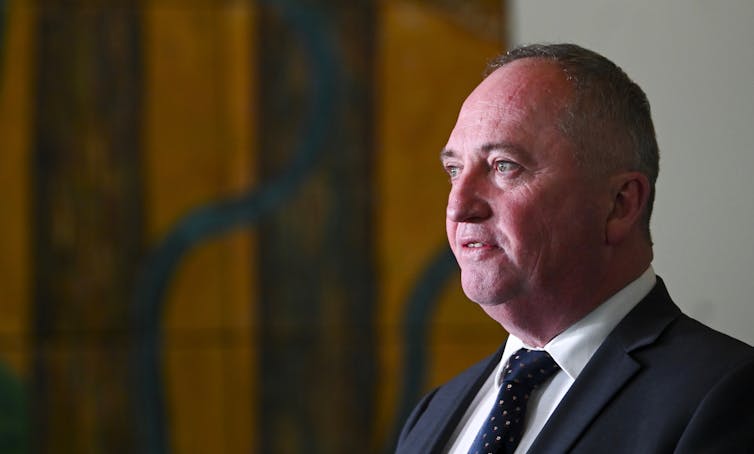
As debate heats up in Australia about adopting a net-zero emissions target, Nationals leader Barnaby Joyce and other key party figures have pointed to the UK energy crisis as a supposedly cautionary tale.
On the ABC’s Insiders program on Sunday, Joyce expressed reticence about the net-zero policy, and said he was “perplexed there’s not more discussion about what’s happening in the UK and Europe with energy prices”. He went on:
A 250% [price] increase since the start of the calendar year. A few days ago, 850,000 people losing their energy provider and a real concern over there about their capacity as they go into winter to keep themselves warm and even keep the food production processes going through.
Joyce was clearly seeking to link the UK energy crisis to its climate target of reaching net-zero emissions by 2050. Pro-coal senator Matt Canavan this week echoed the sentiment:
So are they right? To find out, The Conversation approached Aimee Ambrose, Professor of Energy Policy at leading UK policy research centre The Centre for Regional Economic and Social Research, and an expert advisor to the International Energy Agency.
Here, she explains the reasons for the UK energy crisis. And a spoiler alert: the nation’s net-zero target is not to blame.

Comments by Aimee Ambrose, Professor in Energy Policy, Sheffield Hallam University
It’s outrageous to suggest the current UK energy situation is the result of a rapid transition away from fossil fuels. It is primarily a gas crisis, fuelled by the nation’s slow transition to lower carbon sources.
The origins of the crisis are complex, and date back many years. Here are the five main factors at play:
1. Heavy Reliance On Gas
Since the 1970s, the UK has become progressively more reliant on natural gas to heat our homes. Currently, 77% of households heat their homes using gas central heating, delivered to homes via underground pipes.
Until recently, gas (via central heating) has represented the most affordable way to heat homes. Before the crisis, electricity prices in the UK were consistently higher than gas, averaging 16p per kilowatt hour for electricity (versus 4p for gas). Gas is also used as a key fuel in UK electricity generation.
So gas was seen as affordable, reserves are plentiful in the North Sea and it’s a cleaner energy source than burning solid fuels such as coal. The UK put all its energy eggs in one basket, leaving us at the mercy of price shocks.

2. Lack Of Diversity Of Renewable Sources
Now let’s zoom out from home heating and look at the overall energy mix for the UK. The lack of diversity, and associated risks to energy security, are very clear.
Natural gas fairly consistently makes up about 40% of the energy mix, oil about the same, renewables (primarily wind) about 15% followed by a small amount of nuclear energy and an even smaller amount of coal-based generation (although these figures can fluctuate quite significantly).
These statistics lay bare the UK’s heavy dependency on gas and oil and tardy progress towards a shift to renewables.
The above figure for renewable energy production looks more rosy than it is, thanks to very high wind energy output in Scotland. In reality, total renewable energy generation in the UK lags behind many neighbours in Europe.
Greater renewable energy generation, from diverse technologies, would reduce the UK’s reliance on gas. But within the renewables sector, the UK has majored in wind power – again putting our eggs in one basket.
And even in relation to wind, our flagship renewable source, we lag far behind Europe in terms of output.
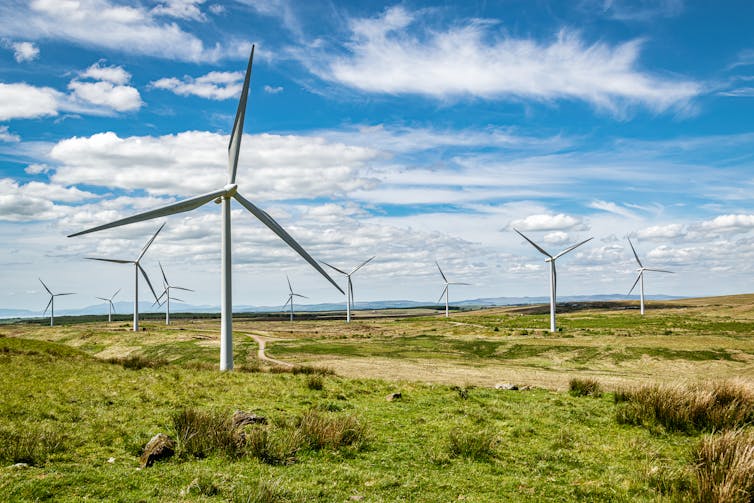
3. Brexit
The UK’s exit from Europe last year also appears to have played a part in the crisis.
Gas prices in Europe are at record highs, but the European Union’s internal energy market – of which the UK is no longer part – allows member states to trade with each other in a way that balances prices out.
This means EU countries can’t always take full advantage of very low energy prices, but at the same time means they’re protected from very high prices.
The UK, as an independent country outside the internal EU market, can take better advantage of low energy prices. But at times like these, when energy prices are very high, it left highly exposed to price shocks.

4. Regressive Approaches To Funding Low-Carbon Transitions
In the UK, as with much of the EU, energy transitions are funded by energy consumers via a levy on their energy bills. Around 63% of our energy bills are made up of charges to fund new energy infrastructure and other services provided by energy companies.
This means those who spend a higher proportion of their income on energy (such as lower income households) will contribute more to funding the transition away from fossil fuels than their wealthier counterparts.
This is not a reason for the gas price crisis. But it creates a double whammy where 250% increases in energy prices – which is what the UK is experiencing – meet hefty levies. If consumers can’t meet these costs then the transition to lower carbon sources stalls and our fossil fuel dependency deepens.

5. Ignored Warnings And Low Storage Capacity
The UK has around 2% gas storage capacity, compared to around 25% for most EU countries.
Back in March this year, the UK Office of Gas and Electricity Markets warned of the risk of a gas price surge. The UK government, apparently distracted by the COVID pandemic, took no action.
This inertia, combined with low gas storage capacity, has compounded the nation’s vulnerability to the sharp price rise predicted by the energy regulator.
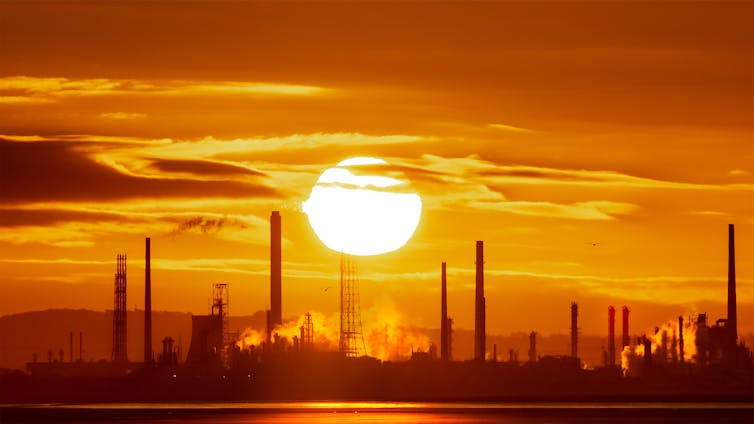
So Could This Happen In Australia?
Australia is steadily transitioning to clean energy – last year, renewables were responsible for 27.7% of total electricity generation.
But Australia remains heavily reliant on fossil fuels. As the UK experience shows, a diversity of renewable sources offers the greatest scope for energy security and affordability – and avoiding the transition only increases the risks of plunging into crisis.
Nicole Hasham, Section Editor: Energy + Environment, The Conversation
This article is republished from The Conversation under a Creative Commons license. Read the original article.
Australia’s threatened species protections are being rewritten. But what’s really needed is money and legal teeth
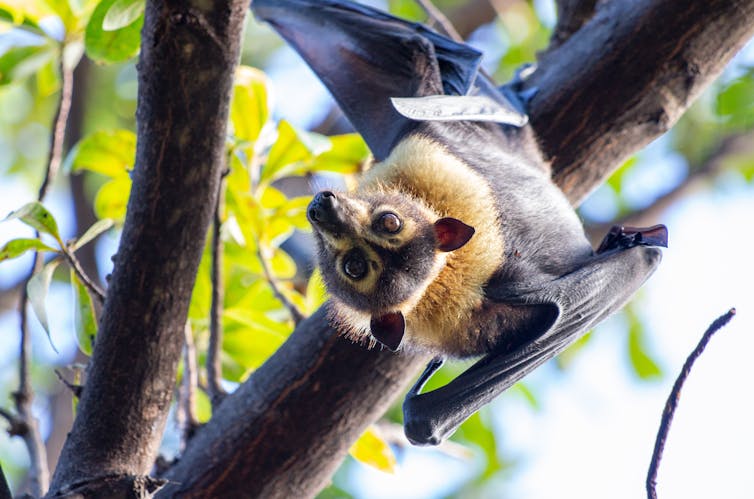
The federal government has proposed replacing almost 200 recovery plans to improve the plight of threatened species and habitat with “conservation advice”, which has less legal clout. While critics have lamented the move, in reality it’s no great loss.
Recovery plans are the central tool available to the federal government to prevent extinctions. They outline a species population and distribution, threats such as habitat loss and climate change, and actions needed to recover population numbers.
But many are so vague they do very little to protect threatened species from habitat destruction and other threats. And governments are not obliged to implement or fund the plans, rendering most virtually useless.
Until federal environment law is strengthened and conservation management is properly funded, the prospects of our most vulnerable species will continue to worsen – and some will be lost forever.

What’s Being Proposed?
All threatened species and ecological communities have a conservation advice, and some also have a recovery plan.
Recovery plans and conservation advices both set out the research and management needed to protect and restore species and ecological communities listed as threatened under federal environment law.
Both instruments are usually developed by state or federal environment departments. Recovery plans can be long, complex documents which take several years to draw up and get approved. Conservation advices are usually shorter and less detailed, and are approved when a species is listed as threatened.
The minister is legally bound to act consistently with a recovery plan – for example when considering a development application which would damage threatened species habitat. Conservation advices are not legally enforceable.
The government has been reviewing past recovery plan decisions, and has identified almost 200 threatened species and ecological communities for which it believes a conservation advice will suffice.
They include the spectacled flying fox, the Tasmanian devil and the ghost spider-orchid, as well as the giant kelp marine forests of southeast Australia and NSW’s Cumberland plain woodland.
The government says a conservation advice is a “more streamlined, nimble and cost-effective document” than a recovery plan for identifying conservation needs and actions.
A Broken System
On the surface, it may seem the federal government wants to replace a powerful conservation instrument with a weaker one. But in reality, most recovery plans have done little to protect threatened plants and animals – for several reasons.
First, the wording of recovery plans is often vague and non-prescriptive, which gives the minister flexibility to approve projects that will harm a threatened species.
One analysis in 2015 by environment and legal groups exposed weaknesses in the wording around habitat protection. Of the 120 most endangered animals covered by recovery plans, only 10% had plans where limits to habitat loss was clearly stated.
For example, North Queensland’s proserpine rock wallaby is threatened by land clearing for residential and tourism developments. The analysis found its recovery plan contained “no direct and clear requirement to avoid or halt land clearing or other destructive activities”.
The Carnaby’s black-cockatoo, of Western Australia, has lost much of its foraging and breeding habitat to land clearing. Yet its recovery plan also failed to specify limits to habitat loss, allowing substantial clearing to continue.
Second, many recovery plans never come to fruition. In October last year, plans were reportedly outstanding for 172 species and habitats, and the federal environment department had not finalised one in almost 18 months. The recovery plan for the Leadbeater’s possum, for example, was devised five years ago but has never progressed past draft form.
Third, conservation management in Australia is grossly underfunded. This means recovery plans are often just a piece of paper, without funding or a team to implement them.
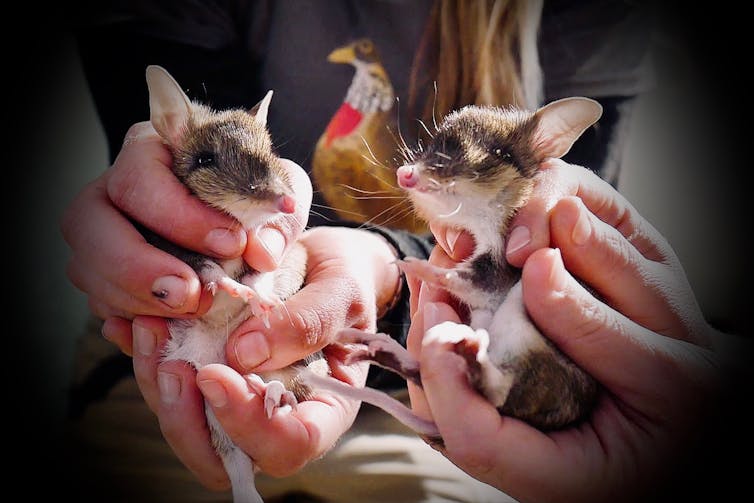
So Will Conservation Advices Work?
A good recovery plan, such as that of the eastern barred bandicoot, includes all the relevant detail of biology, threats, budgets, timelines and targets to turn a population around.
In the next few years, hundreds of recovery plans will need updating – a huge bureaucratic task. Given so many recovery plans have been ineffective, one has to question whether that’s the best use of government conservation dollars.
So will the move to conservation advices do as good a job? Historically, they have contained such scant detail they were of little use. However, this has been changing. Conservation advice for the northern hopping-mouse, and Mahony’s toadlet, for example, provide precise details of habitat and threats.
The Threatened Species Scientific Committee is reportedly working with the federal environment department to ensure all conservation plans provide an efficient, best-practice method for conveying recovery needs. This work is crucial.
There’s some evidence to suggest conservation advices can have legal sway. Conservation advice on the Leadbeater’s possum last year helped persuade a Victorian court to stop logging in some habitat. (The decision was later overturned, for unrelated reasons).
And federal Environment Minister Sussan Ley last year directed A$18 million to koalas on the basis of a conservation advice. This shows they can successfully inform government investment decisions.
Read more: Australia's threatened species plan sends in the ambulances but ignores glaring dangers
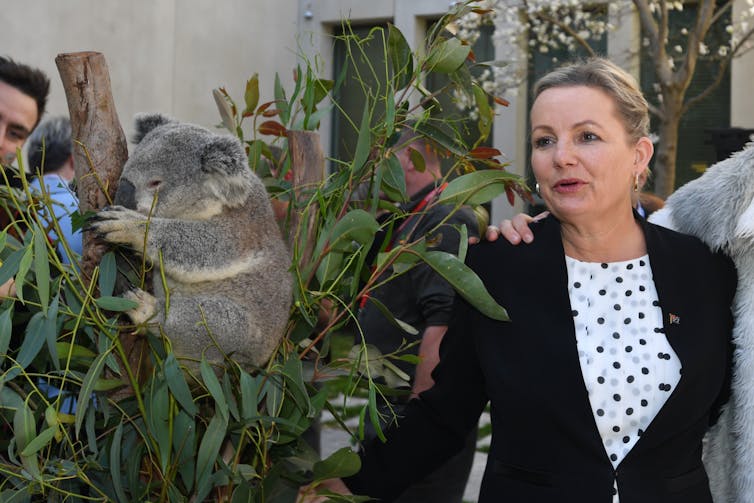
Looking Ahead
Recovery plans will remain vital for species with complex planning needs, such as those that face multiple threats. Conservation advices can suffice in some instances, but also have failings.
Far better than both instruments would be to strengthen regulatory tools, such as critical habitat protection. This can happen independently of recovery plans or conservation advices.
Even better would be for the government to adopt the recommendations of Graeme Samuels’ recent review of federal environment law – particularly his recommendation for national, legally-binding environmental standards to guide development decisions.
But most importantly, the federal government must invest far more in threatened species protection. Without money, many threatened species will continue on the path to extinction.
Stephen Garnett, Professor of Conservation and Sustainable Livelihoods, Charles Darwin University
This article is republished from The Conversation under a Creative Commons license. Read the original article.
Your household power bills could be 15% cheaper, if Australia’s energy regulator was doing its job
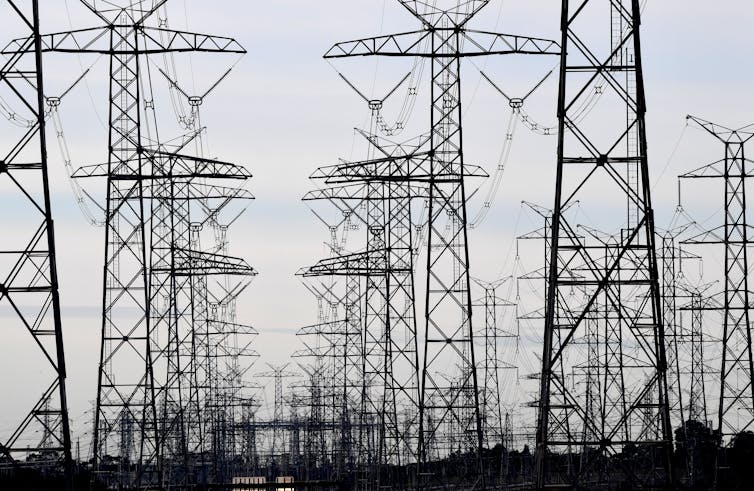
If you’re like most Australians, the single biggest chunk of your energy bill — about 40% — goes to a network services company, which owns and operates the transmission lines or pipes delivering electricity or gas to your home.
But evidence from takeover bids for Australia’s last two publicly listed electricity network services companies suggests you are paying more than you should.
These prices are set by the Australian Energy Regulator, because network services are monopolies: you can choose your energy retailer, but not the lines or pipes through which the electricity or gas flow.
It’s the regulator’s job to determine a fair price for these services — one that doesn’t shortchange the service provider or gouge consumers.
But the Australian Energy Regulator has not been getting these pricing decisions right, according to calculations that can be made using the bids by overseas investors for AusNet Services Ltd, the biggest energy network provider in Victoria, and Spark Infrastructure Group, whose assets include South Australia’s electricity distribution network.
Being listed on the stock exchange, they must disclose financial information. This information enables analysts to calculate how much investors value them compared to the Australian Energy Regulator.
This calculation — known as Regulated Asset Base (RAB) multiple — suggests the regulator has been allowing energy network companies to charge way more than necessary.
Read more: Energy prices are high because consumers are paying for useless, profit-boosting infrastructure
Valuing AusNet
AusNet owns and operates almost all of the electricity transmission system in Victoria, and also big gas and electricity distribution networks. It is the subject of a takeover battle between Brookfield Asset Management, a Canadian infrastructure fund, and APA Group, Australia’s largest natural gas infrastructure business.
On September 20, it was revealed that Brookfield offered to acquire AusNet for A$2.50 a share. The day after APA Group offered a mix of cash and equity that it said valued Ausnet at A$2.60 per share.
These bids provide a baseline to calculate the Regulated Asset Base multiple: the the ratio of investors’ valuation to the regulator’s valuation.
How much an investor is prepared to pay for a share indicates their expectation of the future dividend (or profits) those shares will return. How much the regulator’s allows a company to charge is based on what it sees as a fair return to shareholders.
From this information the Regulated Asset Base multiple can be calculated.
A multiple of 1 would mean the investors’ valuation equals the regulator’s valuation. A number lower than 1 would mean the regulator is setting prices too low. A number greater than 1 means it is setting prices too high.
Brookfield’s offer, according to The Australian Financial Review, gives Ausnet a multiple of 1.68. This suggests the Australian Energy Regulator is allowing AusNet to charge prices 68% higher than Brookfield would be happy to accept. APA’s bid suggests a RAB multiple even higher.
Of course, it is not entirely as simple as that. Not all of AusNet’s revenue come from regulated assets. This may slightly affect the valuation of AusNet. Assuming AusNet’s unregulated businesses are as profitable as its larger regulated businesses, we estimate the RAB multiple is 1.54.
Valuing Spark Infrastructure
Spark Infrastructure owns controlling interests in two Victorian electricity distributors (Citipower and Powercor), Transgrid in NSW, and South Australia’s main distribution network, SA Power Networks.
In August, Spark’s board approved a A$5.2 billion takeover offer from US private equity giant Kohlberg Kravis Roberts and the Ontario Teachers’ superannuation fund.
This offer gives Spark a RAB multiple of 1.5. This suggests the monopolies Spark has a share in are charging prices 53% higher than needed to adequately compensate investors
Read more: You're paying too much for electricity, but here's what the states can do about it
Vanishing Transparency
The impact on customers will vary, but these calculations suggests network services charges should be about two-thirds current levels. This would make household electricity bills about 15% lower than now.
I am not suggesting the regulator should set prices consistent with a RAB multiple of 1. But prices should not favour monopoly owners as much these takeover valuations suggest they do.
The underlying issue here is not new. Official inquiries over the past decade — the Garnaut Climate Change Review update in 2011, the Senate inquiry into energy bills in 2012 and the Productivity Commission’s review of electricity network regulation in 2013 — all concluded energy regulation erred excessively in favour of investors at the expense of consumers.
The Australian Energy Regulator and the Australian Energy Markets Commission (which oversees all energy markets) have responded to these inquiries with new rules, guidelines, committees and processes.
Yet the problem remains — and if these takeovers are successful then AusNet and Spark Infrastructure will almost certainly be delisted. We will then lose vital information on RAB multiples that allows objective assessment of the regulator’s decisions.![]()
Bruce Mountain, Director, Victoria Energy Policy Centre, Victoria University
This article is republished from The Conversation under a Creative Commons license. Read the original article.
Celebrating K’gari: why the renaming of Fraser Island is about so much more than a name
Rose Barrowcliffe, University of the Sunshine CoastOn the 19th of September, Butchulla dancers and community representatives came together at Kingfisher Bay Resort to celebrate the renaming of Fraser Island to the K’gari (Fraser Island) World Heritage Area.
The renaming was the result of a decades-long campaign by Butchulla Elders and community members and was endorsed by the Queensland government and adopted by the World Heritage Committee.
This event is the latest in a growing number of Indigenous name repatriations across the nation. As a Butchulla person, and a researcher of the representation of Indigenous peoples in archives and historical narratives, I can appreciate the significance of something as seemingly small as a name change.
How Common Is It To Revert To The Indigenous Place Name?
The reversion to the name K’gari has happened in stages over a number of years. In 2011, the Bligh government added K’gari as an alternative to the place name Fraser Island in the Queensland Place Names Register.
The Fraser Island portion of the Great Sandy National Park was changed to K’gari (Fraser Island) National Park in 2017. This latest change is specifically in relation to the UNESCO World Heritage area.
K’gari is among a growing number of places around Australia that have returned to their Indigenous names. One of the most famous examples is Uluru.
In Queensland, the National Parks First Nations Naming Project has been assisting in reverting national park names to Indigenous names where possible as a part of the government’s commitment to the truth-telling process. North Stradbroke Island and Moreton Island National Parks have reverted to Minjerribah and Gheebulum Coonungai, respectively.
According to then-minister for environment and the Great Barrier Reef, Leanne Enoch
This project is a positive step in our truth telling around First Nations Peoples’ significant and ancient connection to country.
Not Renaming, Reclaiming
Changing a place name will not fix racism in one fell swoop. No one is claiming it will. But name repatriation speaks to the importance of language in both culture and sovereignty.
Indigenous place names link Traditional Country to the history, culture and people that have been a part of that land long before colonisation. Overwriting Indigenous names with colonist names is an attempt to deny this deep, pre-existing connection and the sovereignty of Indigenous peoples.
The renaming of Butchulla Country was one of the first things Captain James Cook did as he first sailed the east coast of Australia.
In 1770, as Cook’s ship sailed close to Tacky Waroo, a large basalt headland on the east side of K’gari, it was met by a party of Butchulla warriors standing on the headland. In the lexicon of the day, all dark-skinned people were called “Indians”, so Cook renamed Tacky Waroo “Indian Head”.
In other cases, colonial place names were, and still are, blunt reminders of colonial violence. Places like Murdering Creek, Massacre Bay, Skull Creek and many more litter the Australian landscape and indicate violent acts that occurred in those places.
The name Fraser Island is named after a Scottish woman, Eliza Fraser, who was shipwrecked on the island in 1836. Fraser lied about being mistreated by Butchulla people after being shipwrecked. Even in those days, her account of her time on K’gari was thrown into doubt.
Fraser was known to be a sensationalist who made her story more and more salacious as time went on, in efforts to garner more money from sympathetic supporters. Her accounts of her time on K’gari were syndicated as far as the Americas, and reinforced the narrative that Indigenous peoples were “savages” and “cannibals”. These classifications led to Indigenous peoples being vilified around the globe.
Colonial History Is Not Indigenous History
Language plays an important part in reinforcing the notion that history in Australia began with the arrival of Cook and his fleet.
Colonial place names are another subtle yet persistent reinforcement of the notion that this land only has a place in history once it intersects with the narratives of colonists.
K’gari was the name chosen by the Butchulla because that is the sky spirit the island was created from. The name goes back to the very creation of the island, and yet the name that stuck was the name of a woman who spent not more than two months on the island.
Re-adoption of Indigenous place names signifies the increased recognition of history and culture that predates colonisation. More importantly, these name repatriations recognise that history and culture continue today.
The history of colonisation is not Indigenous history. Indigenous history and the history of this continent predates, pre-exists and will eventually override colonial history. Indigenous place names are evidence of that.
Read more: Indigenous treaties are meaningless without addressing the issue of sovereignty
Bringing Our Past Into A Shared Future
Repatriation of Indigenous place names is a part of the process of reintroducing Indigenous perspectives into the narratives of our modern society.
Repatriation of Indigenous place names reaffirms that First Nations have always existed, and still exist in Australia today. Moreover, they are a source of distinction that sets Australia apart from the rest of the world for the one thing no other country in the world can come close to: being home to the oldest living cultures in the world. That should be a source of pride for all Australians.
Always was, always will be K’gari.![]()
Rose Barrowcliffe, Doctoral Candidate, University of the Sunshine Coast
This article is republished from The Conversation under a Creative Commons license. Read the original article.
The Nationals signing up to net-zero should be a no-brainer. Instead, they’re holding Australia to ransom
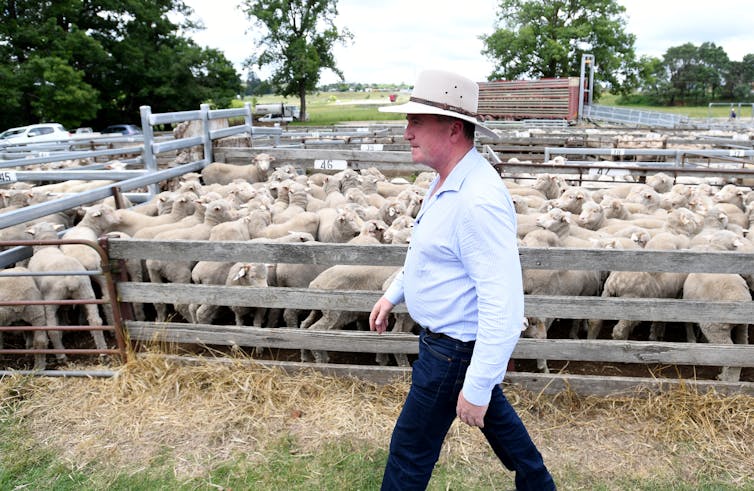
Prime Minister Scott Morrison is reportedly developing a plan for Australia to adopt a target of net-zero emissions by 2050. Climate change was a central focus of the Quad talks in Washington which Morrison attended in recent days, and he is under significant international pressure to adopt a net-zero target ahead of climate talks in Glasgow in November.
Morrison is very late to the party on issue of net-zero – and lagging far behind public opinion. A recent Lowy poll showed 78% of Australians support the target.
But standing firmly in Morrison’s way is the Coalition’s junior partner, the Nationals. The words of key Nationals figures including Resources Minister Keith Pitt and pro-coal senator Matt Canavan suggest net-zero is the hill they will die on. And Nationals leader Barnaby Joyce, not exactly a climate warrior, has indicated he’s yet to be convinced on the merits of the target.
Ultimately though, this is just bad strategy from the Nationals. It burns valuable political capital for no good reason, and abrogates responsibility to their own constituents.
Not Much Of A Target At All
First, a net-zero emissions target is a really obvious position of compromise for the Nationals specifically, and for a reluctant Australian government more generally.
Every state and territory in Australia has already adopted this target for 2050, or bettered it. And most of our international peers have a net-zero target including the United Kingdom, Japan, Canada, Germany, France and the United States.
Getting to net-zero by 2050 also doesn’t necessarily require immediate or significant emissions cuts. As critics including Greta Thunberg and former IPCC chair Bob Watson have argued, the targets can create the impression of action without requiring immediate change.
Research shows many jurisdictions with a net-zero target do not have robust measures in place to ensure they’re met, such as interim targets and a reporting mechanism.
And the timeframe for net-zero – whether 2050 like most nations, or 2060 as per China – is way beyond the political longevity of our current government MPs. That means those now in parliament will be spared much of the political pain of implementing policies required to meet the target.
Finally, pursuing net-zero emissions (rather than just zero-emissions in sectors where that is feasible) allows fossil fuel companies to offset their climate damage, by buying carbon credits, rather than stopping their polluting activity. It also potentially allows for fairly speculative efforts to remove greenhouse gases from the atmosphere via geoengineering.
For these reasons and more, the net-zero goal is in often criticised as a dangerous trap for doing very little on climate change – which appears to be the goal of many in the Nationals.
Read more: Betting on speculative geoengineering may risk an escalating ‘climate debt crisis’
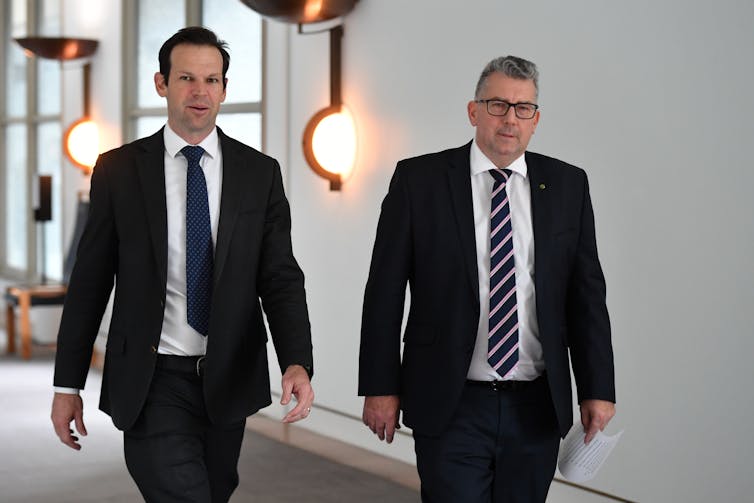
Adapting To Change
In opposing the net-zero target, the Nationals often point to potential damage to the nation’s mining and farming sectors, primarily a loss of jobs and economic growth. Some Nationals have called for those sectors to be carved out of any net-zero target.
On the question of agriculture, research released by the Grattan Institute this week shows it’s getting increasingly hard to argue the sector should be exempt from the target – its emissions are simply too great.
And there is much that can be done right now to cut agriculture emissions, if the government does more to encourage farmers to adopt the right technologies and practices.
On mining, the Nationals are fighting a losing battle. Soon, the world will no longer want our coal. As others have noted, we must prepare for the change and diversify the economy, rather than lamenting what’s still left in the ground. And Australia can easily replace coal-fired electricity generation with renewable energy, backed by storage.
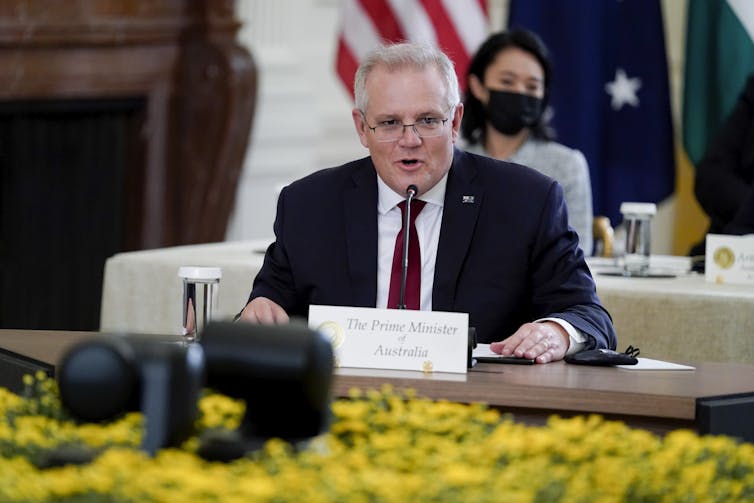
For Whom Do The Nationals Speak?
By refusing to compromise on a net-zero target, the Nationals are burning all sorts of political capital they could potentially wield with the Liberals on a range of issues. The Nationals would have held particular sway over Liberals concerned about holding on to their inner city seats in a 2022 election.
More importantly, the position of Keith Pitt, Matt Canavan and other intransigents in the Nationals isn’t just an abandonment of future generations. Nor is it only a rejection of our responsibilities to vulnerable people in all parts of Australia and the world, or our duty of care to other living beings.
It’s also a spectacular betrayal of their own constituencies. Rural Australia will be disproportionately affected by climate change, particularly in the form of higher temperatures, changing rainfall patterns and increasing disasters like drought and bushfires. And the long-term economic costs of inaction for rural constituencies will be potentially catastrophic.
It’s for these reasons that organisations like the National Farmers Federation have specifically called for a commitment to net zero emissions.
In the 2019 election, the Nationals received just 4.5% of the vote in the lower house, with the Liberal Nationals of Queensland achieving just 8.7% (as a proportion of the national total). In both cases, it was less still in the Senate.
Yet despite speaking on behalf of a small fraction of the country, the party is holding Australian climate policy to ransom.
Maybe we can’t get the intransigents in the National Party to suddenly recognise their obligations to the planet and its inhabitants. But surely they can be convinced to represent the interests of rural voters? Time – what little we have left – will tell.
Read more: Net zero by 2050? Even if Scott Morrison gets the Nationals on board, hold the applause ![]()
Matt McDonald, Associate Professor of International Relations, The University of Queensland
This article is republished from The Conversation under a Creative Commons license. Read the original article.
The hydropower industry is talking the talk. But fine words won’t save our last wild rivers
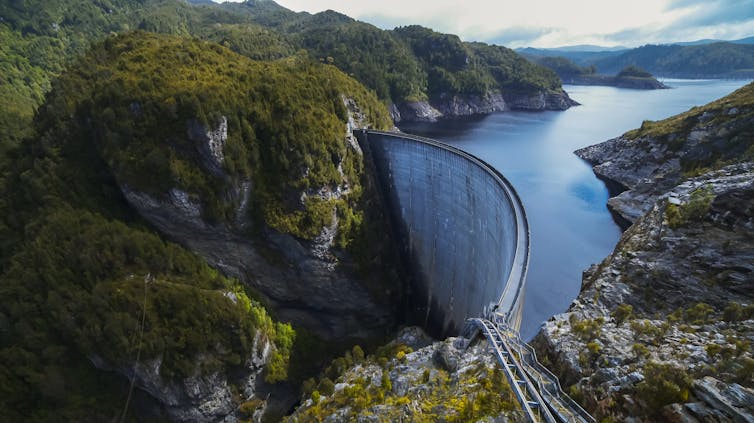
Technologies to harness the power of water are touted as crucial for a low-emissions future. But over many decades, the hydropower industry has caused serious damage to the environment and people’s lives.
More than 500 new hydropower dams are currently planned or under construction in the world’s protected areas. And some 260,000 kilometres of the last wild rivers – including the Amazon, Congo, Irrawaddy and Salween rivers – are threatened by proposed dams.
The global hydropower industry says the technology’s installed capacity must increase by more than 60% by 2050 if the world hopes to limit climate change. And the World Hydropower Congress, held remotely from Costa Rica this month, proposed steps to expand with minimal harm.
But stringent oversight, and a commitment from banks and governments to support only sustainable pumped hydro developments, is urgently needed. Otherwise, the expanding industry could displace millions more people, irreparably damage rivers and drive species to extinction.
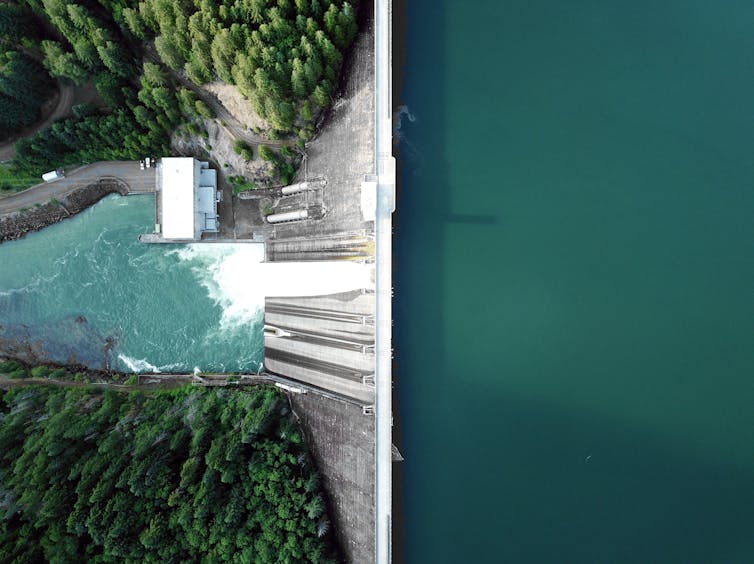
Old Technology Given New Life
Hydroelectricity is an old technology which involves passing water from a reservoir through a turbine, to generate electricity. One application, known as pumped storage, can store electricity generated by solar and wind. In the era of climate change, pumped storage has given new life to hydropower technology.
Pumped hydro uses excess renewable energy to pump water from a lower reservoir to a higher one. The water is then released downhill to produce electricity when needed, then pumped back up when electricity returns to surplus.
Technologies such as wind and solar can only produce electricity when the sun is shining or the wind is blowing. Pumped hydro can make such generators more reliable by storing renewable energy when it’s produced then releasing it as needed.
Three pumped hydro storage projects operate in Australia: two in New South Wales and one in Queensland. Two are under construction, including the massive Snowy 2.0, and about a dozen are at the scoping stage.
Pumped hydro storage can be added to existing reservoirs on rivers. It can also be located off rivers, which can often lead to better social and environmental outcomes. One such project in North Queensland, Kidston, involves redeveloping an old gold mine.
Australian National University research this year identified about 616,000 potential sites around the world for pumped hydro, including more than 3,000 in Australia. Developing fewer than 1% of these could support a fully renewable global energy system.
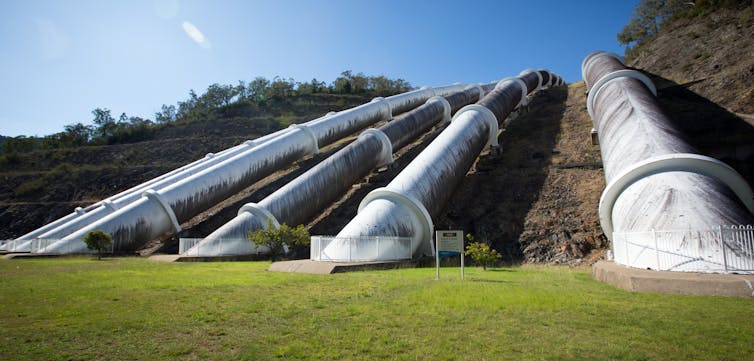
A Poor Record
Hydropower and associated dams have a long record of environmental and social damage. Aside from flooding ecosystems, farmlands and towns, hydropower projects significantly disrupt river flows. This, among other harms, can deny water to floodplain wetlands, block fish migration and breeding and reduce nutrient flows.
Globally, populations of freshwater species – including mammals, birds, amphibians, reptiles and fish – have declined by about 84% since 1970, in large part due to dams. In Tasmania, inundation of the unique Lake Pedder ecosystem in the 1970s led to several species extinctions.
And while hydropower is widely considered a “clean” energy, it can lead to significant amounts of greenhouse gases when flooded plants and trees decompose.
Emissions from most hydropower dams are comparable to the life-cycle emissions from solar and wind generators. But at warmer tropical sites where vegetation is more dense, reservoirs could have a higher emission rate than fossil-based electricity.
As far back as 20 years ago, dams were found to have displaced 40 to 80 million in the half century prior. And dams have damaged the livelihoods of hundreds of millions people downstream over the past century.
But new hydro projects are routinely proposed at sites where they will cause substantial damage. And social and environmental problems caused by hydropower dams continue in places as diverse as Colombia and Southeast Asia’s Mekong region.
The Snowy 2.0 pumped storage project in Kosciusko National Park highlights trade-offs involved in many hydropower developments.
It promises to improve the reliability of solar and wind power, helping mitigate climate change. But it also threatens two endangered fish species, and several thousand hectares of national park are being cleared for infrastructure.
Read more: NSW has approved Snowy 2.0. Here are six reasons why that's a bad move
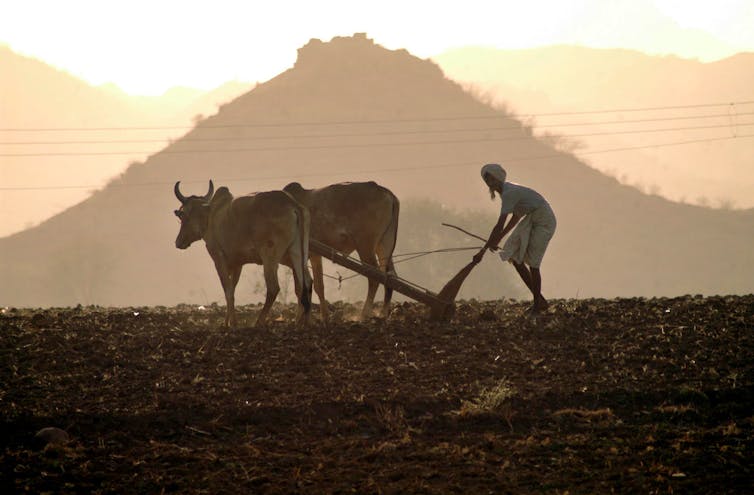
An Industry Makeover
Clearly, the world hydropower industry has public relations work to do, if its global expansion is to be realised. The International Hydropower Association appears to have cottoned on to this, taking a sophisticated approach to improving the industry’s social licence.
The industry has actively engaged conservationists in preparing sustainability standards. Voluntary assessment tools outline steps to minimise damage to people and the environment, and a new sustainability certification scheme for hydropower was launched at this month’s congress.
The industry has pledged not to build hydropower dams in world heritage sites. It has also offered to “avoid, minimise, mitigate or compensate” for damage in protected areas (albeit falling short on offering full protection).
However, it’s hard to see the new standards being systematically applied unless governments of major dam building nations – especially China, India, Brazil and Turkey – adopt the standards in their planning and approval processes.
And how will rogue operators and irresponsible financiers be prevented from developing unsustainable projects – especially when some governments are fixated on enabling them?
It’s in the interests of the International Hydropower Association, as the progressive element of the hydropower industry, to advocate for governments and financiers to assess proposed hydropower projects against the new standards.
Read more: When dams cause more problems than they solve, removing them can pay off for people and nature
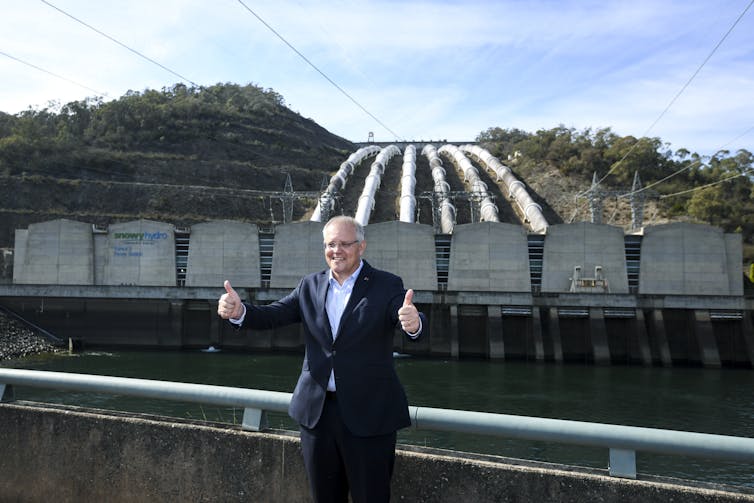
Causing The Least Harm
Pumped hydro has an important role to play in the renewable energy transition, but only where projects cause minimal harm to people and nature.
Ensuring a sustainable industry in future could be achieved by stopping damaging conventional hydropower projects on rivers. Instead, pumped storage projects should be developed when:
an assessment shows they meets the needs of an energy system
environmental and social conflicts are minimal, such as at off-river sites
for projects in tropical areas, shallow reservoirs and flooding of vegetation is avoided to minimise greenhouse gas emissions.
Pumped storage offers the hydropower industry a chance to reposition itself from villain to hero. The industry must now translate its words into practice. And financiers and government regulators must support only those hydropower projects which genuinely seek to minimise environmental and social harm.![]()
Jamie Pittock, Professor, Fenner School of Environment & Society, Australian National University
This article is republished from The Conversation under a Creative Commons license. Read the original article.
Climate change is testing the resilience of native plants to fire, from ash forests to gymea lilies
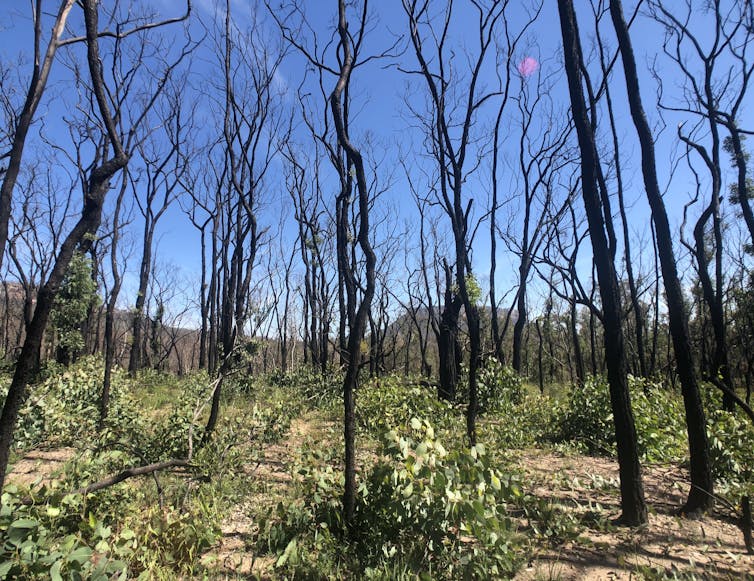
Green shoots emerging from black tree trunks is an iconic image in the days following bushfires, thanks to the remarkable ability of many native plants to survive even the most intense flames.
But in recent years, the length, frequency and intensity of Australian bushfire seasons have increased, and will worsen further under climate change. Droughts and heatwaves are also projected to increase, and climate change may also affect the incidence of pest insect outbreaks, although this is difficult to predict.
How will our ecosystems cope with this combination of threats? In our recently published paper, we looked to answer this exact question — and the news isn’t good.
We found while many plants are really good at withstanding certain types of fire, the combination of drought, heatwaves and pest insects may push many fire-adapted plants to the brink in the future. The devastating Black Summer fires gave us a taste of this future.
What Happens When Fires Become More Frequent?
Ash forests are one of the most iconic in Australia, home to some of the tallest flowering plants on Earth. When severe fire occurs in these forests, the mature trees are killed and the forest regenerates entirely from the seed that falls from the dead canopy.
These regrowing trees, however, do not produce seed reliably until they’re 15 years old. This means if fire occurs again during this period, the trees will not regenerate, and the ash forest will collapse.
This would have serious consequences for the carbon stored in these trees, and the habitat these forests provide for animals.
Southeast Australia has experienced multiple fires since 2003, which means there’s a large area of regrowing ash forests across the landscape, especially in Victoria.
The Black Summer bushfires burned parts of these young forests, and nearly 10,000 football fields of ash forest was at risk of collapse. Thankfully, approximately half of this area was recovered through an artificial seeding program.
What Happens When Fire Seasons Get Longer?
Longer fire seasons means there’s a greater chance species will burn at a time of year that’s outside the historical norm. This can have devastating consequences for plant populations.
For example, out-of-season fires, such as in winter, can delay maturation of the Woronora beard-heath compared to summer fires, because of their seasonal requirements for releasing and germinating seeds. This means the species needs longer fire-free intervals when fires occur out of season.
Read more: Entire hillsides of trees turned brown this summer. Is it the start of ecosystem collapse?
The iconic gymea lily, a post-fire flowering species, is another plant under similar threat. New research showed when fires occur outside summer, the gymea lily didn’t flower as much and changed its seed chemistry.
While this resprouting species might persist in the short term, consistent out-of-season fires could have long-term impacts by reducing its reproduction and, therefore, population size.
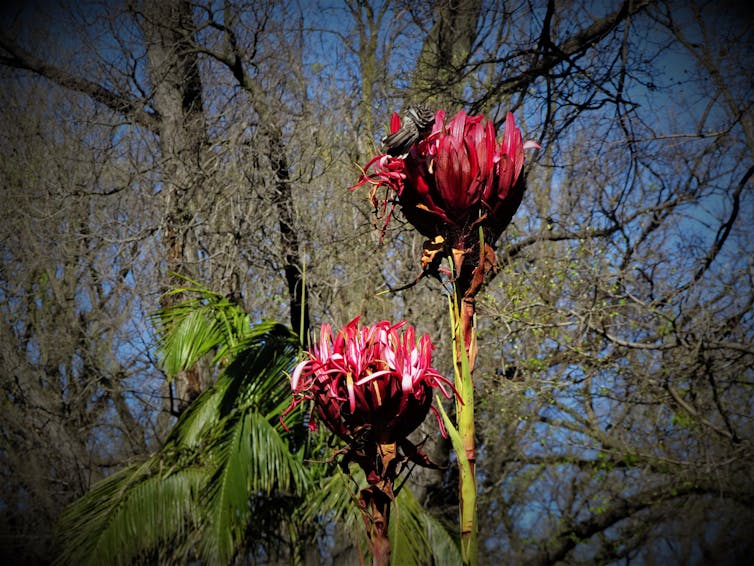
When Drought And Heatwaves Get More Severe
In the lead up to the Black Summer fires, eastern Australia experienced the hottest and driest year on record. The drought and associated heatwaves triggered widespread canopy die-off.
Extremes of drought and heat can directly kill plants. And this increase in dead vegetation may increase the intensity of fires.
Another problem is that by coping with drought and heat stress, plants may deplete their stored energy reserves, which are vital for resprouting new leaves following fire. Depletion of energy reserves may result in a phenomenon called “resprouting exhaustion syndrome”, where fire-adapted plants no longer have the reserves to regenerate new leaves after fire.
Therefore, fire can deliver the final blow to resprouting plants already suffering from drought and heat stress.
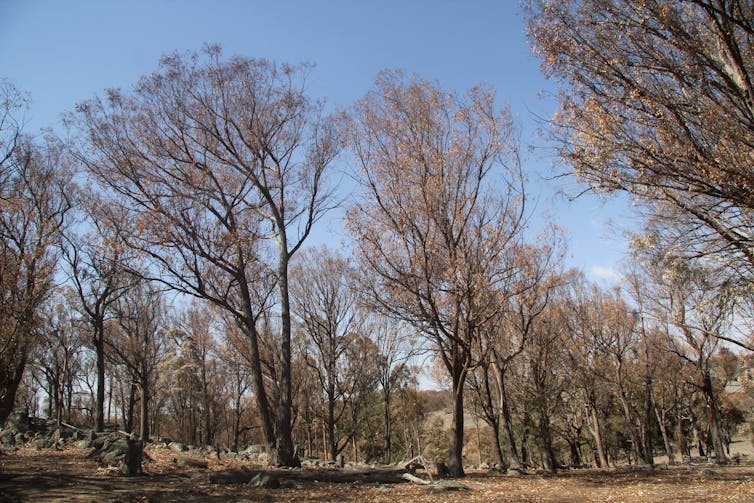
Drought and heatwaves could also be a big problem for seeds. Many species rely on fire-triggered seed germination to survive following fire, such as many species of wattles, banksias and some eucalypts.
But drought and heat stress may reduce the number of seeds that get released, because they limit flowering and seed development in the lead up to bushfires, or trigger plants to release seeds prematurely.
For example, in Australian fire-prone ecosystems, temperatures between 40℃ and 100℃ are required to break the dormancy of seeds stored in soil and trigger germination. But during heatwaves, soil temperatures can be high enough to break these temperature thresholds. This means seeds could be released before the fire, and they won’t be available to germinate after the fire hits.
Heatwaves can also reduce the quality of seeds by deforming their DNA. This could reduce the success of seed germination after fire.
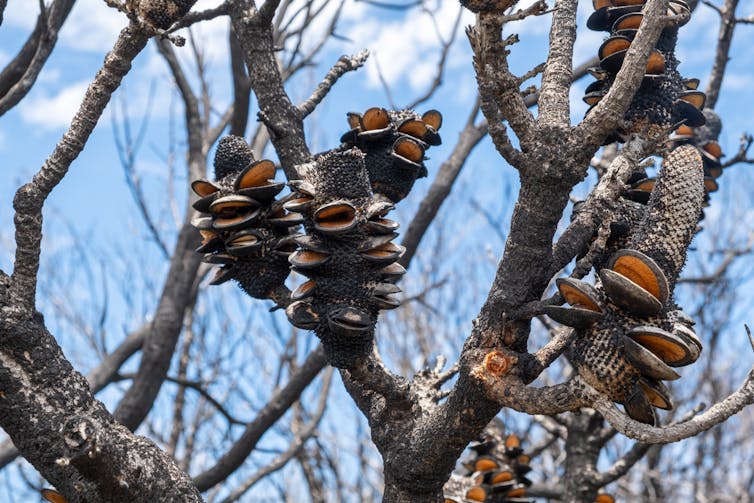
What about insects? The growth of new foliage following fire or drought is tasty to insects. If pest insect outbreaks occur after fire, they may remove all the leaves of recovering plants. This additional stress may push plants over their limit, resulting in their death.
This phenomenon has more typically been observed in eucalypts following drought, where repeated defoliation (leaf loss) by pest insects triggered dieback in recovering trees.
When Threats Pile Up
We expect many vegetation communities will remain resilient in the short-term, including most eucalpyt species.
But even in these resilient forests, we expect to see some changes in the types of species present in certain areas and changes to the structure of vegetation (such as the size of trees).
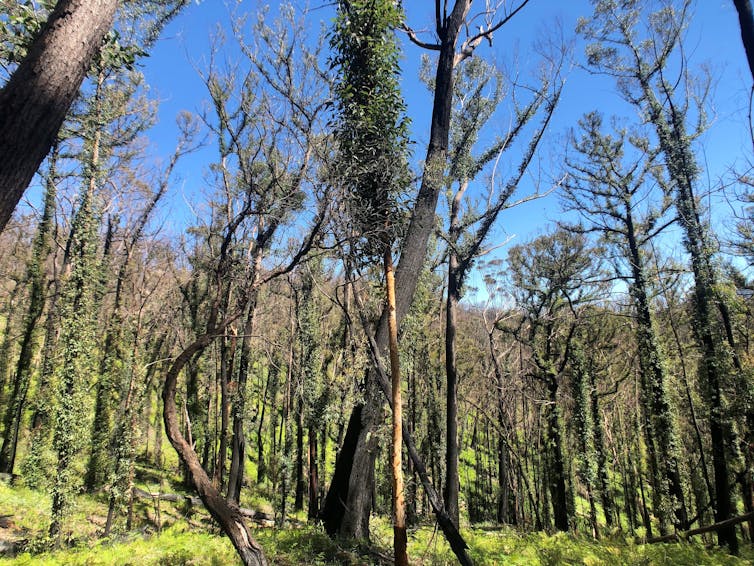
As climate change progresses, many fire-prone ecosystems will be pushed beyond their historical limits. Our new research is only the beginning — how plants will respond is still highly uncertain, and more research is needed to untangle the interacting effects of fire, drought, heatwaves and pest insects.
We need to rapidly reduce carbon emissions before testing the limits of our ecosystems to recover from fire.
Read more: 5 remarkable stories of flora and fauna in the aftermath of Australia’s horror bushfire season ![]()
Rachael Helene Nolan, Postdoctoral research fellow, Western Sydney University; Andrea Leigh, Associate Professor, Faculty of Science, University of Technology Sydney; Mark Ooi, Senior Research Fellow, UNSW; Ross Bradstock, Emeritus professor, University of Wollongong; Tim Curran, Associate Professor of Ecology, Lincoln University, New Zealand; Tom Fairman, Future Fire Risk Analyst, The University of Melbourne, and Víctor Resco de Dios, Profesor de Incendios y Cambio Global en PVCF-Agrotecnio, Universitat de Lleida
This article is republished from The Conversation under a Creative Commons license. Read the original article.
The sun’s shining and snakes are emerging, but they’re not out to get you. Here’s what they’re really up to
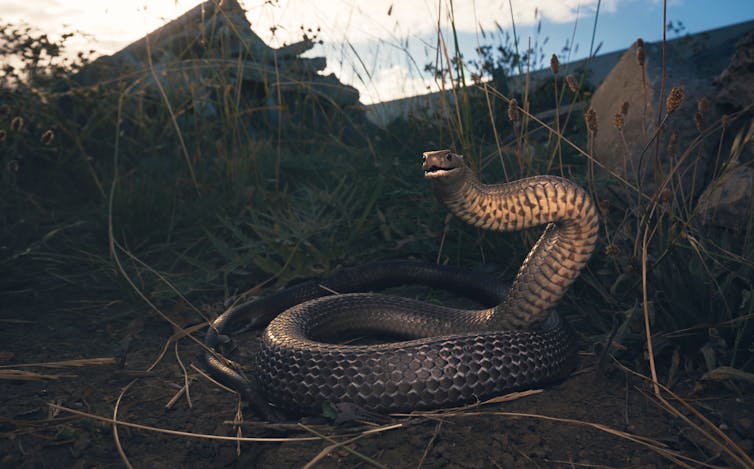
It’s early spring in southern Australia and the sun is, gloriously, out. You decide to head to your local patch of greenery – by the creek, lake, or foreshore – with the sun on your face, the breeze in your hair, and your dog’s tongue blissfully lolling.
Suddenly you see it. Paused on the path just a few meters in front of your feet, soaking up those same springtime rays — a snake.
Love them or loathe them, snakes have been co-existing with, and haunting us, since well before our ancestors called themselves “human”. From the subtle tempter of Genesis to the feathered serpent deities of Mesoamerica, snakes have always been potent symbols of otherness.
Today, to encounter a snake is to brush up against the wild and mysterious heart of the natural world. Snakes are important members of every terrestrial ecosystem across Australia. Even in the most populous parts of the country, snakes inhabit the remnant bushland dispersed throughout our major cities.
But what exactly influences human–snake interactions? Whether you’re hoping to maximise your chances of seeing one of these shy, fascinating critters or wanting to avoid them at all costs, this article is for you.
Snakes In Southern Springtime
In southern Australia, a flurry of animal activity occurs in spring. As resources start becoming plentiful after the relatively lean months of winter, spring is the reproductive season for many plants and animals.
One such resource is heat — a particularly crucial resource for organisms such as reptiles, which don’t make their own body heat (unlike mammals). It’s a common misconception, however, that snakes want as much heat as they can get. Like Goldilocks, snakes want the temperature to be just right.
Southern springs are the right temperature for snakes to bask during the times of day we humans are also out and about. In summer, snakes, including venomous species such as tiger snakes and brown snakes, are typically more active very early in the morning, late in the evening, or during the night when temperatures are not too high for them.

After a slow winter, snakes are both hungry (they may have been fasting for months!) and on the lookout for eligible members of the opposite sex. Basking, hunting, and searching for a mate brings snakes out into the open in spring a bit more than at other times of year, so we’re most likely to encounter them during this time.
Snake Activity In Northern Australia
Like all things, snake activity is a little different in the north. Spare a thought for those poor northern Australians who will never know the joys of a snake-filled springtime.
Still, the north has far more snake species than the south, including many species of non-venomous python — the farther south you go, the more our snake fauna is dominated by venomous species (check out Australian Reptile Online Database for distribution maps).

Because of the unforgiving year-round heat across northern Australia, temperature doesn’t drive snake activity as it does in the south. You will rarely see a basking snake in Australia’s Top End, they’re too busy avoiding the heat.
Instead, snake activity is driven by another important resource – rain. In the Top End, this means snakes are most often encountered following the wet season (April–June) when prey and water abound.
In other, more arid “boom and bust” systems, large rainfall events may only happen every five to ten years. When they do, they can trigger huge flurries of snake activity as the serpents emerge to take advantage of fleetingly available prey.
Snakes Indicate Ecosystem Health
From the moment of birth, all species of snake are predatory, although some, like shovel-nosed snakes, prey only upon eggs.

In some terrestrial Australian ecosystems, snakes are near the top of the food chain. After reaching a certain size, they have few predators of their own. A two-metre coastal taipan in the cane fields of northern Queensland, for example, has more to fear from harvesters than it does from any natural predator.
For large snakes to persist in an environment, they need an abundance of their prey (mice, frogs and lizards), as well as all the species their prey feed upon (invertebrates, even smaller animals, or plants).

Snakes often also have specific habitat requirements. In general, they need shelter and protection from bigger predators, which might include birds of prey, predatory mammals such as native marsupials or introduced cats and foxes, or other snakes. They also need opportunities for safely regulating their body temperature.
This means a snake will only call a place home if it has both a functioning food-web and the necessary habitat complexity. So remember, if you see snakes in your backyard or local park, it’s a sign the ecosystem is doing pretty well.
Snakes Don’t Want To Bite You
Snakes are awesome predators, but no Australian snake is interested in eating a human. In fact, they want as little to do with us giant hairless apes as possible.
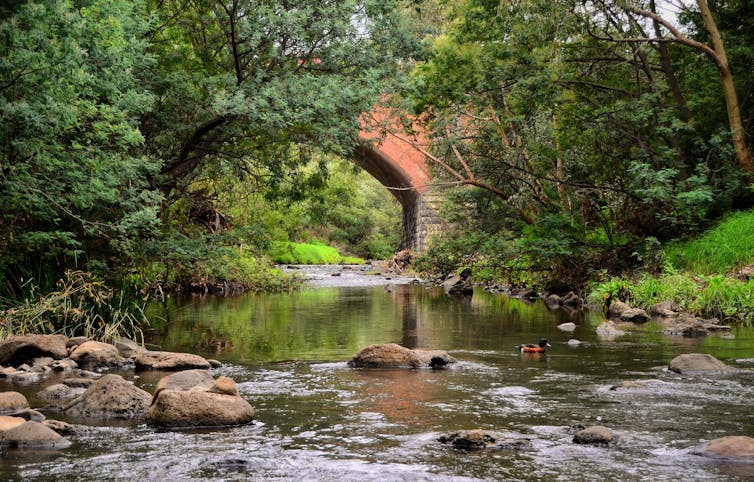
Why? Because snakes are actually quite vulnerable animals. Compared to many other species, they are small, have no sharp claws or strong limbs, and limited energy to put up a fight — they are basically limbless lizards with different teeth.
For those that possess it, venom is a last resort and only a minority of species —such as taipans, brown snakes, tiger snakes, and death adders — can deliver a life-threatening bite to a person. But snakes would much rather use their venom to subdue prey (that’s what they have it for) than to defend themselves.
When snakes bite humans in Australia, it’s a defensive reaction to a large animal they view as a potential predator. Remember, they can’t understand your intentions, even if those intentions are good.

If you’re lucky enough to see a wild snake, and if you respect its boundaries and give it personal space, it’s sure to do the same for you. Keep dogs on the lead in snakey areas and educate your kids to be snake-smart from as young as possible.
Even though snakes don’t want to bite, snakebite envenoming can be a life-threatening emergency. Learn first aid, and when you go for a walk in one of those sanctuaries of greenery that snakes like as much as we do, carry a compression bandage (or three).
It’s almost certain you will never need it, but it could just save a life.
Read more: Does Australia really have the deadliest snakes? We debunk 6 common myths ![]()
Timothy N. W. Jackson, Postdoctoral Research Fellow, Australian Venom Research Unit, The University of Melbourne; Chris J Jolly, Postdoctoral Research Fellow, Charles Sturt University, and Damian Lettoof, PhD Candidate, Curtin University
This article is republished from The Conversation under a Creative Commons license. Read the original article.
The clock is ticking on net-zero, and Australia’s farmers must not get a free pass
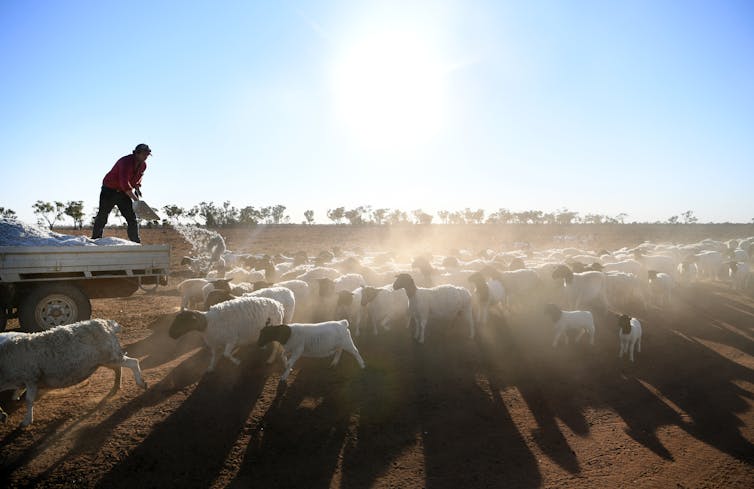
Political momentum is growing in Australia to cut greenhouse gas emissions to net-zero by 2050. On Friday, Treasurer Josh Frydenberg was the latest member of the federal government to throw his weight behind the goal, and over the weekend, Prime Minister Scott Morrison acknowledged “the world is transitioning to a new energy economy”.
But for Australia to achieve net-zero across the economy, emissions from agriculture must fall dramatically. Agriculture contributed about 15% to Australia’s greenhouse gas emissions in 2019 – most of it from cattle and sheep. If herd numbers recover from the recent drought, the sector’s emissions are projected to rise.
Cutting agriculture emissions will not be easy. The difficulties have reportedly triggered concern in the Nationals’ about the cost of the transition for farmers, including calls for agriculture to be carved out of any net-zero target.
But as our new Grattan Institute report today makes clear, agriculture must not be granted this exemption. Instead, the federal government should do more to encourage farmers to adopt low-emissions technologies and practices – some of which can be deployed now.
Read more: Nationals' push to carve farming from a net-zero target is misguided and dangerous
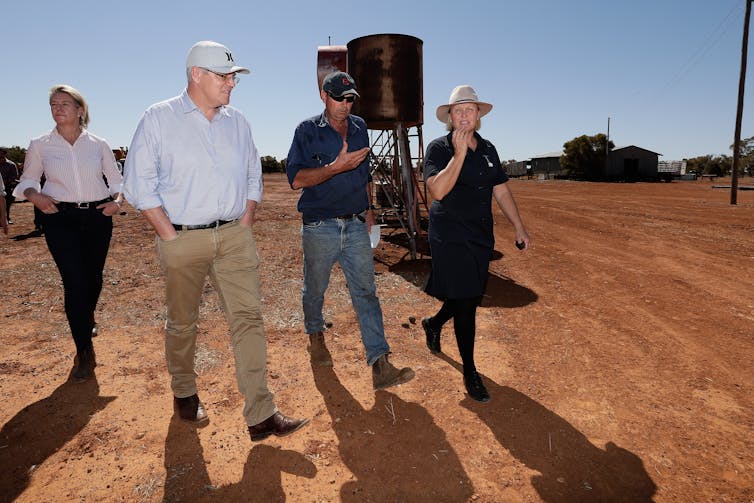
Three Good Reasons Farmers Must Go Net-Zero
Many farmers want to be part of the climate solution – and must be – for three main reasons.
First, the agriculture sector is uniquely vulnerable to a changing climate. Already, changes in rainfall have cut profits across the sector by 23% compared to what could have been achieved in pre-2000 conditions. The effect is even worse for cropping farmers.
Livestock farmers face risks, too. If global warming reaches 3℃, livestock in northern Australia are expected to suffer heat stress almost daily.
Second, parts of the sector are highly exposed to international markets – for example, about three-quarters of Australia’s red meat is exported.
There are fears Australian producers may face a border tax in some markets if they don’t cut emissions. The European Union, for instance, plans to introduce tariffs as early as 2023 on some products from countries without effective carbon pricing, though agriculture will not be included initially.
Third, the industry recognises action on climate change can often boost farm productivity, or help farmers secure resilient revenue streams. For example, trees provide shade for animals, while good soil management can preserve the land’s fertility. Both activities can store carbon and may generate carbon credits.
Carbon credits can be used to offset farm emissions, or sold to other emitters. In a net-zero future, farmers can maximise their carbon credit revenue by minimising their own emissions, leaving them more carbon credits to sell.
The agriculture sector itself is increasingly embracing the net-zero goal. The National Farmers Federation supports an economy-wide aspiration to be net-zero by 2050, with some conditions. The red meat and pork industries have gone further, committing to be carbon neutral by 2030 and 2025 respectively.

What Can Be Done?
Australian agricultural activities emitted about 76 million tonnes of carbon dioxide-equivalent emissions in 2019. Of this, about 48 million tonnes were methane belched by cattle and sheep, and a further 11 million came from their excrement.
The sector’s non-animal emissions largely came from burning diesel, the use of fertiliser, and the breakdown of leftover plant material from cropping.
Unlike in, say, the electricity sector, it’s not possible to completely eliminate agricultural emissions, and deep emissions cuts look difficult in the near term. That’s because methane produced in the stomachs of cattle and sheep represents more than 60% of agricultural emissions; these cannot be captured, or eliminated through renewable energy technology.
Supplements added to stock feed - which reduce the amount of methane the animal produces - are the most promising options to reduce agricultural emissions. These supplements include red algae and the chemical 3-nitrooxypropanol, both of which may cut methane by up to 90% if used consistently at the right dose.
But it’s difficult to distribute these feed supplements to Australian grazing cattle and sheep every day. At any given time, only about 4% of Australia’s cattle are in feedlots where their diet can be easily controlled.
Diesel use can be reduced by electrifying farm machinery, but electric models are not yet widely available or affordable for all purposes.
These challenges slow the realistic rate at which the sector can cut emissions. Yet there are things that can be done today.
Many manure emissions can be avoided through smarter management. For example, on intensive livestock farms, manure is often stored in ponds where it releases methane. This methane can be captured and burnt, emitting the weaker greenhouse gas, carbon dioxide, instead.
And better targeted fertiliser use is a clear win-win – it would save farmers money and reduce emissions of nitrous oxide, a potent greenhouse gas.
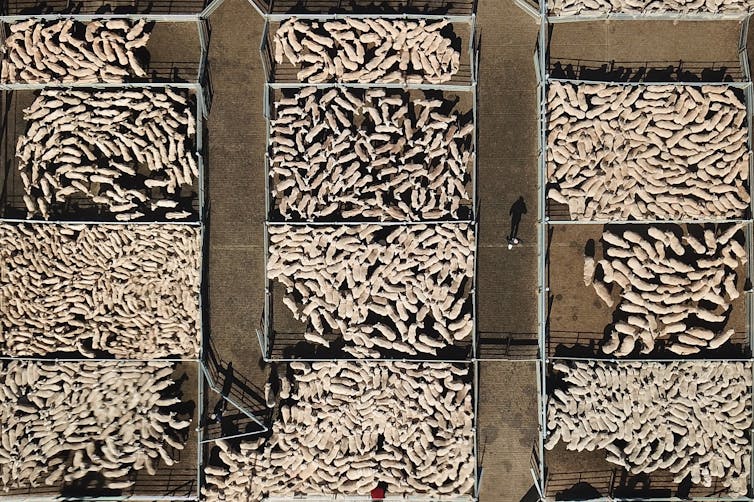
Governments Must Walk And Chew Gum
An economy-wide carbon price would be the best way for Australia to reduce emissions in an economically efficient manner. But the political reality is that carbon pricing is out of reach, at least for now. So Australia should pursue sector-specific policies – including in agriculture.
Governments must walk and chew gum. That means introducing policies to support emissions-reducing actions that farmers can take today, while investing alongside the industry in potential high-impact solutions for the longer term.
Accelerating near-term action will require improving the federal government’s Emissions Reduction Fund, to help more farmers generate Australian carbon credit units. It will also require more investment in outreach programs to give farmers the knowledge they need to reduce emissions.
Improving the long-term emissions outlook for the agriculture sector requires investment in high-impact research, development and deployment. Bringing down the cost of new technologies is possible with deployment at scale: all governments should consider what combination of subsidies, penalties and regulations will best drive this.
Agriculture must not become the missing piece in Australia’s net-zero puzzle. Without action today, the sector may become Australia’s largest source of emissions in coming decades. This would require hugely expensive carbon offsetting - paid for by taxpayers, consumers and farmers themselves.
James Ha, Associate, Grattan Institute
This article is republished from The Conversation under a Creative Commons license. Read the original article.
When fire hits, do koalas flee or stick to their tree? Answering these and other questions is vital
Pablo Negret, The University of Queensland and Daniel Lunney, University of SydneyFigures released this week suggest Australia’s koala populations have plummeted by 30% in three years, and fewer than 58,000 now remain in the wild.
The statement from the Australian Koala Foundation has not been verified on the ground, giving it a high degree of uncertainty. But the claim aligns with a number of studies showing some koala populations are rapidly declining, particularly in Queensland and New South Whales.
Fire is an increasing threat to koalas; the 2019-20 megafires are estimated to have affected more than 60,000 koalas and reduced population numbers at multiple sites, including several areas of New South Wales. As bushfire risk increases under climate change, eucalyptus forest where koalas live are expected to suffer further impacts in the next 50-100 years.
So what’s the best way to protect these iconic animals from fires? Our new report for the National Environmental Science Program (NESP) sought to answer this question. We identified actions to reduce the risk of koalas being harmed by fires, and found gaps in scientific knowledge where more research is urgently needed.
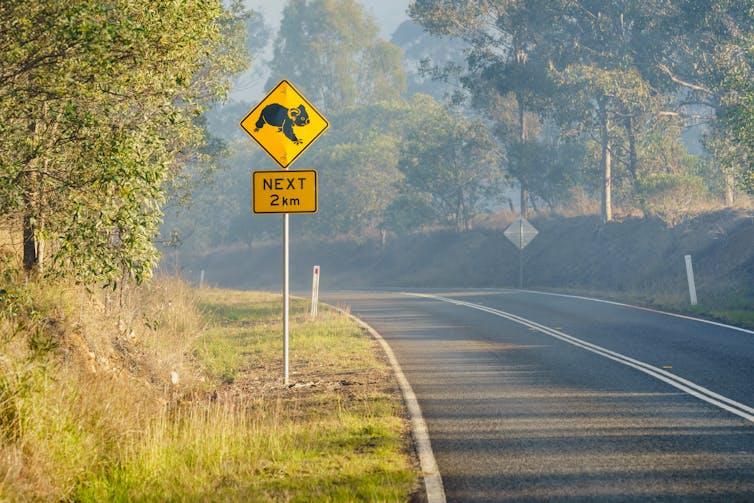
A Few Big Unknowns
Our research found scientific understanding of the interaction between fire management and koala conservation is lacking in three areas.
First, more research is needed on koala movements and their activity patterns before, during and after fires. For example, do koalas move during fire or stay in the same trees?
Evidence shows koalas rapidly move to and use recently burnt habitat. But it’s not known whether koalas found in recently burnt areas are new to that part of the forest or inhabited it before the fire.
After bushfires and prescribed burns, koalas can be injured by smouldering bark or burning embers when moving between trees. They can also become dehydrated. But how this affects koala movement and survival is barely understood.
Second, we need better understanding of how prescribed burning affects koala populations, in both the short and long term. Prescribed burning may benefit koalas if it reduces the severity of bushfires, but it can also kill or injure individual koalas. Better understanding the positives and negatives is crucial.
This might be achieved through long-term GPS radio-tracking of individual koalas, or compiling information about injured or dead koalas after prescribed burns and reporting it to conservation authorities.
Third, we need to know more about links between habitat connectivity, bushfire characteristics and koala population dynamics.
For example, fire can cause koala habitat to fragment. This makes habitat drier, which in turn may increase fire frequency and severity. But increased fragmentation can also limit the spread of fire and make it easier to control, which ultimately benefits koalas. More research into these trade-offs is required.
Read more: Stopping koala extinction is agonisingly simple. But here's why I'm not optimistic
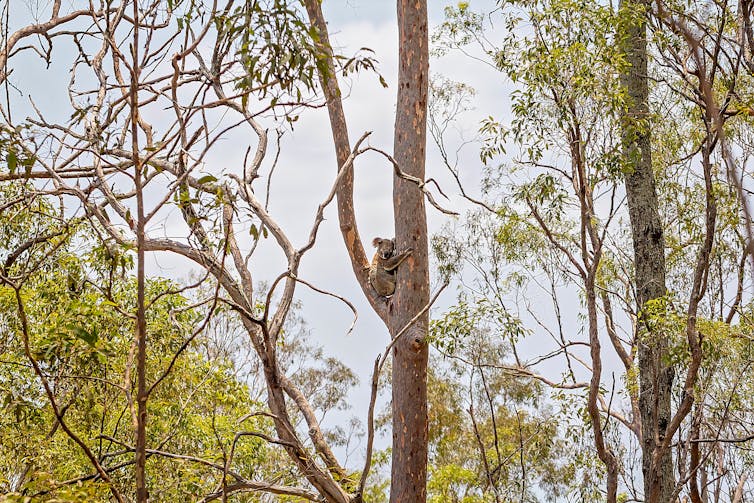
Fires And Koalas: A Roadmap
Koalas can be protected from fires in various ways, including managing fire risk or, when fires do occur, managing koala populations and habitat to increase the chance of recovery.
But to date, there’s been little guidance about how effective various management actions are, and how best to allocate resources.
Our framework, one of the first of its kind, sought to address these questions. It can be used by land managers, scientists, koala rehabilitation groups, the media and the general public.
The work involved reviewing existing literature on fire ecology and management, as well as koala ecology and conservation. We also gathered expert advice through individual discussions and workshops in Queensland and New South Wales.
We identified several goals that, if achieved, will help maintain koala populations in fire prone landscapes. They include:
improving or maintaining koala habitat and koala populations before and after fires. This might involve replanting, weed management, reforestation and pest control, long-term monitoring of koala populations and their habitat or minimising other threats, such as vehicle collisions, dog attacks, habitat loss and climate change
maintaining or restoring fire patterns suited to an ecosystem – for example, by conducting prescribed burning to make an area less flammable in the case of altered fire frequency, or so-called “mosaic” burning to create patches of burnt and unburnt areas
actions during bushfires, such as creating a low-intensity backburn that travels down a slope away from koala areas
exchanging knowledge between koala conservation organisations and Traditional Owners, Indigenous communities of the area and the various fire management authorities
effective post-fire management, such as quickly rescuing injured koalas for rehabilitation, and restoring key koala habitat.
Read more: Scientists find burnt, starving koalas weeks after the bushfires
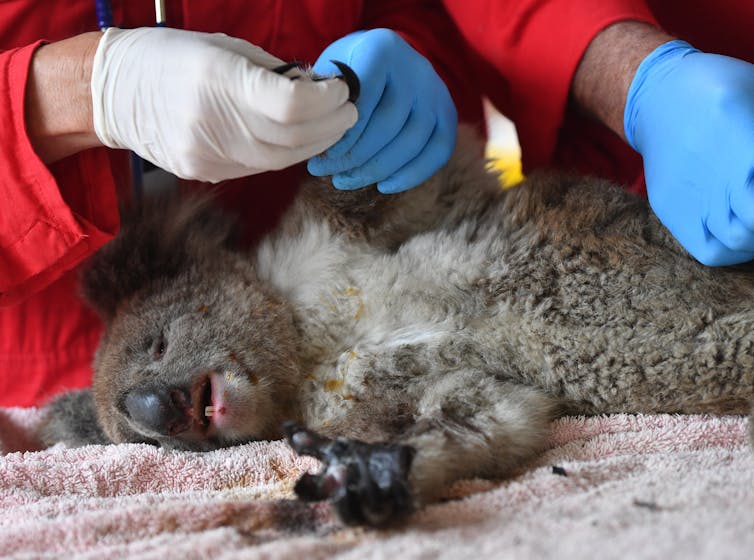
Looking Ahead
Our proposed strategies and actions should also take into account other priorities, such as human safety, property protection and cultural values of Indigenous people and others.
Our framework requires further development. But it’s a first step in bringing together information previously scattered across different sources and branches of knowledge.
The report gives those working to protect koalas, and other tree-dwelling species such as greater glider, a set of guidelines to manage fire and ensure koala conservation strategies are effective. Our research methods can also be used to identify fire management strategies for other species around the world.![]()
Pablo Negret, Postdoctoral research fellow, The University of Queensland and Daniel Lunney, Adjunct professor, University of Sydney
This article is republished from The Conversation under a Creative Commons license. Read the original article.
Scientists still don’t know how far melting in Antarctica will go – or the sea level rise it will unleash
Chen Zhao, University of Tasmania and Rupert Gladstone, University of LaplandThe Antarctic ice sheet is the largest mass of ice in the world, holding around 60% of the world’s fresh water. If it all melted, global average sea levels would rise by 58 metres. But scientists are grappling with exactly how global warming will affect this great ice sheet.
This knowledge gap was reflected in the latest report from the Intergovernmental Panel on Climate Change (IPCC). It contains projections from models in which important processes affecting the ice sheets, known as feedbacks and tipping points, are absent because scientific understanding is lacking.
Projected sea level rise will have widespread effects in Australia and around the world. But current projections of ice sheet melt are so wide that developing ways for societies to adapt will be incredibly expensive and difficult.
If the world is to effectively adapt to sea level rise with minimal cost, we must quickly address the uncertainty surrounding Antarctica’s melting ice sheet. This requires significant investment in scientific capacity.
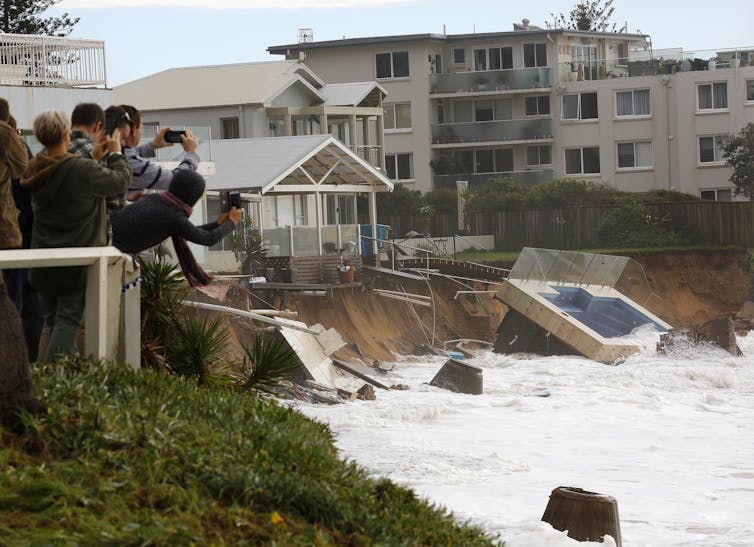
The Great Unknown
Ice loss from the Antarctic and Greenland ice sheets was the largest contributor to sea level rise in recent decades. Even if all greenhouse gas emissions ceased today, the heat already in the ocean and atmosphere would cause substantial ice loss and a corresponding rise in sea levels. But exactly how much, and how fast, remains unclear.
Scientific understanding of ice sheet processes, and of the variability of the forces that affect ice sheets, is incredibly limited. This is largely because much of the ice sheets are in very remote and harsh environments, and so difficult to access.
This lack of information is one of the main sources of uncertainty in the models used to estimate ice mass loss.
At the moment, quantifying how much the Greenland and Antarctic ice sheets will contribute to sea level rise primarily involves an international scientific collaboration known as the “Ice Sheet Model Intercomparison Project for CMIP6”, or ISMIP6, of which we are part.
The project includes experts in ice sheet and climate modelling and observations. It produces computer simulations of what might happen if the polar regions melt under different climate scenarios, to improve projections of sea level rise.
The project also investigates ice sheet–climate feedbacks. In other words, it looks at how processes in the oceans and atmosphere will affect the Antarctic and Greenland ice sheets, including whether the changes might cause them to collapse – leading to large and sudden increases in sea level.
Read more: Anatomy of a heatwave: how Antarctica recorded a 20.75°C day last month

Melting From Below
Research has identified so-called “basal melt” as the most significant driver of Antarctic ice loss. Basal melt refers to the melting of ice shelves from underneath, and in the case of Antarctica, interactions with the ocean are thought to be the main cause. But gathering scientific observations beneath ice shelves is a major logistical challenge, leading to a dearth of data about this phenomenon.
This and other constraints mean the rate of progress in ice sheet modelling has been insufficient to date, and so active ice sheet models are not included in climate models.
Scientists must instead make projections using the ice sheet models in isolation. This hinders scientific attempts to accurately simulate the feedback between ice and climate.
For example, it creates much uncertainty in how the interaction between the ocean and the ice shelf will affect ice mass loss, and how the very cold, fresh meltwater will make its way back to global oceans and cause sea level rise, and potentially disrupt currents.
Despite the uncertainties ISMIP6 is dealing with, it has published a series of recent research including a key paper published in Nature in May. This found if the world met the Paris Agreement target of limiting global warming to 1.5℃ this century, land ice melt would cause global sea level rise of about 13cm by 2100, in the most optimistic scenario. This is compared to a rise of 25cm under the world’s current emissions-reduction pledges.
The study also outlines a pessimistic, but still plausible, basal melt scenario for Antarctica in which sea levels could be five times higher than in the main scenarios.
The breadth of such findings underpinned sea level projections in the latest IPCC report. The Antarctic ice sheet once again represented the greatest source of uncertainty in these projections.
The below graph shows the IPCC’s latest sea level projections. The shaded area reflects the large uncertainties in models using the same basic data sets and approaches. The dotted line reflects deep uncertainty about tipping points and thresholds in ice sheet stability.
IPCC reports are intended to guide global policy-makers in coming years and decades. But the uncertainties about ice melt from Antarctica limit the usefulness of projections by the IPCC and others.
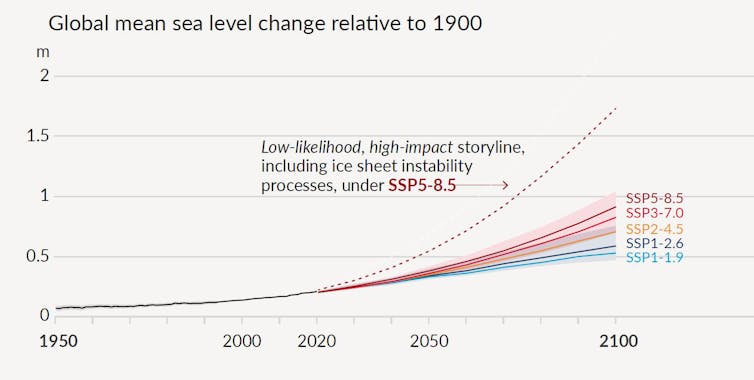
Dealing With Uncertainty
Future sea level rise poses big challenges such as human displacement, infrastructure loss, interference with agriculture, a potential influx of climate refugees, and coastal habitat degradation.
It’s crucial that ice sheet models are improved, tested robustly against real-world observations, then integrated into the next generation of international climate models – including those being developed in Australia.
International collaborations such as NECKLACE and RISE are seeking to coordinate international effort between models and observations. Significant investment across these projects is needed.
Sea levels will continue rising in the coming decades and centuries. Ice sheet projections must be narrowed down to ensure current and future generations can adapt safely and efficiently.
The authors would like to acknowledge the contributions of Dr Ben Galton-Fenzi, Dr Rupert Gladstone, Dr Thomas Zwinger and David Reilly to the research from which this article draws.![]()
Chen Zhao, Research associate, University of Tasmania and Rupert Gladstone, Adjunct professor, University of Lapland
This article is republished from The Conversation under a Creative Commons license. Read the original article.
Arctic sea ice hits its minimum extent for the year – 2 NASA scientists explain what’s driving the overall decline
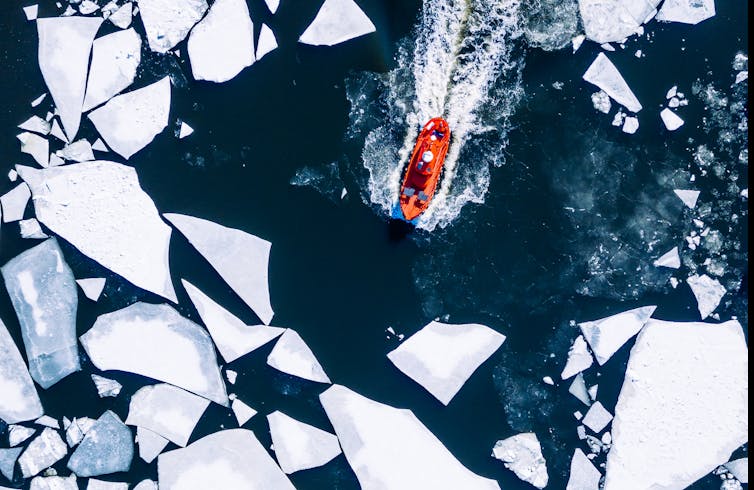
September marks the end of the summer sea ice melt season and the Arctic sea ice minimum, when sea ice over the Northern Hemisphere ocean reaches its lowest extent of the year.
For ship captains hoping to navigate across the Arctic, this is typically their best chance to do it, especially in more recent years. Sea ice cover there has dropped by roughly half since the 1980s as a direct result of increased carbon dioxide from human activities.
As NASA scientists, we analyze the causes and consequences of sea ice change. In 2021, the Arctic’s sea ice cover reached its minimum extent on Sept. 16. While it wasn’t a record low, a look back through the melt season offers some insight into the relentless decline of Arctic sea ice in the face of climate change.
The Arctic Is Heating Up
In recent years, Arctic sea ice levels have been at their lowest since at least 1850 for the annual mean and in at least 1,000 years for late summer, according to the latest climate assessment from the U.N.’s Intergovernmental Panel on Climate Change. The IPCC concluded that “the Arctic is likely to be practically sea ice free in September at least once before 2050.”
As the Arctic’s bright ice is replaced by a darker open ocean surface, less of the sun’s radiation is reflected back to space, driving additional heating and ice loss. This albedo feedback loop is just one of several reasons why the Arctic is warming about three times faster than the planet as a whole.
What Happened To The Sea Ice In 2021?
The stage for this year’s sea ice minimum was set last winter. The Arctic experienced an anomalous high pressure system and strong clockwise winds, driving the thickest, oldest sea ice of the Central Arctic into the Beaufort Sea, north of Alaska. Sea ice scientists were taking note.
Summer melt began in earnest in May, a month that also featured multiple cyclones entering the Arctic. This increased sea ice drift but also kept temperatures relatively low, limiting the amount of melt.
The extent and pace of melting increased significantly in June, which featured a predominant low-pressure system and temperatures that were a few degrees higher than average.
By the beginning of July, conditions were tracking very close to the record low set in 2012, but the rate of decline slowed considerably during the second half of the month. Cyclones entering the Arctic from Siberia generated counterclockwise winds and ice drifts. This counterclockwise ice circulation pattern generally reduces the amount of sea ice moving out of the Arctic through the Fram Strait, east of Greenland. This likely contributed to the record low summer sea ice conditions observed in the Greenland Sea.
This ice circulation pattern also increased ice export out of the Laptev Sea, off Siberia, helping create a new record low for early summer ice area in that region. The low pressure system also increased cloudiness over the Arctic. Clouds generally block incoming solar radiation, reducing sea ice melt, but they can also trap heat lost from the surface, so their impact on sea ice melt can be a mixed bag.
In August, sea ice decline slowed considerably, with warm conditions prevailing along the Siberian coast, but cooler temperatures north of Alaska. The Northern Sea Route – which Russia has been promoting as a global shipping route as the planet warms – was actually blocked with ice for the first time since 2008, although ice breaker-supported transits were still very much possible.
At this stage of the melt season, the sea ice pack is at its weakest and is highly responsive to the weather conditions of a given day or week. Subtle shifts can have big impacts. Freak end-of-summer weather events have been linked to the record low sea ice years of 2007 and 2012. “The Great Arctic Cyclone of 2012” is an interesting example.
There’s ongoing debate over the effect they have. However, scientists are broadly in agreement that specific storms may not have actually played that big a role in driving the record lows in those years – things are never that straightforward when it comes to weather and sea ice.
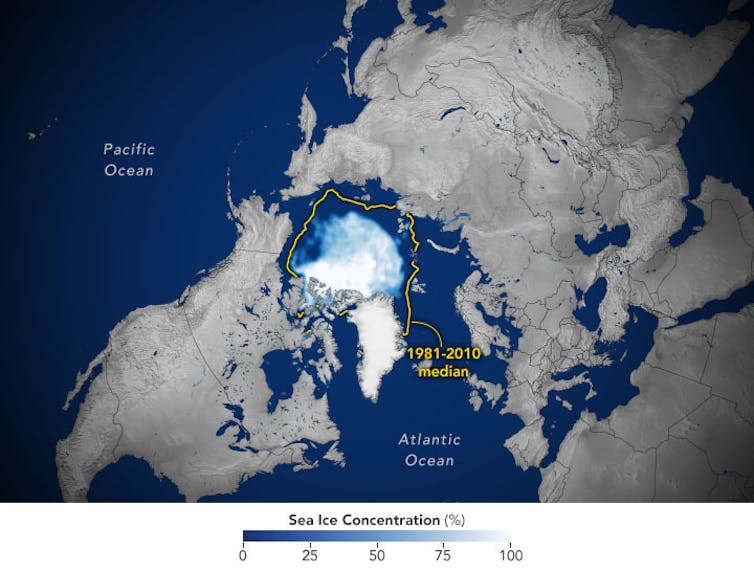
The Arctic sea ice reached its 2021 minimum extent on Sept. 16, coming in at 4.72 million square kilometers (1.82 million square miles), the 12th lowest on record.
So, the 2021 melt season was, despite all the stops and starts, pretty typical for our new Arctic, with the September minimum ending up slightly higher than what we would have expected from the long-term downward trend. But various new record lows were set in other months and regions of the Arctic.
As the hours of sunlight dwindle over the coming weeks and temperatures drop, Arctic sea ice will start to refreeze. The ice pack will thicken and expand as the surrounding ocean surface temperatures drop toward the freezing point, releasing a lot of the heat that had been absorbed and stored through summer.
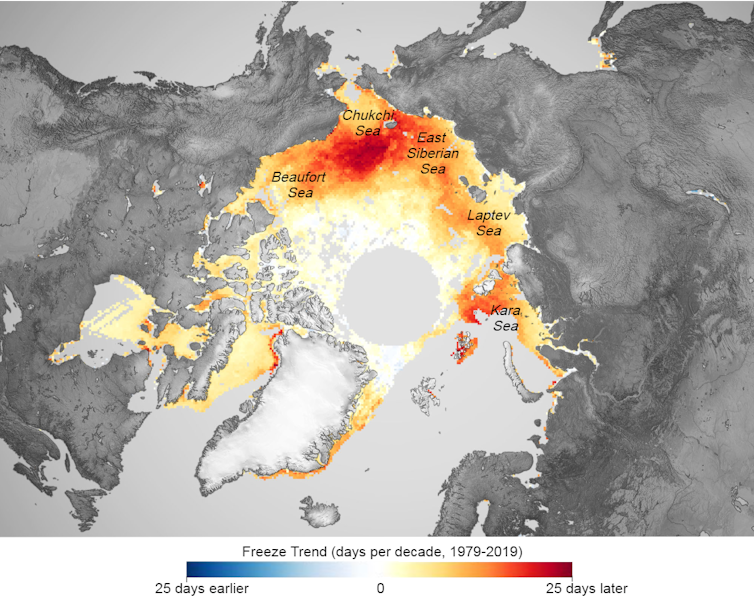
This refreeze has started later in recent years, shifting into October and even November. The more heat the ocean gains during summer, the more heat needs to be lost before ice can begin to form again. Because of this, some of the biggest warming signals are actually observed in fall, despite all the attention given to summer ice losses.
There’s Still A Lot We Don’t Know
For people living and working in the high Arctic, understanding local ice conditions on a given day or week is what really matters. And predicting Arctic sea ice at these more local scales is even more challenging.
As 2021 demonstrated, sea ice is highly dynamic – it moves and melts in response to the weather patterns of the day. Think how hard it is for forecasters to predict the weather where you live, with good understanding of weather systems and many observations available, compared to the Arctic, where few direct observations exist.
Weather events can also trigger local feedback loops. A freak heat wave, for example, can trigger ice melt and further warming. Winds and ocean currents also break up and spread ice out across the ocean, where it can be more prone to melt.
Sea ice scientists are hard at work trying to understand these various processes and improve our predictive models. A key missing part of the puzzle for understanding sea ice loss is ice thickness.
Thickness times area equals volume. Like area, sea ice thickness is thought to have halved since the 1980s, meaning today’s Arctic ice pack is only about a quarter of the volume it was just a few decades ago. For those hoping to navigate the Arctic Ocean, knowing the thickness of any ice they may encounter is crucial. Sea ice thickness is much harder to measure consistently from space. However, new technologies, like ICESat-2, are providing key breakthroughs.
Despite all this uncertainty, it’s looking pretty likely that summer ice-free Arctic conditions are not too far away. The good news is that the path forward is still largely dependent on future emissions, and there is still no evidence the planet has passed a tipping point of sea ice loss, meaning humans are still very much in the driver’s seat.
This article was updated to correct miles to kilometers transposed numbers.![]()
Alek Petty, Associate Research Scientist in polar sea ice variability, NASA and Linette Boisvert, Sea Ice Scientist and Deputy Project Scientist for NASA's Operation IceBridge, NASA
This article is republished from The Conversation under a Creative Commons license. Read the original article.
Bushcare In Pittwater
Where we work Which day What time
Avalon
Angophora Reserve 3rd Sunday 8:30 - 11:30am
Avalon Dunes 1st Sunday 8:30 - 11:30am
Avalon Golf Course 2nd Wednesday 3 - 5:30pm
Careel Creek 4th Saturday 8:30 - 11:30am
Toongari Reserve 3rd Saturday 9 - 12noon (8 - 11am in summer)
Bangalley Headland 2nd Sunday 9 to 12noon
Bayview
Winnererremy Bay 4th Sunday 9 to 12noon
Bilgola
North Bilgola Beach 3rd Monday 9 - 12noon
Algona Reserve 1st Saturday 9 - 12noon
Plateau Park 1st Friday 8:30 - 11:30am
Church Point
Browns Bay Reserve 1st Tuesday 9 - 12noon
McCarrs Creek Reserve Contact Bushcare Officer To be confirmed
Clareville
Old Wharf Reserve 3rd Saturday 8 - 11am
Elanora
Kundibah Reserve 4th Sunday 8:30 - 11:30am
 Mona Vale
Mona Vale Mona Vale Beach Basin 1st Saturday 8 - 11am
Mona Vale Dunes 2nd Saturday +3rd Thursday 8:30 - 11:30am
Newport
Bungan Beach 4th Sunday 9 - 12noon
Crescent Reserve 3rd Sunday 9 - 12noon
North Newport Beach 4th Saturday 8:30 - 11:30am
Porter Reserve 2nd Saturday 8 - 11am
North Narrabeen
Irrawong Reserve 2nd Saturday 2 - 5pm
Palm Beach
North Palm Beach Dunes 3rd Saturday 9 - 12noon
Scotland Island
Catherine Park 2nd Sunday 10 - 12:30pm
Elizabeth Park 1st Saturday 9 - 12noon
Pathilda Reserve 3rd Saturday 9 - 12noon
Warriewood
Warriewood Wetlands 1st Sunday 8:30 - 11:30am
Whale Beach
Norma Park 1st Friday 9 - 12noon
Western Foreshores
Coopers Point, Elvina Bay 2nd Sunday 10 - 1pm
Rocky Point, Elvina Bay 1st Monday 9 - 12noon
Gardens And Environment Groups And Organisations In Pittwater
Avalon Golf Course Bushcare Needs You


Pittwater Reserves
A History Of The Campaign For Preservation Of The Warriewood Escarpment by David Palmer OAM and Angus Gordon OAM
Angophora Reserve - Angophora Reserve Flowers
Annie Wyatt Reserve - A Pictorial
Avalon's Village Green: Avalon Park Becomes Dunbar Park - Some History + Toongari Reserve and Catalpa Reserve
Bairne Walking Track Ku-Ring-Gai Chase NP by Kevin Murray
Bangalley Headland Bangalley Mid Winter
Banksias of Pittwater
Barrenjoey Headland: Spring flowers Barrenjoey Headland after fire
Bayview Baths
Bayview Wetlands
Beeby Park
Bilgola Beach
Botham's Beach
Bungan Beach Bush Care
Careel Bay Saltmarsh plants
Careel Bay Birds
Careel Bay Clean Up day
Careel Bay Playing Fields History and Current
Careel Creek
Careel Creek - If you rebuild it they will come
Centre trail in Ku-ring-gai Chase National Park
Chiltern Track- Ingleside by Marita Macrae
Clareville Beach
Clareville/Long Beach Reserve + some History
Coastal Stability Series: Cabbage Tree Bay To Barrenjoey To Observation Point by John Illingsworth, Pittwater Pathways, and Dr. Peter Mitchell OAM
Cowan Track by Kevin Murray
Currawong State Park Currawong Beach + Currawong Creek
Deep Creek To Warriewood Walk photos by Joe Mills
Drone Gives A New View On Coastal Stability; Bungan: Bungan Headland To Newport Beach + Bilgola: North Newport Beach To Avalon + Bangalley: Avalon Headland To Palm Beach
Dunbar Park - Some History + Toongari Reserve and Catalpa Reserve
Dundundra Falls Reserve: August 2020 photos by Selena Griffith - Listed in 1935
Elsie Track, Scotland Island
Elvina Track in Late Winter 2019 by Penny Gleen
Elvina Bay Walking Track: Spring 2020 photos by Joe Mills
Elvina Bay-Lovett Bay Loop Spring 2020 by Kevin Murray and Joe Mills
Fern Creek - Ingleside Escarpment To Warriewood Walk + Some History photos by Joe Mills
Ingleside
Ingleside Wildflowers August 2013
Irrawong - Ingleside Escarpment Trail Walk Spring 2020 photos by Joe Mills
Irrawong - Mullet Creek Restoration
Katandra Bushland Sanctuary - Ingleside
McCarrs Creek
McCarr's Creek to Church Point to Bayview Waterfront Path
McKay Reserve
Mona Vale Headland, Basin and Beach Restoration
Mount Murray Anderson Walking Track by Kevin Murray and Joe Mills
Mullet Creek
Narrabeen Creek
Narrabeen Lagoon Catchment: Past Notes Present Photos by Margaret Woods
Narrabeen Lagoon State Park
Narrabeen Lagoon State Park Expansion
Narrabeen Rockshelf Aquatic Reserve
Nerang Track, Terrey Hills by Bea Pierce
Newport Bushlink - the Crown of the Hill Linked Reserves
Newport Community Garden - Woolcott Reserve
Newport to Bilgola Bushlink 'From The Crown To The Sea' Paths: Founded In 1956 - A Tip and Quarry Becomes Green Space For People and Wildlife
Pittwater spring: waterbirds return to Wetlands
Riddle Reserve, Bayview
Salvation Loop Trail, Ku-Ring-Gai Chase National Park- Spring 2020 - by Selena Griffith
Stapleton Reserve
Stapleton Park Reserve In Spring 2020: An Urban Ark Of Plants Found Nowhere Else
The Chiltern Track
The Resolute Beach Loop Track At West Head In Ku-Ring-Gai Chase National Park by Kevin Murray
Towlers Bay Walking Track by Joe Mills
Trafalgar Square, Newport: A 'Commons' Park Dedicated By Private Landholders - The Green Heart Of This Community
Turimetta Beach Reserve by Joe Mills, Bea Pierce and Lesley
Turimetta Beach Reserve: Old & New Images (by Kevin Murray) + Some History
Turimetta Headland
Warriewood Wetlands and Irrawong Reserve
Whale Beach Ocean Reserve: 'The Strand' - Some History On Another Great Protected Pittwater Reserve
Winji Jimmi - Water Maze

New Shorebirds WingThing For Youngsters Available To Download
A Shorebirds WingThing educational brochure for kids (A5) helps children learn about shorebirds, their life and journey. The 2021 revised brochure version was published in February 2021 and is available now. You can download a file copy here.
If you would like a free print copy of this brochure, please send a self-addressed envelope with A$1.10 postage (or larger if you would like it unfolded) affixed to: BirdLife Australia, Shorebird WingThing Request, 2-05Shorebird WingThing/60 Leicester St, Carlton VIC 3053.

 Shorebird Identification Booklet
Shorebird Identification Booklet
The Migratory Shorebird Program has just released the third edition of its hugely popular Shorebird Identification Booklet. The team has thoroughly revised and updated this pocket-sized companion for all shorebird counters and interested birders, with lots of useful information on our most common shorebirds, key identification features, sighting distribution maps and short articles on some of BirdLife’s shorebird activities.
The booklet can be downloaded here in PDF file format: http://www.birdlife.org.au/documents/Shorebird_ID_Booklet_V3.pdf
Paper copies can be ordered as well, see http://www.birdlife.org.au/projects/shorebirds-2020/counter-resources for details.
Download BirdLife Australia's children’s education kit to help them learn more about our wading birdlife
Shorebirds are a group of wading birds that can be found feeding on swamps, tidal mudflats, estuaries, beaches and open country. For many people, shorebirds are just those brown birds feeding a long way out on the mud but they are actually a remarkably diverse collection of birds including stilts, sandpipers, snipe, curlews, godwits, plovers and oystercatchers. Each species is superbly adapted to suit its preferred habitat. The Red-necked Stint is as small as a sparrow, with relatively short legs and bill that it pecks food from the surface of the mud with, whereas the Eastern Curlew is over two feet long with a exceptionally long legs and a massively curved beak that it thrusts deep down into the mud to pull out crabs, worms and other creatures hidden below the surface.
Some shorebirds are fairly drab in plumage, especially when they are visiting Australia in their non-breeding season, but when they migrate to their Arctic nesting grounds, they develop a vibrant flush of bright colours to attract a mate. We have 37 types of shorebirds that annually migrate to Australia on some of the most lengthy and arduous journeys in the animal kingdom, but there are also 18 shorebirds that call Australia home all year round.
What all our shorebirds have in common—be they large or small, seasoned traveller or homebody, brightly coloured or in muted tones—is that each species needs adequate safe areas where they can successfully feed and breed.
The National Shorebird Monitoring Program is managed and supported by BirdLife Australia.
This project is supported by Glenelg Hopkins Catchment Management Authority and Hunter Local Land Services through funding from the Australian Government’s National Landcare Program. Funding from Helen Macpherson Smith Trust and Port Phillip Bay Fund is acknowledged.
The National Shorebird Monitoring Program is made possible with the help of over 1,600 volunteers working in coastal and inland habitats all over Australia.
The National Shorebird Monitoring program (started as the Shorebirds 2020 project initiated to re-invigorate monitoring around Australia) is raising awareness of how incredible shorebirds are, and actively engaging the community to participate in gathering information needed to conserve shorebirds.
In the short term, the destruction of tidal ecosystems will need to be stopped, and our program is designed to strengthen the case for protecting these important habitats.
In the long term, there will be a need to mitigate against the likely effects of climate change on a species that travels across the entire range of latitudes where impacts are likely.
The identification and protection of critical areas for shorebirds will need to continue in order to guard against the potential threats associated with habitats in close proximity to nearly half the human population.
Here in Australia, the place where these birds grow up and spend most of their lives, continued monitoring is necessary to inform the best management practice to maintain shorebird populations.
BirdLife Australia believe that we can help secure a brighter future for these remarkable birds by educating stakeholders, gathering information on how and why shorebird populations are changing, and working to grow the community of people who care about shorebirds.
To find out more visit: http://www.birdlife.org.au/projects/shorebirds-2020/shorebirds-2020-program
Aussie Bread Tags Collection Points

International Day Of Older Persons 1st Of October
- To bring awareness of the importance of digital inclusion of older persons, while tackling stereotypes, prejudice and discrimination associated with digitalization, taking into account sociocultural norms and the right to autonomy.
- To highlight policies to leverage digital technologies for full achievement of the sustainable development goals (SDGs).
- To address public and private interests, in the areas of availability, connectivity, design, affordability, capacity building, infrastructure, and innovation.
- To explore the role of policies and legal frameworks to ensure privacy and safety of older persons in the digital world.
- To highlight the need for a legally binding instrument on the rights of older persons and an intersectional person-centered human rights approach for a society for all ages.
AvPals Term 4 2021 Classes Via Zoom
Avpals are pleased to announce our term four training schedule. All courses will be presented using Zoom.
Courses in term four will be conducted each Tuesday afternoon from 1.30pm, using Zoom. There will be a charge of $10 per course except for our introductory presentation on Tuesday October 5th 2021, which is free.
Please CLICK HERE to view to upcoming courses. Use the SHOP menu option to enrol and pay. Feel free to enrol in as many courses as you like. There are many exciting and new courses available.
Below is a summary of Zoom courses for term 4, 2021

Scam Pandemic
- They’ll never ask for any account or personal details by text or email
- They’ll never threaten to cancel your account or arrest you if you don’t pay immediately
- The AFP, Australian Government, and state police services will never ask you to pay a fine with cash, crypto currency such as Bitcoin, gift cards such as iTunes or Google Play and never seek payment for fines or other matters over the phone. If you are in any doubt, call the AFP National Switchboard on (02) 5126 0000
- Never share passwords and personal information
- Anyone asking for a password is probably a scammer
- Be a sceptic when receiving unexpected email attachments, links and texts. If in doubt, delete
- Scammers target everyone, and they sound genuine
- Use up-to-date anti-virus software to protect your computer
- Don’t send money or personal information to people from unusual locations
- Report suspected scams to Scam Watch
Australian Multicultural Health Collaborative To Provide National Voice For CALD Health
EnCOMPASS Community Connectors To Help CALD Older People Navigate Aged Care
- Multicultural Communities Council of Illawarra
- Australian Nursing Home Foundation
- Ethnic Community Services Cooperative
- Advance Diversity Services
- CASS Care
- Multicultural Care
- Western Sydney MRC
- Multicultural Disability Advocacy Association
- Islamic Women’s Association of Australia
- Co.As.It
- Multicultural Council of the Northern Territory
- Inala Community House
- World Wellness Group
- Australian Refugee Association
- Uniting SA
- Multicultural Communities’ Council of SA
- Migrant Resource Centre Tasmania
- Southern Migrant and Refugee Centre
- Sunraysia Mallee Ethnic Communities Council
- Metropolitan Migrant Resource Centre
- Chung Wah Association
- Umbrella Community Care
Follow Nuyina Home
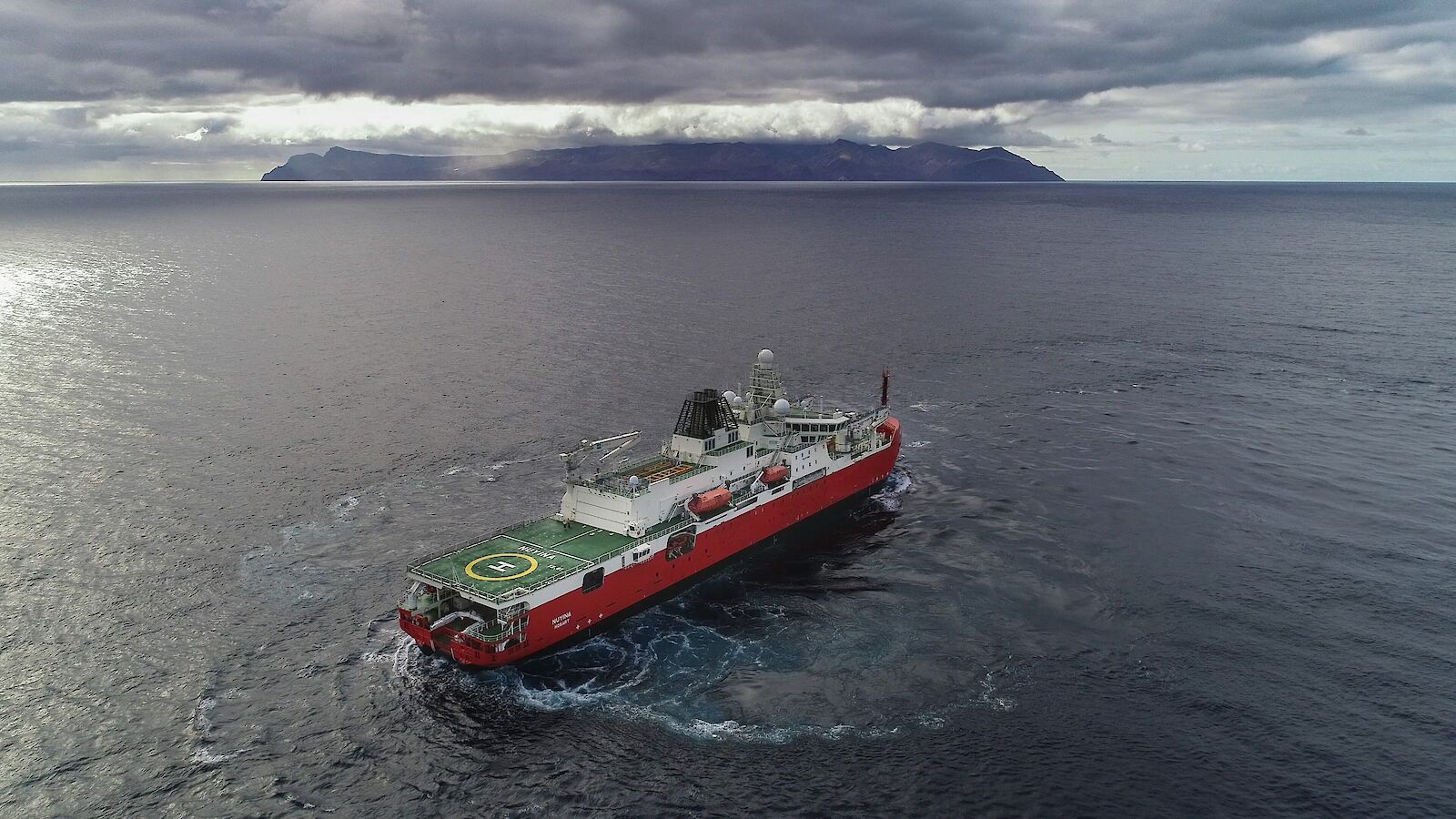
Point And Focus On Hawkesbury River For World Rivers Day
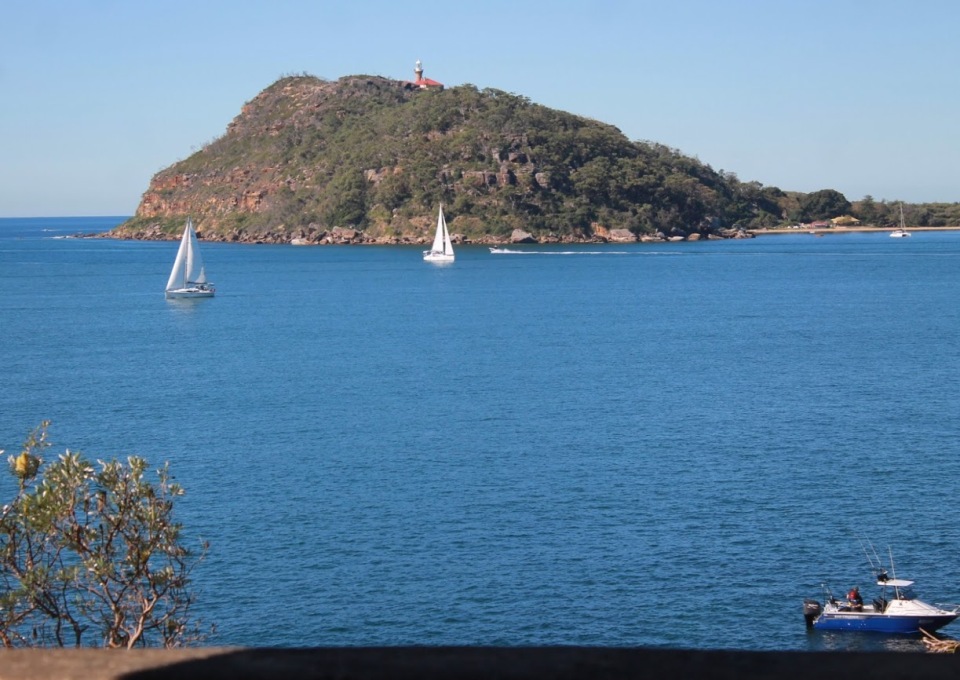
Help Ward Off Dementia Step By Step: New Podcast Shares The Power Of Physical Activity
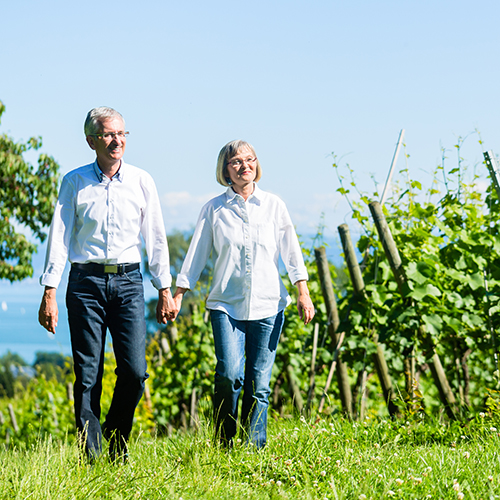
Pension Boost Today An Opportunity To Save More Tomorrow
- An extra $22.40 per fortnight for eligible couples (or $582.40 per annum)
- And for singles $14.80 per fortnight (or $384.80 per annum)
New Report Looks At The Impacts Of Dementia In Australia
Instagram can make teens feel bad about their body, but parents can help. Here’s how

Last week Facebook’s internal research revealed Instagram’s toxic effects on some young people’s body image — particularly girls.
One study by Facebook of teen Instagram users in the US and UK found more than 40% of those who reported feeling “unattractive” said the feelings started when using Instagram.
Boys are also affected, with 14% reportedly saying Instagram made them feel worse about themselves.
As far as we are aware, there have been no reports from Facebook of the impacts on young people who identify as gender diverse. This group is at a particularly high risk of developing body image concerns.
The new information about Instagram’s effects on young people can be concerning for parents and may prompt some to want to ban their kids from using social media. But this is likely to cause significant friction between parents and young people.
Plus, young people often find ways to work around any such bans, making them self-defeating.
We suggest this is an excellent opportunity for parents to start an honest conversation with their children about their online lives. Parents can also encourage their kids to make their online experiences more positive.
What We Know About Social Media And Body Image
The reports from Facebook are not a great surprise to researchers in the field of body image. A review published five years ago on the impacts of social networking sites found their use, among adults and young people, was related to body image concerns and disordered eating.
The review also showed it is not necessarily the amount of time spent on social media, but rather specific activities, such as viewing, editing and posting idealised photos, that are particularly problematic.
Read more: Social media shots affect body image because we only show our best side
The photos or “selfies” posted by celebrities, influencers and even friends on social media may be highly staged and filtered to present the most attractive versions of themselves. Many of these photos are not a realistic portrayal of a person’s true appearance and serve to promote unattainable appearance ideals.
People commonly make comparisons between their own appearance and these edited and unrealistic photos and tend to judge themselves to be less attractive.
These types of comparisons can negatively impact body image and overall mood and can also promote increases in harmful dieting and exercise behaviours. Notably, the impacts of social media comparisons are worse than comparisons made in person. This is because people perceive others on social media to be much more attractive than themselves but only slightly more attractive in person.
But It’s Not All Negative
Other research highlights the many positive aspects of social media. For people with eating disorders, social media and older internet spaces such as chat rooms and forums, are often crucial spaces to share experiences and seek support. This adds a further layer of complexity to ongoing debates around social media and body image.
Social media is a core component of young people’s social lives which allows them to maintain and make new friendships. This form of communication has been vital during the COVID-19 pandemic lockdowns.
Social media activities are likely to form an important part of young people’s identity. So, wherever possible parents could try to keep an open mind and resist the urge to criticise.
Read more: Yes, your child will be exposed to online porn. But don't panic — here's what to do instead
If parents are not sure how to use social media, they could ask their young person to show them around the platform(s) so they can understand more about the content they are consuming.
Such a conversation paves the way for increasing social media literacy in both parents and young people. Social media literacy involves the development of skills to critically analyse and evaluate media messaging and images.
Research has shown social media literacy has positive impacts on young people’s body image. Together with children, parents can discuss the use of filtering and retouching images and videos, and how what is shown online is not always the reality.
What Else Can Parents Do?
Parents can also role model eliminating appearance or weight-based conversations from their own vocabulary, in person and on social media. This includes conversations focused on our own bodies such as comments about a desire to lose weight.
Research has shown parents are a powerful influence on how young people view and speak about their bodies. Parents can be kind in the way they speak about their own and other bodies and praise their children for qualities other than their looks.
Parents can be key players in helping young people make their time on social media more positive and empowering.
Ask young people to check in on how they are feeling when using social media. If following particular accounts makes them feel negative about themselves, ask them to unfollow or mute that person. Instead, encourage them to follow accounts which inspire them in non-appearance based ways and foster a broad range of interests such as sport, travel, art and comedy.
Research has also shown seeking out and seeing positive body image content on social media can improve our sense of body image and overall mood.
To name just a few, we recommend accounts such @theselfloveproject, @naturally_alice and @thenutritiontea on Instagram and @iweigh, @bodyposipanda and @beautyisonlyphotoshopdeep on Facebook.
Parents can also help their children develop a range of coping skills to help them counteract negative thoughts they might have about themselves while using social and when meeting face-to-face.
One such skill is employing self-compassion towards our bodies. Research shows this has positive effects. For example, the compassionate friend exercise involves asking young people: “How would you talk to your best friend if they said they were struggling with how they looked? Now talk to yourself in the same kind way.”
Read more: Women can build positive body image by controlling what they view on social media
Some social media platforms, including Instagram, allow users to create multiple accounts. This can be helpful if a young person is seeing too much content that makes them unhappy. Research shows the positive value of having multiple, perhaps even pseudonymised, social media accounts. Young people can express different facets of their personality and interests through different accounts.
If you are looking for more information and tips for parents and young people, you can chat 24/7 with “KIT” the positive body image chatbot who lives on the Butterfly Foundation website and in Facebook Messenger.
If this article has raised issues for you, or if you’re concerned about someone you know, visit the Butterfly Foundation, or call our national helpline on 1800 33 4673.![]()
Gemma Sharp, NHMRC Early Career Senior Research Fellow, Monash University; Jasmine Fardouly, Research fellow, UNSW; Marilyn Bromberg, Senior Lecturer in Law, The University of Western Australia; Tama Leaver, Professor of Internet Studies, Curtin University, and Ysabel Gerrard, Lecturer in Digital Media and Society, University of Sheffield
This article is republished from The Conversation under a Creative Commons license. Read the original article.
How older people are mastering technology to stay connected after lockdown

It’s a well-worn stereotype: the image of an elderly person fiddling with technology that leaves them completely bamboozled. The media often depict older people struggling to use or manage digital technology. While this is often designed to be humorous, it can undermine them as users of technology. And that’s a problem if it turns older people off from trying to engage with digital devices, as it can affect their wellbeing.
Older adults are already at a digital disadvantage: 18% of over-65s do not have internet access. Propelled by enforced isolation, older people increasingly turned to technology during the pandemic, but not all were able to connect or communicate with friends and family via the internet.
Of course some older people have less experience of digital technology than others, and unsurprisingly describe mixed emotions regarding the use of everyday devices such as smartphones, laptops, e-readers and tablets. They also report not having much confidence when it comes to using them. Lack of control, a sense of being overwhelmed, and poor product design can lead to feelings of being incompetent, alone and even trapped.
Yet for those who persevere, the rewards can be plentiful: completing tasks more easily, communicating more effectively, increased independence and a sense of achievement. These things are important if this growing part of the population is to experience ageing in a more positive and empowering way.
Through our research we wanted to examine these mixed emotions that older people have about using technology, and how they develop ways to combat the challenges they face. While digital technology has been shown to alleviate pressure on health and social care, until now there’s been a limited understanding of how using technology influences the way older adults live.
Attitudes Towards Technology
While many see digital technology as a challenge to be conquered, there are different ways of overcoming or confronting the obstacles. Some may view the challenge as a personal goal, using instruction manuals or simply trial and error to prevail over software updates, unwanted viruses or junk mail.
Others view digital technology as a collective endeavour, asking friends and family for help. Not only is this the most successful strategy, it also fosters important interaction with others. For example, during the pandemic many younger people acted as IT support for older friends and relatives.
Not all elderly people have this kind of network, but arguably they can benefit most from greater use of the internet to feel connected and keep loneliness at bay. In these situations, there are useful schemes run by charities such as Age UK, where digital champions can help older adults master technology.
Adopting Strategies
Understandably frustrations emerge when learning a new skill, but some older people have shown how they overcome their exasperation by developing a relationship with their devices. Naming their tablet or humanising their phone helps to bond older people to technology.
In our study different devices were often referred to as having a personality, gender, or even a mind of their own. This strategy brings a little levity to a situation that could otherwise be stressful.
Once these people become more used to digital technology, familiarity can encourage continued use. With a new device, software and apps they know and understand can be downloaded so that it feels less alien. Similarly, if a touchscreen is problematic, some older people might decide to use a keyboard and mouse instead.

Breeding Confidence
Using technology at any age can have its pros and its cons, but our research reveals that older adults can offer a unique perspective. Using lifelong wisdom, they can take a step back and acknowledge that technology has its faults. If things go wrong, their judgement and experience is useful in helping to understand that the key to using technology is persistence. One participant, Christopher, 83, said:
There’s one sure thing: life will come to an end, and technology will always go wrong. My son’s partner sends me texts from their holiday in Tunis. When I try to reply I keep getting ‘no service’ and my message is refused … [but] I know they will be worried if they don’t get a reply. When I was a kid, Tunis was a distant desert war zone, with cinema newsreels a week later … and here’s me now, whingeing about lack of instant contact.
These findings are significant for technology development, marketing and customer services. Designing technology for older people should be based on their experiences and offer continuity. Digital devices need to include familiar commands, buttons, screens, and add-ons to previous models. This will enhance the ability to get to grips with updates and developments. And in turn this will help foster social connections as well as boost independence and confidence.
Stereotyping of older people also needs to stop. Experience and perspective should be acknowledged, respected and reflected in marketing campaigns. Messaging should underscore the potential benefits of mastering technology, emphasising the importance of being connected and socially involved to a person’s independence.
Finally, customer service should be easily accessible and well versed in issues older people face to provide the necessary support, building on schemes offered by Age UK’s digital champions. Clearly there is a crucial role for friends, family, and communities to ensure that older people remain socially active, engaged and connected through technology. Their wellbeing may depend on it.![]()
Carolyn Wilson-Nash, Lecturer, Marketing and Retail, Stirling Management School, University of Stirling and Julie Tinson, Professor of Marketing, University of Stirling
This article is republished from The Conversation under a Creative Commons license. Read the original article.
Hidden women of history: Annie Lock was a bolshie, outspoken Australian missionary, full of contradictions

Aboriginal and Torres Straight Islander readers are advised this story contains images of people who have died.
“We have fared well out of native hands”, wrote missionary Annie Lock from Oodnadatta in South Australia in 1924. Four years later, having moved to Harding Soak north of Alice Springs, she declared the government should “give the natives food in place of their country”.
Lock’s recognition that white Australians had taken Aboriginal land and owed them compensation was ahead of her time, even if her idea of appropriate compensation was inadequate.
Born in 1876 into a Methodist sharefarming family of 14 children in South Australia’s Gilbert Valley, Lock was a practical woman with a very basic education. A dressmaker by trade, in 1903 she joined what would become the United Aborigines Mission.
It operated on faith lines: missionaries were unpaid and could not actively solicit donations, relying on prayer to answer all needs. Lock, like her colleagues, developed a nice line in inviting supporters to “join her in prayer” for very specific needs, such as “a nice staunch horse for £12”, hoping for a “practical” show of sympathy.
Read more: Hidden women of history: Mary Jane Cain, land rights activist, matriarch and community builder
From 1903 to 1937, she lived in 10 mission camps across four states and territories. Renowned for being the “Big Boss”, she usually worked alone establishing “new work” — partly because her colleagues found her intensely uncollegial.
She wasn’t only out of step with many of her contemporaries in her belief Aboriginal Australians deserved compensation: she also believed Aboriginal people had a future and they could be “useful citizens” of Australia.
Once again, however, her view of their place in broader Australian society was narrow. She did not imagine Indigenous doctors, lawyers or politicians, but labourers, stockmen and domestic servants.
I first encountered Annie Lock through some of her letters in the South Australian archives. She berated government officials, demanding action and funding for (what she saw as) Aboriginal people’s interests. She was bolshie and outspoken.
At the time I was a young graduate student and naively thought I had uncovered a feminist heroine. I was quickly disabused: for all her intrepid and gutsy behaviour, Lock held intensely socially conservative views in line with her religious conviction.
Read more: Hidden women of history: Isabel Flick, the tenacious campaigner who fought segregation in Australia
A Grand Adventure
Lock’s life was like a “girls’ own” adventure story – albeit a teetotal and highly moralistic one.

She made epic horse and buggy journeys across the desert, camped in the middle of nowhere with few resources and was shipwrecked in a pearling lugger. She railed against white men’s abuse of Aboriginal women, and she “rode rough-shod over rules and regulations, always managing to come out on top”, in the words of her obituary from her longsuffering mission society.
Many white Australians felt she went too far. She cuddled Aboriginal children, nursed the sick, and shared her campfire - even “drinking tea out of the same cup”.
After the 1928 Coniston Massacre, in which a police party killed over 100 Aboriginal men, women and children in Central Australia, the Board of Enquiry, widely considered as a whitewash at the time, blamed the unrest leading to the events partly on “a woman missionary living among naked blacks, lowering their respect for whites”.
It was no coincidence that Lock was also one of the people who had publicised the massacre, forcing an enquiry in the first place, after Aboriginal people sought refuge in her camp and told her their horrifying tale.
In fact, rather than “lowering their respect” as a white woman living with Aboriginal people, Lock maintained her camp was an area of mutual respect and negotiation:
They told me their laws; […] I made my rules; they kept them; I kept theirs; we had no trouble.
At certain moments when researching her life, I found Lock seemed impressively broadminded. However, given the uneven distribution of power, the reality was not so idyllic.
Read more: Hidden women of history: Wauba Debar, an Indigenous swimmer from Tasmania who saved her captors
A Troublesome Woman
Lock was an integral part of the colonial machine, with all its patronising ethnocentricity. As a white woman, Lock was never troubled by any sense that Aboriginal people were her equals.
She could be dictatorial and bloody-minded, with a highly developed sense of what she saw as right and wrong, approving harsh punishment for transgressors. At the Coniston enquiry itself she was critical of those Aboriginal men who killed cattle, suggesting “a good flogging” was called for.
In Western Australia, she actively took children from their families and she was instrumental in establishing Carrolup Native Settlement in 1915 — a forerunner of notorious Moore River Settlement — to which Aboriginal people were removed.
In South Australia in 1924, she started what became Colebrook Home, in which Aboriginal children of mixed descent were institutionalised.
At Ooldea, when Lock was 58, the overworked and tired missionary let her guard slip. An Aboriginal man hit her after she punished his daughter. The daughter should be sent to Colebrook, she suggested, “to punish” him — deviating from the usual missionary script of “in the child’s best interests”.

But history is complicated. One elderly Aboriginal woman smiled when she told an interviewer her memories of Lock, “a real fat one”, playing rounders at Ooldea. The image of a stout middle-aged missionary hitching up her skirts and charging around the sandhills with a bunch of Aboriginal kids is hard to beat.
In Central Australia, some remembered her as a caring for children “on country”, saving them from being sent away.
Lock was consistently vocal about Aboriginal girls’ rights to be protected from white men (although she condoned Aboriginal men’s violent “punishment” of their wives). And while she was irrepressibly evangelistic, she eventually learned Christianity could work with some aspects of Aboriginal culture. Sometimes, she wrote, Aboriginal people could “teach white people a lesson”. They were “real socialist”, sharing the clothes that she gave them. She waxed lyrical about their “corroboree songs” and appreciated the authority of elder generations over the younger.
In 1937, aged 60 and after 35 years in the mission field, Lock suddenly retired. Certainly she had been finding her “pioneering” missionary work more of a strain, and her health had suffered, but also, she told her supporters, God was giving her a “quieter work”. Much to everyone’s amazement, this independent woman had found herself a husband.
She married a retired bank manager and spent the last six years of her life evangelising in a caravan around Eyre Peninsula.

Contradictions
In uncovering the life of Annie Lock, I found a woman who was both fascinating and discomfiting. We can try and judge her motivations and actions as an individual of her time, but we cannot ignore her impact.
She saved people’s lives by providing food and healthcare, and a refuge from more hostile forces. She also destroyed families by removing children. She introduced Christianity, which some found a welcome way of navigating the changing world. She was one of an army of “do-gooders” whose haphazard attempts to improve the lives of Aboriginal people did not always have the result that anyone would have desired.
Her personal impact could be positive – some remember her as “lovely” and “motherly”. But her impact as an active participant in “protectionist” government policies, which limited Aboriginal people’s lives and movement and tore families apart, was traumatic and has endured.
Catherine Bishop is the author of Too Much Cabbage and Jesus Christ: Australia’s “Mission Girl” Annie Lock, out now with Wakefield Press![]()
Catherine Bishop, Postdoctoral Fellow, Macquarie University
This article is republished from The Conversation under a Creative Commons license. Read the original article.
Matildas Bringing International Sport Back To Sydney

Giant Waikato Penguin: School Kids Discover New Species
September 17, 2021
A giant fossilized penguin discovered by New Zealand school children has been revealed as a new species in the peer-reviewed Journal of Vertebrate Paleontology by Massey University researchers.
Penguins have a fossil record reaching almost as far back as the age of the dinosaurs, and the most ancient of these penguins have been discovered in Aotearoa. Fossil penguins from Zealandia (ancient Aotearoa) are mostly known from Otago and Canterbury although important discoveries have recently been made in Taranaki and Waikato.
In 2006 a group of school children on a Hamilton Junior Naturalist Club (JUNATS) fossil hunting field trip in Kawhia Harbour, led by the club's fossil expert Chris Templer, discovered the bones of a giant fossil penguin.
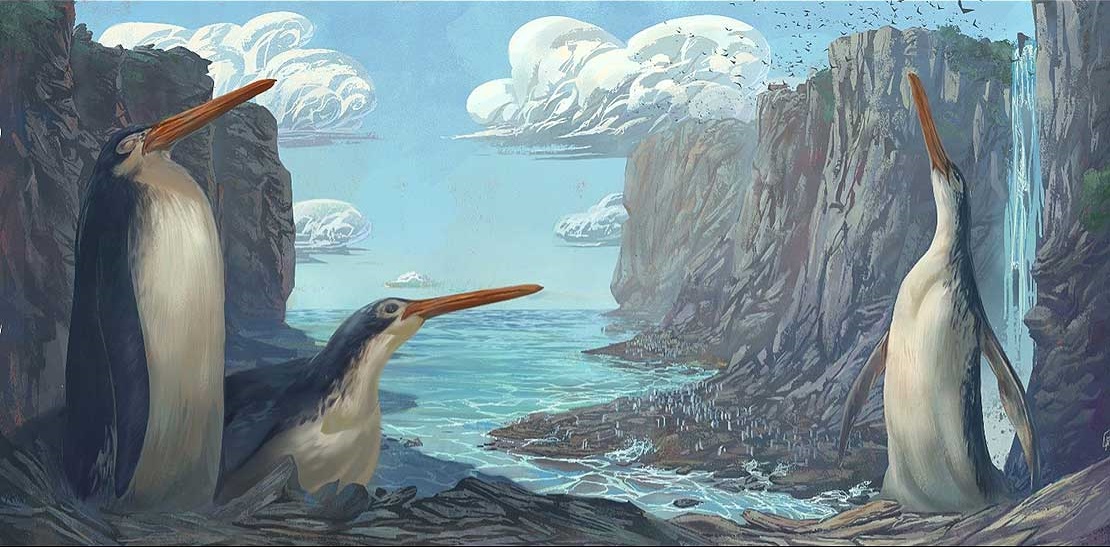
The Kawhia giant penguin Kairuku waewaeroa. Image credit: Simone Giovanardi.
Researchers from Massey University and Bruce Museum (Connecticut, United States) visited Waikato Museum Te Whare Taonga o Waikato to analyse the fossil bones of the ancient penguin. The team used 3D scanning as part of their investigation and compared the fossil to digital versions of bones from around the world. 3D scanning also meant the team could produce a 3D-printed replica of the fossil for the Hamilton Junior naturalists. The actual penguin fossil was donated by the club to the Waikato Museum in 2017.
Dr Daniel Thomas, a Senior Lecturer in Zoology from Massey's School of Natural and Computational Sciences, says the fossil is between 27.3 and 34.6 million years old and is from a time when much of the Waikato was under water.
"The penguin is similar to the Kairuku giant penguins first described from Otago but has much longer legs, which the researchers used to name the penguin waewaeroa -- Te reo M?ori for 'long legs'. These longer legs would have made the penguin much taller than other Kairuku while it was walking on land, perhaps around 1.4 metres tall, and may have influenced how fast it could swim or how deep it could dive," Dr Thomas says.
"It's been a real privilege to contribute to the story of this incredible penguin. We know how important this fossil is to so many people," he adds.
"Kairuku waewaeroa is emblematic for so many reasons. The fossil penguin reminds us that we share Zealandia with incredible animal lineages that reach deep into time, and this sharing gives us an important guardianship role. The way the fossil penguin was discovered, by children out discovering nature, reminds us of the importance of encouraging future generations to become kaitiaki [guardians]."
Mike Safey, President of the Hamilton Junior Naturalist Club says it is something the children involved will remember for the rest of their lives.
"It was a rare privilege for the kids in our club to have the opportunity to discover and rescue this enormous fossil penguin. We always encourage young people to explore and enjoy the great outdoors. There's plenty of cool stuff out there just waiting to be discovered."
Steffan Safey was there for both the discovery and rescue missions. "It's sort of surreal to know that a discovery we made as kids so many years ago is contributing to academia today. And it's a new species, even! The existence of giant penguins in New Zealand is scarcely known, so it's really great to know that the community is continuing to study and learn more about them. Clearly the day spent cutting it out of the sandstone was well spent!"
Dr Esther Dale, a plant ecologist who now lives in Switzerland, was also there.
"It's thrilling enough to be involved with the discovery of such a large and relatively complete fossil, let alone a new species! I'm excited to see what we can learn from it about the evolution of penguins and life in New Zealand."
Alwyn Dale helped with the recovery of the fossil. "It was definitely one of those slightly surreal things to look back on -- absolute bucket list moment for me. After joining JUNATS there were some pretty iconic stories of amazing finds and special experiences -- and excavating a giant penguin fossil has got to be up there! A real testament to all the parents and volunteers who gave their time and resources to make unique and formative memories for the club members."
Taly Matthews, a long-time member of the Hamilton Junior Naturalist Club, and who works for the Department of Conservation in Taranaki, says, "Finding any fossil is pretty exciting when you think about how much time has passed while this animal remained hidden away, encased in rock. Finding a giant penguin fossil though is on another level. As more giant penguin fossils are discovered we get to fill in more gaps in the story. It's very exciting."
Simone Giovanardi, Daniel T. Ksepka, Daniel B. Thomas. A giant Oligocene fossil penguin from the North Island of New Zealand. Journal of Vertebrate Paleontology, 2021; DOI: 10.1080/02724634.2021.1953047
How making a film exploring Indigenous stories of the night sky enriched my perspective as a scientist

Have you ever looked up at the night sky and wondered what it all means? You are not alone. Billions of people before you have done the same. Looking at the stars to make sense of the universe, and our lives on Earth, extends back many tens of thousands of years, across all cultures.
A new 360 degree immersive film, Star Dreaming, set to screen around Australia and internationally, draws on our common wonder about the universe, exploring ancient culture and astrophysics, side by side.
In Australia, the world’s longest continuous culture can also claim to provide some of the first astronomers. Indigenous Australians attach rich meaning to the night sky, and its connection to the land and our environment.
Also in Australia, much more recently, astrophysics has become one of the nation’s most successful and prominent sciences. In Western Australia, one of the world’s largest astronomy projects is being hosted, the Square Kilometre Array (SKA).
On the land of the Wajarri Yamaji people, in mid-west WA, the SKA will be the largest radio telescope ever built, detecting radio waves from galaxies forming soon after the Big Bang, 13.8 billion years ago. This massive project will be completed towards the end of this decade.
Read more: Aspiration vs delivery: the long road to the Square Kilometre Array
Over the last 13 years, I have been privileged to work with colleagues from Yamaji Art in Geraldton, exploring Indigenous stories about the sky alongside the stories of the Greeks and Romans, and the astrophysical stories about the universe. We have learned from each other and taken our experience to the world through art exhibitions.
Three years ago, we started work on Star Dreaming. It has been filmed using a 360 degree camera and is designed to be shown inside a dome, like a planetarium. Star Dreaming is an immersive experience, combining live action and CGI animation, and a unique cross-cultural exploration.
The film is a narrative, following two children from Geraldton as they discover the astrophysical story of the universe and Yamaji stories of the sky and land. Max Winton and Amangu girl Lucia Richardson make their acting debuts, as do I as “the scientist”.
Filming was interesting and demanding. Over four days, we filmed prototype SKA antennas (from a drone), the landscape (including in scorching hot creek beds), and indoor sequences. The director, Perun Bonser (an Ngarluma man), Julia Redwood (producer), and cast and crew had their work cut out.
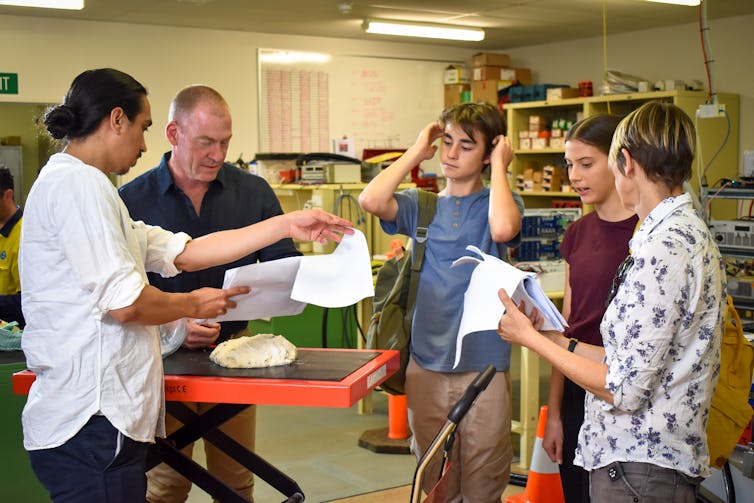
The film starts with the Big Bang, the origin of all matter and energy, space and time. We look at the life cycle of stars, and how stars produced the atoms that make up the Earth — and us. Without stars, we would not exist. We explain the speed of light, the temperatures and colours of stars, and the basics of how the SKA works.
This is interwoven with Indigenous stories, like the astonishing Emu in the Sky, which appears after dusk in March/April toward the east, appearing to sit on its nest on the horizon. This is the same time of year when real emus lay their eggs and tend to them.
When the Emu in the Sky appears, Indigenous people know it is time to hunt for the eggs. As Yamaji artist Margaret Whitehurst says in the film, “good tucker!” Margaret and fellow Yamaji artist and poet Charmaine Green lead the kids on an egg hunt, and cook up the results.

Yamaji artists Barbara and Kevin Merritt show the kids the Seven Sisters, the Indigenous story of a hunter pursuing seven sisters across the country and into the night sky — repeated every night.

Turns out, this is almost identical to an ancient story of the Greeks and Romans for this group of stars, also identified as seven sisters (the Pleiades) being chased by a hunter (Orion).
How is that cultures on opposite sides of the Earth, separated by thousands of years, arrive at the same story for the same group of stars? These are mysteries that hint at common origins.
As a scientist, I’ve learned so much from being with the artists and sharing our stories together. I have a much richer perspective on the universe and Indigenous culture, well beyond the night sky, as a result of our time together.
Read more: Songlines: Tracking the Seven Sisters is a must-visit exhibition for all Australians
Another Yamaji artist, Wendy Jackamarra, paints the Jewel Box, a colourful cluster of stars right next to the Southern Cross that can only be seen with a telescopes; it comes to life on the screen, as does Margaret’s painting of the Emu in the Sky, and Barbara’s painting of the Seven Sisters. The paintings reveal themselves through CGI, telling their stories as the different elements come together.
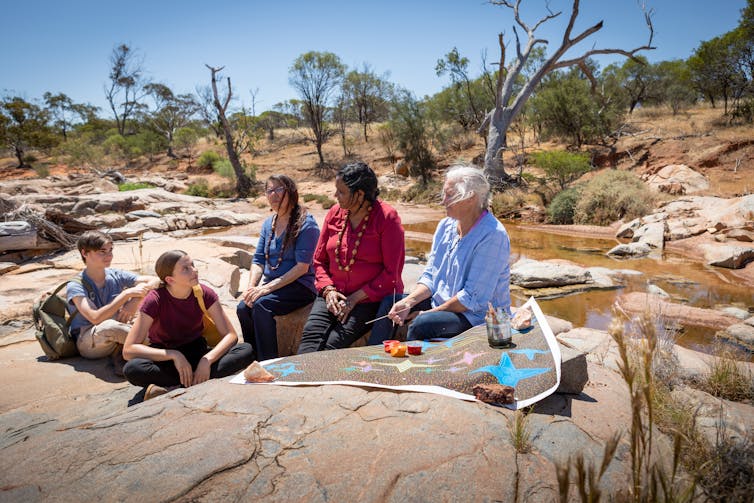
I’ve been asked, “what do you want people to take away from the film?” Of course, I want people to come away with a better understanding of Indigenous culture, and to have learned something about the science. But, to me, the film captures intertwined cultural and scientific perspectives that are common to all peoples.
The atoms in our bodies are produced in stars and scattered into space when those stars die, providing the building blocks for planets and life. For many millennia, humans have sat under the night sky and watched all this unfold, our different cultural stories underpinned by our common sense of wonder.
Differences in race, religion, culture, politics, and society melt away with that perspective. We all experience a shared sky, a common origin.
Star Dreaming is screening at the WA Maritime Museum in Fremantle, WA. Keep an eye out for it in major cities and planetaria across Australia before the end of 2021. In 2022 it will be screened around the world. All aspects of the film and the project, including its name, were derived from consultations and formal sign-off between the Indigenous participants, Prospero Productions, and the scientists.![]()
Steven Tingay, John Curtin Distinguished Professor (Radio Astronomy), Curtin University
This article is republished from The Conversation under a Creative Commons license. Read the original article.
Meet the prehistoric eagle that ruled Australian forests 25 million years ago
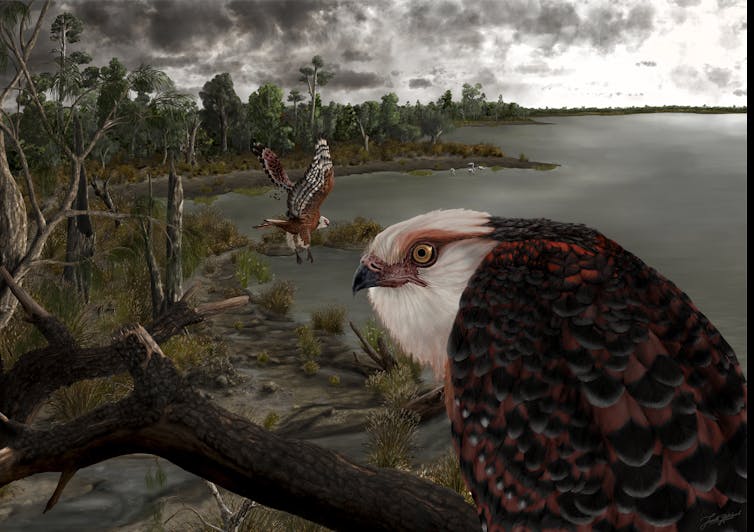
The parched deserts of the South Australian outback were once a rainforest filled with a rich variety of birds and animals. Now, thanks to a new fossil discovery, we know the apex predator of this lush ecosystem was a newly discovered eagle that lived 25 million years ago.
We discovered the fossil remains of this species, named Archaehierax sylvestris, in prehistoric sediments at Lake Pinpa, 400 kilometres north of Adelaide.
The fossil, unearthed in March 2016, is described in a newly published paper in the journal Historical Biology.
It is one of the most complete raptor fossils from this time period found anywhere in the world. It comprises 63 bones, which is truly exceptional; most fossil birds are named on the basis of just a single bone.
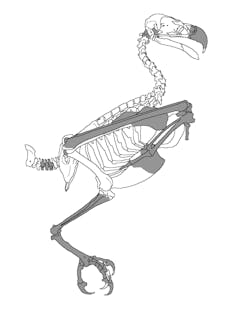
We have named it Archaehierax sylvestris, meaning “ancient hawk belonging to the forest”. It was slightly smaller than a wedge-tailed eagle, with talons spanning 15 centimetres that allowed it to grab prey the size of a koala or possum. And it had short, robust wings adapted to fly within the cluttered confines of a forest, rather than to soar through the skies.
With its relatively short wings and long legs, this eagle was likely an ambush hunter, waiting for unwary prey to approach, rather than a soaring forager. In the forest, it probably preyed on medium-sized marsupials. But from a high perch, it would also have made forays over the lake where it could catch ducks and flamingos.
Read more: Ancient bilby and bandicoot fossils shed light on the mystery of marsupial evolution
Fossil Treasure Trove
Since the 1970s, the barren, salt-crusted sediments in South Australia’s arid north have yielded a range of bone fragments, teeth, and other fossils of the animals that lived there — many of which would have been prey for Archaehierax.
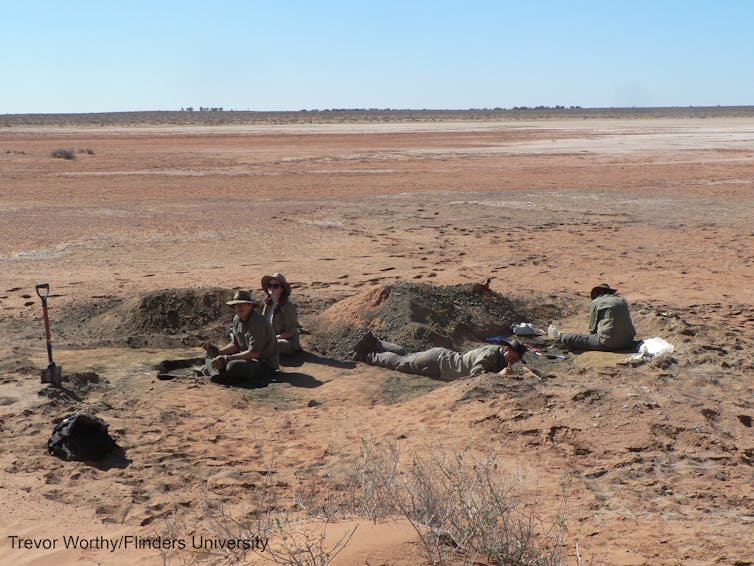
These fossils include a host of mammals, ranging from wombat ancestors the size of a small cow, through a range of tree-dwelling herbivores such as possums and koalas, to small terrestrial carnivores no bigger than a mouse.
These animals lived around a large lake where crocodiles and turtles abounded, and freshwater dolphins played.
Waterbirds were abundant, including cormorants, several types of flamingo, four species of duck, and Presbyornis, a bizarre long-legged fowl that went extinct elsewhere in the world 20 million years earlier. Many smaller forest birds such as songbirds, parrots and rails are also known, but most are not yet described.
Global Eagle Family
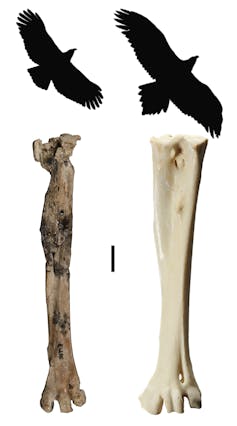
Archaehierax was clearly a member of the raptor family, which includes most hawks and eagles. But its bones differed in many ways from all other raptors, including similar-aged ones from elsewhere in the world.
Archaehierax sylvestris was not the only raptor we found at Lake Pinpa. Isolated bones show a smaller eagle also lived in these forests, but the fossils are too fragmentary to give this species a name.
There is another fossil raptor known from deposits at Riversleigh World Heritage Area in northwest Queensland. Pengana robertbolesi is a few million years younger than Archaehierax, and not closely related to the Pinpa bird. It was adapted to capture prey in holes in trees.
Our analysis suggests Archaehierax was probably not closely related to any living raptor. Rather, it represented an ancient lineage that split off near the base of the raptor family tree. This is consistent with previous genetic analysis suggesting most living groups of hawks and eagles evolved only in the past 20 million years — roughly 5 million years after Archaehierax lived and died.
Previously, raptor fossils as ancient as 25 million years old were only known from Europe and North America. Archaehierax sylvestris and its smaller contemporary show that Australia was an important geographic location in the early global evolution of raptors.
Australia is already widely understood to be a cradle of evolution of songbirds, and our island continent doubtless played a similar role in the evolution of other types of birds too.
Read more: Meet the giant wombat relative that scratched out a living in Australia 25 million years ago
These raptors and the earliest songbirds lived in temperate rainforests. Back then, the area around what is now Lake Pinpa was located more than 1,100km south of where Adelaide is today, at a latitude equivalent to present-day Fiordland at the southwestern tip of New Zealand.
In the 25 million years since, continental drift has carried Australia and the fossils north at 6 centimetres per year (the speed at which your fingernails grow), travelling more than 1,500km.
The rainforest where these birds lived is now the arid outback. And there are almost certainly many fossils awaiting discovery there that will tell us more about how Australia’s unique birds evolved.![]()
Trevor H. Worthy, Associate Professor, Vertebrate Palaeontology Group, Flinders University; Aaron Camens, Palaeontologist; Ellen K. Mather, PhD Candidate, Flinders University; Jacob C. Blokland, Vertebrate Palaeontology PhD Candidate and Casual Academic, Flinders University, and Mike Lee, Professor in Evolutionary Biology (jointly appointed with South Australian Museum), Flinders University
This article is republished from The Conversation under a Creative Commons license. Read the original article.
Decoding the music masterpieces: Stravinsky’s The Firebird

On June 25 1910, Igor Stravinsky’s ballet The Firebird opened to acclaim at the Paris Opéra. The success propelled its composer, then aged 28, to international prominence, a position of influence he would retain for six decades.
The ballet’s myth-like storyline features a magical Firebird, who helps a young prince rescue a coterie of princesses from Kashchey, an evil sorcerer.
Based on the eponymous bird of Russian folklore, it has ultimately propagated some myths of its own - relating to the artistic ideals of the team who created it, and the narrative’s historical accuracy.
Most crucial, though, is the composer himself who, through successive elaborations of his own biography, engaged in myth-making on an extensive scale. Notable for what Stravinsky expert Richard Taruskin terms his “celebrated mendacity”, questions have lingered as to whether certain of the composer’s early musical ideas were as original as they seemed.
Conservative ‘Modernists’
After The Firebird, Stravinsky’s early career was bolstered by the triumph of his next two works: Petrushka and The Rite of Spring. Given the impact of the last work in particular, it is customary to note Stravinsky’s pivotal influence on the development of musical modernism.
Yet in 1910, he was a largely untested novice. The Firebird was a production of the Ballets Russes, newly formed by its director, the Russian impresario Sergei Diaghilev. For over a decade, Diaghilev had been a leading member of a group known as “Mir iskusstva” (World of Art), the title of their short-lived magazine.

Their artistic ideals, however, were far from modern. A collection of conservatives, many were from aristocratic backgrounds with a tendency toward romantic nationalism. They were aligned against both the “realist” modernism of the previous generation, and the evolving spiritual modernism of fellow Russian composers like Scriabin. Their principles were those against which socialists would soon react.
In a series of ventures for Parisian audiences from 1906, Diaghilev looked to Russia’s past for his sources. After discovering how expensive opera was to produce, he settled exclusively on ballet from 1910. Again, however, his musical choices were initially conservative.
Repurposed Myths
Magical birds are not without precedent in folklore, having featured in the childhood tales of many countries, such as Germany, where a similar creature appears in Grimm’s The Golden Bird.
Yet in Russia, the Firebird had a special significance, emerging as a nationalist symbol over the latter decades of the 19th century. Characterised as a bird of great beauty, it brought peril to those who tried to catch it or steal its glowing feathers.
In the Ballets Russes production, however, far from causing misfortune, when the young prince catches the Firebird it actually helps him.
Historians have noted the story is similar to lines from Russian poet Yakov Polonsky’s children’s poem, Winter Journey (1844). Yet the synopsis evidently is a conflation of two separate folk tales, developed by Mir iskusstva members as an export vehicle for foreign audiences.
Led by the choreographer Mikhail Fokine, the stories were repurposed by Alexandre Benois and Alexander Golovin, both important contributors to Ballets Russes design, and Nikolai Tcherepnin, the composer originally selected to write the Firebird’s music.
In short, the popular folk tale of Ivan-Tsarevich, and his quest for a beautiful princess (in which the Firebird features tangentially), was blended with a separate folk tale about the evil, immortal Kashchey, who dies at the hand of a prince who possesses a magical egg.
‘New’ Music
Fokine, who by typical accounts was a difficult choreographer to work with, likely caused three composers to exit or decline the project. Hence, the fortuitous opening for Stravinsky, a student of Nikolai Rimsky-Korsakov, the elder statesman of Russian music whose most progressive works were little known in the West.

According to Fokine’s autobiography, Stravinsky sat at the piano, improvising and accompanying as the choreographer first developed his ideas for the work. If this account is accurate, never again would the composer allow himself to appear so ancillary to the creative process.
The most noticeable element of Stravinsky’s score is the way harmonious, tonal music is given to the mortal characters – Ivan-Tsarevich and the princesses – while chromatic, non-tonal music underscores the supernatural others.
This clever device is, in fact, a Russian tradition. The source can be traced as far back as Mikhail Glinka’s opera Ruslan and Lyudmila (1842), where a strikingly non-tonal descending scale depicts the supernatural abduction of a bride from her traditional (and tonal) wedding feast.
Stravinsky, an observant student, had closely scrutinised the innovative, and increasingly non-tonal, musical works of Rimsky-Korsakov, where the device was also prevalent.
He elaborated on one of Rimsky’s theories to create what has been called a “ladder of thirds”. Analysis from recent decades by musicologist Taruskin, has detected this schematic underpinning large portions of The Firebird.
The weirdly alternating pattern of thirds generates the supernatural music of the introduction, the Firebird’s chromatic “swirls” and Kashchey’s motifs.

Most beautifully, it also provides the hushed musical transition from the underworld to the final tableau, where Ivan-Tsarevich and the princesses celebrate victory.
Yet for the mortal, tonal characters, Stravinsky, in places, incorporates folk melodies, another popular tradition among Russian composers.
Contrast Stravinsky’s setting of a folk-tune in the Khorovod of the Princesses from The Firebird, with Rimsky-Korsakov’s setting of the same melody in his Sinfonietta.
Stravinsky was always squeamish when questioned about his use of folk melodies, even flatly denying it. Yet as later analysis has shown, other works of this period, such as The Rite of Spring, feature them in abundance.
The influence of Rimsky-Korsakov can be noted in other ways, too, not least in his own opera about the very same Kashchey (1902), and his final opera, The Golden Cockerel (1908), also, tellingly, about a magical bird.
Indeed, if one wanted to really push the point, mention could be made of the notorious similarity of the Mt Triglav episode from Rimsky-Korsakov’s opera-ballet Mlada to Stravinsky’s Danse infernal in The Firebird where, in short, the plagiarism seems breathtaking.
The ‘Hit’
But that would miss the most important point: for audiences in the West, The Firebird was a hit. These fantastical tales of Russia’s past were woven, almost accidentally it seems, with a musical work that on foreign soil appeared unexpectedly modern.
The belated development of Russian music had for a century remained relatively hidden to the rest of the world. And after a long gestation, it was Stravinsky who revealed many of its treasures.
It was as if a baton had passed from one generation to the next, through the smallest of steps. The real genius of Stravinsky is that he was to run so far with it, and so quickly.![]()
Scott Davie, Lecturer in Piano, School of Music, Australian National University
This article is republished from The Conversation under a Creative Commons license. Read the original article.
When It Comes To Communication Skills Maybe We’re Born With It
World-Famous Sardine Migration Explained By Genomics
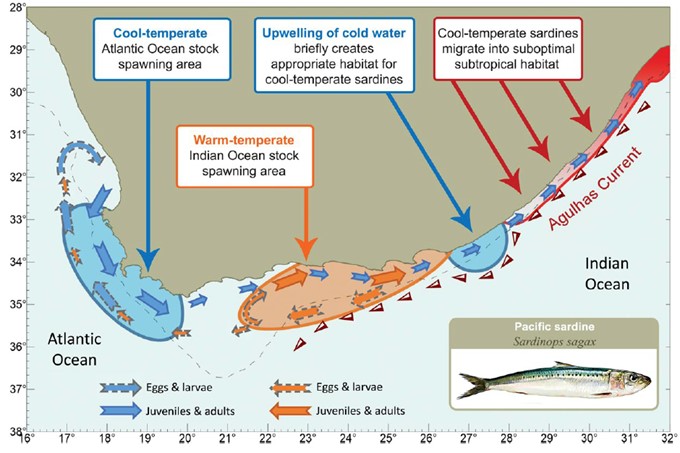
Children’s Dislike Of Cauliflower Or Broccoli Could Be Written In Their Microbiome
Winged Microchip Is Smallest-Ever Human-Made Flying Structure
The Origin And Legacy Of The Etruscans
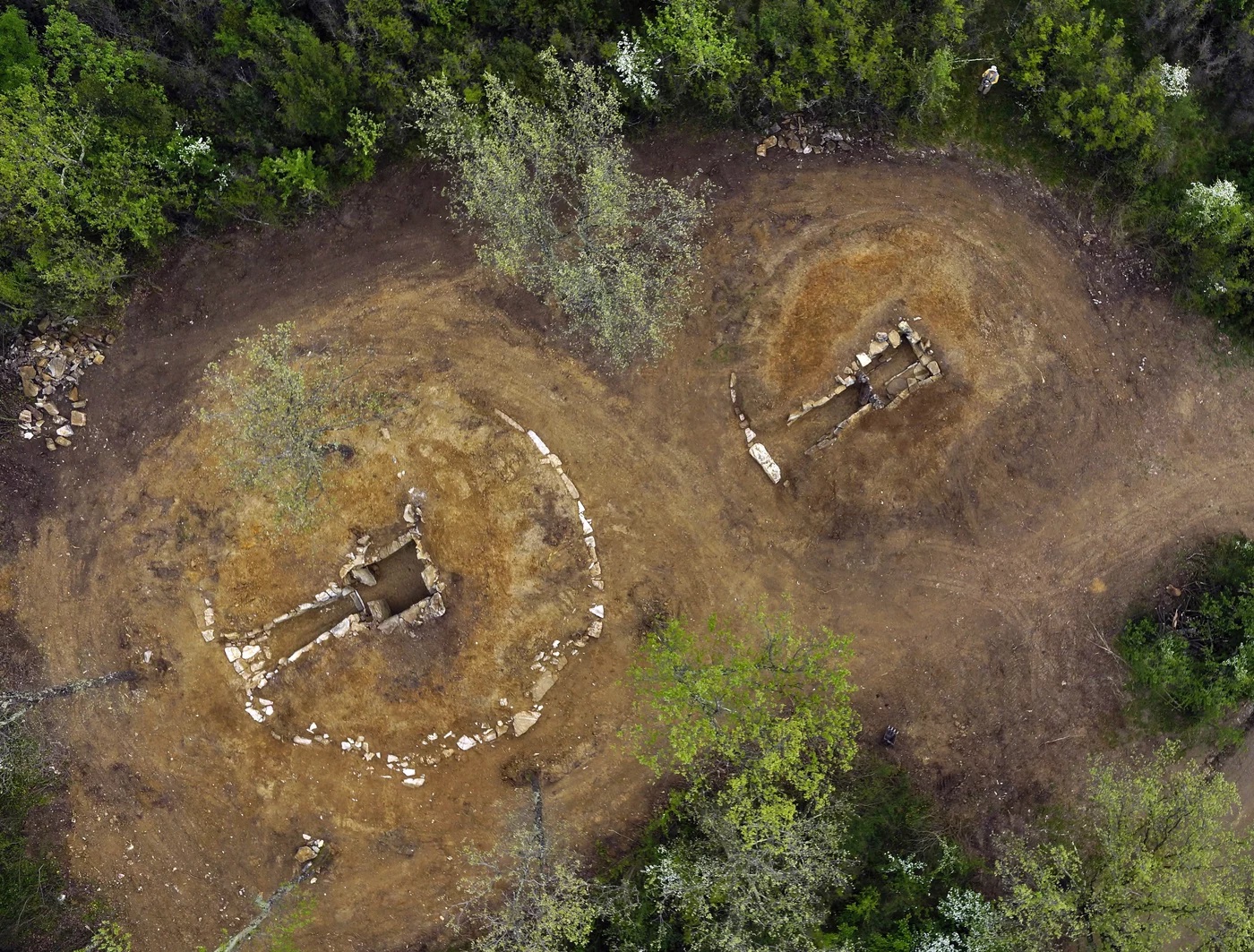
In The Race To Reduce Car Emissions Don't Forget Longevity
Insulin Resistance Doubles Risk Of Major Depressive Disorder
Eating Less Fat May Save Your Hair
Disclaimer: These articles are not intended to provide medical advice, diagnosis or treatment. Views expressed here do not necessarily reflect those of Pittwater Online News or its staff.

